Advisory Council on Historic Preservation
Each year, millions of travelers visit America’s historic places. The National Trust for Historic Preservation defines heritage tourism as “traveling to experience the places, artifacts, and activities that authentically represent the stories and people of the past and present.” A high percentage of domestic and international travelers participate in cultural and/or heritage activities while traveling, and those that do stay longer, spend more, and travel more often. Heritage tourism creates jobs and business opportunities, helps protect resources, and often improves the quality of life for local residents.
The ACHP has encouraged national travel and tourism policies that promote the international marketing of America’s historic sites as tourism destinations. The ACHP also engages in ongoing efforts to build a more inclusive preservation program, reaching out to diverse communities and groups and engaging them in dialogue about what parts of our national legacy should be more fully recognized, preserved, and shared.
The ACHP developed Preserve America , a national initiative to encourage and support community efforts for the preservation and enjoyment of America’s cultural and natural heritage. In partnership with other federal agencies, the initiative has encouraged the use of historic assets for economic development and community revitalization, as well as enabling people to experience and appreciate local historic resources through heritage tourism and education programs. These goals have been advanced by an Executive Order directing federal agencies to support such efforts, a community designation program, and a recognition program for outstanding stewardship of historic resources by volunteers.
From 2004-2016, over 900 Preserve America Communities were designated in all 50 states, the District of Columbia, and two territories, as well as nearly 60 Preserve America Stewards . Many Preserve America Communities are featured in “Discover Our Shared Heritage” National Register on-line travel itineraries . From 2006 through 2010, the National Park Service (in partnership with the ACHP) awarded more than $21 million in Preserve America Grants to support sustainable historic resource management strategies, with a focus on heritage tourism.

These links are being provided as a convenience and for informational purposes only; if they are not ACHP links, they do not constitute an endorsement or an approval by the ACHP of any of the products, services or opinions of the corporation or organization or individual. The ACHP bears no responsibility for the accuracy, legality, or content of the external site or for that of subsequent links. Please contact the external site for answers to questions regarding its content, including its privacy policies.
Related resources.

19 Interesting Facts About World Heritage Sites
I have been visiting UNESCO World Heritage Sites since I began traveling full time in 2007. Since then I have visited over 375 sites around the world and have photographed all of them.
There are no typical world heritage sites. They come in all shapes and sizes, from a few square meters to sites larger than most countries. Some are ancient ruins while others are living, functioning cities.
I’ve compiled 27 interesting facts about world heritage sites which I hope you find interesting, and provide some illumination into the greatest places our world has to offer!
1) There are currently 1,092 world heritage sites. They are divided between 845 cultural, 209 natural, and 38 mixed sites.
2) The country with the most world heritage sites is Italy with 54.
3) There are 32 countries with at least 10 world heritage sites, 13 countries with at least 20 sites, 8 with at least 30 sites, and 5 with 40 or more.

4) The most sites inscribed to the list in a single year was 61 in 2000.
5) The fewest sites inscribed to the list in a single year was 7 in 1989.
6) The first world heritage sites to be inscribed were in 1978. There were 12 put on the list that year:
- Aachen Cathedral ( Germany )
- City of Quito ( Ecuador )
- Galápagos Islands (Ecuador)
- Historic Centre of Kraków ( Poland )
- Island of Gorée (Senegal)
- L’Anse aux Meadows National Historic Site ( Canada )
- Mesa Verde National Park ( United States )
- Nahanni National Park (Canada)
- Rock-Hewn Churches, Lalibela (Ethiopia)
- Simien National Park (Ethiopia)
- Wieliczka and Bochnia Royal Salt Mines (Poland)
- Yellowstone National Park (United States)
7) The largest world heritage site is the Phoenix Islands Protected Area in Kiribati with an area of 408,250 km 2 . The site is mostly ocean as the actual land area of Kiribati is only 811 km 2 . The size of this site is slightly larger than Paraguay.

8) The smallest world heritage site is the Holy Trinity Column in Olomouc, Czech Republic which has an area of 200 m 2 . I was able to walk around the entire column in 52 seconds and a slow walking pace (yes, I timed it!)
9) The site which is spread across the most countries is the Struve Geodetic Arc which is spread across 10 countries: Belarus, Estonia, Finland, Latvia, Lithuania, Norway, Moldova, Russia , Sweden, Ukraine.
10) The country with the highest percentage of its area on the world heritage list is Vatican City, which is over 100%. The reason it is over 100% is that they actually have two world heritage sites. One is Vatican City itself and other the Historic Center of Rome which is a joint site with Italy, and it includes sites which the Vatican has extraterritorial control over. (Extraterritoriality is what allows an embassy to operate under the laws of its country, even though it is on the land of another country)
11) There are 26 countries who are signatories to the world heritage convention without a world heritage site: Bahamas , Bhutan, Brunei Darussalam, Burundi, Comoros, Cook Islands, Djibouti, Equatorial Guinea, Eswatini (formerly Swaziland), Grenada, Guinea-Bissau, Guyana. Kuwait, Liberia, Maldives, Monaco, Niue. Rwanda, Saint Vincent and the Grenadines, Samoa, Sao Tome & Principe, Sierra Leone, South Sudan, Timor-Leste, Tonga , and Trinidad and Tobago .

12) The most visited world heritage site is Paris, Banks of the Seine , which is the third most visited city in the world, and the most visited city in which most of it is a world heritage site.
13) There are two sites which are restricted to women: Okinoshima Island, Japan , and Mouth Athos, Greece . Both are religious communities which are only for men.
14) Only two sites have ever been removed from the world heritage list: the Arabian Oryx Sanctuary of Oman, and the Dresden Elbe Valley in Germany. A third site, Bagrati Cathedral in Georgia, was partially removed. The site consisted of the cathedral and a monastery, but only the cathedral was removed.
15) There are currently 54 world heritage sites which are listed as being “in danger”. They include 38 cultural and 16 natural sites.
16) The least visited world heritage site would be difficult to ascertain because there are some sites which are incredibly remote and are hardly ever visited. There are other sites for which all visitors are barred to protect the site from damage. The most remote may be Heard and Macdonald Islands in Australia . They are in the South Indian Ocean and ships only visit once every few years. Other sites like Surtsey in Iceland bar all human visits, save for scientists who visit a few times a decade.

17) The country with the largest amount of area devoted to world heritage protection is the United States with 465,135.4 km 2 . Most of this consists of the Papah?naumoku?kea Marine Sanctuary in Hawaii and Wrangell-St Elias/Glacier Bay National Parks in Alaska .
18) The most disjointed world heritage site is the Rock Art of the Mediterranean Basin on the Iberian Peninsula. There are 727 different locations of neolithic rock art that make up the site. They are located from Grenada to Catalonia all along the coast of Spain.
19) A war was once fought over a property becoming a world heritage site…..sort of. In 2008 the Temple of Preah Vihear in Cambodia was added to the world heritage list. The site, which is located on the Thai/Cambodian border, had always been claimed by Thailand but was given to Cambodia during mediation in the 1960s. After the site was added to the list, Thai forces streamed across the border to take control of the temple, which lead to a conflict between the two countries which lasted for several months.

Gary began traveling the world in 2007. His travels have taken him to over 200 countries and territories and 400 UNESCO World Heritage Sites. He is a 3x Lowell Thomas Award winner and a 3x North American Travel Photographer of the Year.
Why Heritage Tourism Is More Popular Than Ever
By Jordi Lippe-McGraw

All products featured on Condé Nast Traveler are independently selected by our editors. However, when you buy something through our retail links, we may earn an affiliate commission.
In the years before every waking moment of our lives was documented online, knowledge of our ancestors was far more limited, with stories of one's heritage more often reserved to the confines of family lore. But now, today's access to technology is actually increasing our curiosity about the past—and making it easier than ever to physically retrace our heritage in destinations around the world.
For some travelers, turning to their family tree for inspiration has become the latest—and most interesting—way to plan a trip. And while the idea of traveling to investigate your legacy and culture isn’t exactly something new, there are more tools now to make it a reality. “Once pegged as the stereotypical Irish Americans pursing their lips to kiss the Blarney Stone, Americans are spreading far and wide to experience their cultural and spiritual roots and catalyzing the rise of operators, agencies, and guides dedicated to this segment,” Christina Tunnah, Regional Manager for the Americas at World Nomads , told Condé Nast Traveler .
She added, “Not just for the bucket list boomer crowd, this theme serves as a significant thread of self-discovery amongst millennials who choose to study abroad and become digital nomads in places where they have a tendril of familial connection in search of generational sense of self.”
The rise in popularity of family genealogy as a TV genre (TLC’s Who Do You Think You Are , PBS’ Finding Your Roots and Genealogy Roadshow , and CNN’s Roots ) has helped spark this interest in family history, with people taking advantage of genealogy research via sites like Ancestry.com and even DNA testing companies like 23andme and National Geographic’s Genographic project. In fact, according to a multi-country study done by Ancestry.com in November 2014, online family history research in the U.S. has grown fourteen-fold in the past decade.
Kesha Robertson, 30, an Amsterdam-based blogger, told Traveler her reasons for visiting Slovakia. “I was always enchanted by my grandfather. There was no one else I knew quite like him. I grew up in New Zealand, a world away from Europe,” she said. “I was the only person I knew with Slovakian heritage. It seemed like such an exotic faraway place, I couldn't even fathom what it would be like. The lure to go there was always strong, it was like the piece of a puzzle I needed to put in place.”
In particular, destinations with large diaspora populations in the U.S., such as Ireland, Italy, and China, have seen an uptick in visitors looking to connect with their ancestral homes directly, according to World Nomad. Whole countries like Scotland have fully embraced this concept calling 2017 the Year of History, Heritage, and Archaeology, encouraging visitors to uncover their Scottish roots all the way back to the Neolithic era.
Touring companies are seeing a boom as well. Audley Travel revealed to Traveler that they've been getting increased requests for custom itineraries exploring family ties to different destinations. In particular, they've worked with a lot of second generation Japanese Americans heading back to Japan, especially to Okinawa . And World Nomads just partnered with Ancestry.com to offer one winner (and a guest) the opportunity to trace their family history and take a trip to walk in the footsteps of their ancestors with their Relative Distance campaign .

Uniworld Boutique River Cruise Collection is launching a Jewish Heritage cruise down the Danube later this year with stops in Wertheim, Germany (pictured).
So, how can you take advantage of this growing trend and embark on a journey of your own? Here are some tips.
1. Do some research beforehand
Don’t get overwhelmed at the daunting prospect of having to tackle a tidal wave of family information, archives, photos, or talks with your immediate and extended family members (though it helps to have that all as a starting point). At a most basic level, a little bit of search engine snooping can identify the basics: country, province/state and towns where you know for a fact you have a connection.
Assemble maiden names of parents and grandparents and search on maps for any street names that may have the family name, you’d be surprised at what you find. For more robust family tracing, you can pay for more access to records on sites like Ancestry.com, or join the National Geographic’s Genographic project where you have the option to be connected with people who share your DNA and family name.
2. Rent a car and make your own itinerary
It’s best for adventures like this to build out spots where you want to stop and rent a car to visit on your own time. It allows you to detour and take as much time as you need in any particular destination. Historical societies of that town are a great source as well, so set up an appointment or set aside a few hours to rummage through the artifacts. Also, try to book through Airbnb or local lodges as much as possible. This gives another opportunity to meet locals who may offer some insight into your family background.
3. Or use a tour company for a more general background
If you’re not so focused on the details of your family history, but would rather have a deeper understanding of your heritage, then consider a themed tour. Uniworld Boutique River Cruise Collection is launching its Jewish Heritage themed cruises in May, where guests will travel from Munich to Cologne, passing through Dachau, Nuremberg, Frankfurt, and Wertheim, towns and cities renowned for their centuries-old Jewish legacy. Andy Fraser, the Tartan Butler at The Balmoral , helps guests with ancestral ties to Scotland trace their heritage during their stay by chatting with the city’s foremost experts before your arrival. And those who have traced their roots to South Africa can explore them in-depth on South African Airways Vacations’ 12-Day Cultural Roots of South Africa tour , which visits Johannesburg and KwaZulu-Natal Province, where Durban (home to the largest Indian population outside of India) is situated.

Emily Saladino

Mark Ellwood
By signing up you agree to our User Agreement (including the class action waiver and arbitration provisions ), our Privacy Policy & Cookie Statement and to receive marketing and account-related emails from Traveller. You can unsubscribe at any time. This site is protected by reCAPTCHA and the Google Privacy Policy and Terms of Service apply.

- GENERAL TRAVEL

Heritage Travel: What it is & How it Can Benefit You

Madison Jackson lives in Pittsburgh, PA and is the Director of Jewish Student Life at Carne...
- button]:border-none [&>button]:bg-white [&>button]:hover:cursor-pointer [&>button]:hover:text-cyan-400"> button]:hover:text-cyan-400 [&>button]:bg-white hover:cursor-pointer" height="1em" width="1em" xmlns="http://www.w3.org/2000/svg">
Door post after door post was pointed out to me. We stopped in a court yard that had tenement style houses surrounding it on all sides. We stepped inside what seemed nothing more than a run down, dingy entrance looking practically near collapse. Peering closely at the entrances, I saw an empty carved out space, diagonal in the shape of a mezuzah (a scroll with Hebrew verses on it from the Torah, inside a decorated case). I saw two circles placed perfectly across from each other, showing where once a mezuzah had hung.

Learn about your family history & heritage while doing programs abroad—you’ll love the experience!
This was Praga. Located across the Vistula River opposite Warsaw’s Old Town, this area, sometimes referred to as “alternative Warsaw,” has been called dangerous. But, in years past, this was also the home of Warsaw’s Jews. As a Jew myself, I didn’t expect to learn about this place while interning abroad in Warsaw—a place where the majority of my people once lived. We walked through Praga and our tour guide pointed out different types of traces on doorposts of former Jewish family homes. Unlike the rest of the city, this area was barely destroyed during the war, leaving the homes of families in tact and the authentic representation of Jewish life in Warsaw prior to the war still in existence.
Exploring the mezuzah traces through heritage travel allowed me to learn the stories of Jewish families who had lived in Warsaw, not from the structure of something that was rebuilt, but from the actual traces of what remained.
There’s never been a better time to participate in heritage travel—and participating in historical travel during travel programs abroad just makes sense. Read on to learn how YOU can incorporate heritage tourism into your next great international adventure, like I did.
FAQs on heritage travel

Get up close and personal with hundreds of years of history.
What is Heritage Tourism?
According to the National Trust for Historic Preservation, Heritage Tourism is “traveling to experience the places, artifacts and activities that authentically represent the stories and people of the past and present. It includes cultural, historic, and natural resources.” In other words, Heritage Tourism is a type of travel where you search for an authentic understanding of how something, or a people, was like.
The three main types of Heritage Tourism sites are natural, cultural, and built. Natural heritage sites include landforms and rural scenery, cultural heritage tourism involves attending festivals or a place that sells traditional products, and built heritage sites encompass places such as monuments and historic homes. Through studying, volunteering, interning and teaching abroad there are several different ways in which you can engage with the different types of historic travel and heritage tourism.
- Study Abroad . Studying abroad provides a unique opportunity to live what you are studying. For example, instead of sitting in school reading about the Holocaust, if you study abroad in Europe, your classroom becomes your surroundings and you can visit places from a textbook firsthand. You can walk on the natural grounds where your ancestors once lived and enter still standing historic synagogues and other places of worship. Study abroad is a great time to explore cultural heritage tourism!
- Volunteer Abroad . Protecting special places is valuable to humanity. If you hope to spend time volunteering abroad maybe consider volunteering on a conservation project anywhere in the world, that assists in protecting a heritage site for generations of travelers to come. This type of volunteering will be beneficial as it ensures that heritage travel can continue to provide meaningful experiences for others.
- Intern Abroad . During my time doing an internship in Warsaw, I went with the office I worked for to a cemetery clean up at the Jewish cemetery in Warsaw, to a day of memorial ceremonies in Jedwabne, Poland at seven different memorials, and on a bike ride from the gates of Auschwitz-Birkenau to the Jewish Community Center in Krakow. Naturally, internships you do abroad will come with similar opportunities to visit heritage sites as part of your work hours. Additionally, you can take advantage of your temporary backyard to spend weekends traveling to visit heritage sites and learning as much as possible about the people who live or lived in the country you are working in. You will benefit from seeing a full dimension view of the country.
- Teach Abroad . You can learn about your own heritage by fully integrating into a local community! In teaching abroad you can craft your own experience by specifically signing up for an English teaching program that places you with indigenous people at a heritage site. There, you can preserve their culture and help to sustain their local environment, while also getting to know your own family history through cultural heritage tourism.
Who participates in heritage travel?
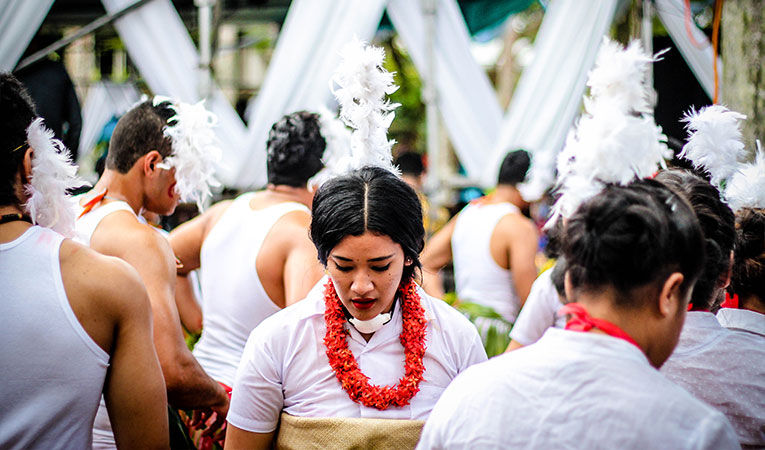
Add more context to some of those random traditions grandma forces around the holidays.
Anyone and everyone with a desire to learn can participate in heritage travel! People of all ages and backgrounds can think about doing heritage tourism during short school breaks, gap years, or family trips.
Popular examples of heritage tourism involve religious travel or pilgramages. For instance, many Catholic students might enjoy visiting the Vatican while studying abroad in Italy, or some Muslim volunteers might tack on a hajj to Mecca while volunteering abroad in the Middle East. If you're a first generation immigrant from Latin America or East Asia, you might double-dip your internship abroad to learn your family's native tongue or get to know your family's culture or history in a new way. As a Jewish student abroad, I was keen to learn more about Jewish history—visiting pre-war synagogues and learning the stories of Jewish families past.
The major benefits of heritage travel
1. memorability.
Whenever you return from a trip, you are bound to face the question: So, what did you do on your trip? Usually, people are looking for more than just a general answer, but want an example of something specific you experienced and why you enjoyed it. Heritage travel will provide you with an instant, and ongoing, answer! Travelers say that trips with heritage activities are more memorable than trips without them, because they learn something concrete and new.
2. Strengthens local economies
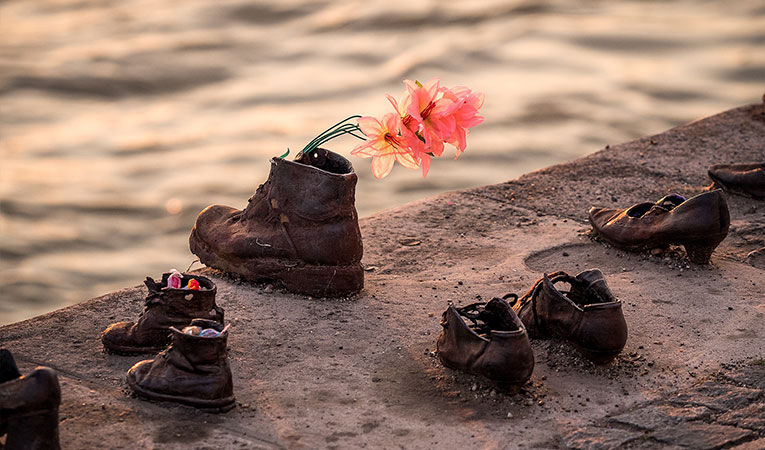
Heritage tourism isn’t always pretty, but it always has an important impact.
A study conducted by the Travel Industry Association showed that heritage travelers spend more time and money at their destinations than other types of travelers. This helps to develop sustainable local economies which often don’t get as much popularity as large tourist attractions. Visiting heritage sites creates jobs in local organizations while simultaneously promoting community pride through the opportunities locals have to work together to improve cultural development.
3. Diversifies the tourism experience
Relaxing at the beach is nice, but think how many more stories there are to tell when there is content and substance involved in a trip. Beyond the traditional ocean and sand vacation, heritage travel allows you to expand your horizons and spread the places people visit beyond a few locations.
4. Reinforces identity and creates understanding
Heritage tourism provides a whole new angle to traveling and can make an experience both fun and educational. You can learn more about yourself, your ancestors, and people of your race, religion, or culture, while also learning more about cultures and backgrounds different than your own. What we learn in a classroom can be difficult to understand; when you interact with sites in person you have the opportunity to really comprehend what a specific identity means.

You might even find new things to love and appreciate about your personal history!
5. Increases your learning capacity—especially when done in conjunction with a program abroad
The best part of formal programs abroad isn’t that your itinerary is taken care of (although being free of planning those logistics IS pretty great!), it’s the fact that you have the right container for doing deep thinking and reflecting on what you’re learning. Instead of just witnessing and observing during culture heritage tourism, a program abroad might be able to offer you a stronger framework to participate in the culture. Translating interactions into hard-won lessons is much easier with the help of a trusty mentor or dedicated time for reflection.
That’s why pairing heritage tourism with a program abroad can be a win-win on all fronts!
Walk the footsteps of your family

Get to know yourself—and your family—on a whole new level through heritage travel.
Soon, I started looking for mezuzah traces wherever I went in Europe. I didn't want to ever again walk by a place that had so many hidden stories—that could have been my relatives’ home, or the home of my friends grandparents. Each mezuzah trace told a story that came to life through the Jewish item.
Looking for mezuzah traces throughout Europe was just one way I was able to connect to the heritage of the Jewish people and learn what Jewish life was like in countries prior to World War II. There are so many ways that heritage travel can enhance your time on programs abroad, even for a short trip, and it will make a difference in how you remember a place once you return home.
Get Matched with 5 Programs to Enhance Heritage Travel Today
KAHAL Your Jewish Home Abroad is a non-profit organization which connects Jewish students studying abroad to Jewish opportunities, resources and connections abroad. KAHAL aims to create meaningful Jewish experiences for study abroad students, allowing them to interact with local Jewish communities and deepen their Jewish identities. Wherever students travel, KAHAL arranges chances to attend Shabbat dinners, meet Jewish students, attend holiday meals, volunteer and advocate, and provides grant funding and travel assistance.

Explore Programs on GoAbroad.com
Related Articles
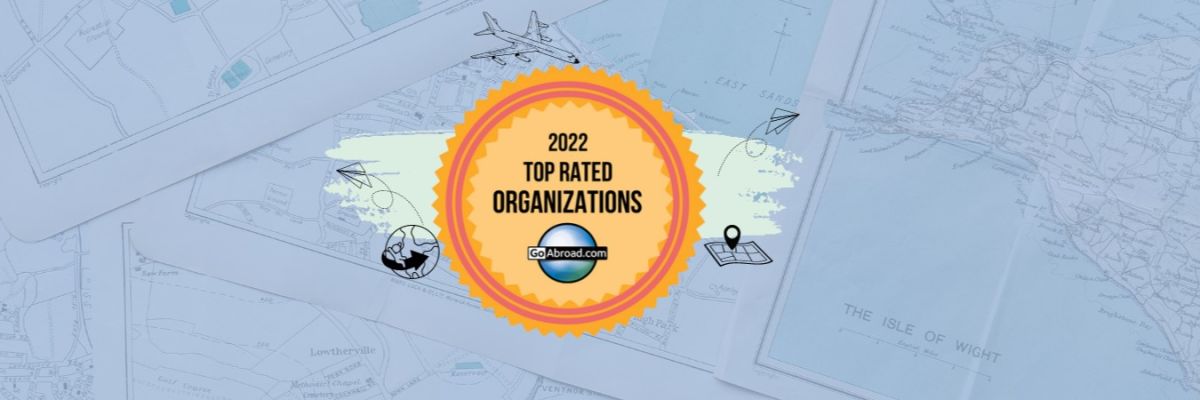
By GoAbroad Writing Team | 21 hours ago

By Elizabeth Gorga | 22 hours ago

By Julia Zaremba | 22 hours ago

By Julia Zaremba | 23 hours ago
Popular Searches
Study abroad programs in italy, study abroad programs in spain, marine biology study abroad programs, study psychology abroad, fall study abroad 2024, spring study abroad programs, recommended programs.

1682 reviews
International Volunteer HQ [IVHQ]

1926 reviews
MAXIMO NIVEL

563 reviews
Intern Abroad HQ
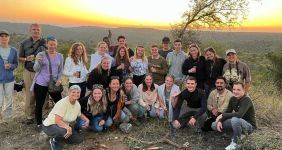
2731 reviews
African Impact
For Travelers
Travel resources, for partners.

© Copyright 1998 - 2024 GoAbroad.com ®
- Study Abroad
- Volunteer Abroad
- Intern Abroad
- Teach Abroad
- TEFL Courses
- Degrees Abroad
- High School Abroad
- Language Schools
- Adventure Travel
- Jobs Abroad
- Online Study Abroad
- Online Volunteer Programs
- Online Internships
- Online Language Courses
- Online Teaching Jobs
- Online Jobs
- Online TEFL Courses
- Online Degree Programs
- Skip to global NPS navigation
- Skip to the main content
- Skip to the footer section

Exiting nps.gov
Heritage travel.
What is it that inspires our zeal for travel? And how do our explorations by planes, trains, and automobiles affect the planet?
Heritage travel (sometimes called cultural tourism) sparks our curiosity. The National Trust for Historic Preservation describes it as “traveling to experience the places, artifacts and activities that authentically represent the stories and people of the past and present.” 1 In other words, we seek new places to learn about the past and each other.
Travel can be a big step in understanding different cultures, which in turn builds empathy and connects us to our global community. 1.“[Preservation Glossary] Today’s Word: Heritage Tourism,” National Trust for Historic Preservation, https://savingplaces.org/stories/preservation-glossary-todays-word-heritage-tourism#.YJftArVKhPY
The Role of Curiosity
Our curiosity plays a big part in fueling our desire to travel. Many of us continually seek out new information and experiences – a desire fulfilled by heritage travel. Curiosity and exploration are intertwined. In fact, according to the 2017 Curio Collection (a scientific study funded by Hilton Hotels about what drives travel trends), 73% of adults claimed that travel was their preferred method of expressing their curiosity.
When we give ourselves permission to indulge our curious mind, our brains feel pleasure and happiness. When we explore, we often experience joy and learn through the process.
Virtual Travel
Can we recreate this zest for exploration through virtual travel? And why should we consider taking more virtual “trips”? You could explore even more!
Think about a historic place you’ve visited. How did it change your perspective about the past? The present? Having a broader awareness of how important these places are can help us all to preserve these places. But what about places we’ve never been to? Not everyone will visit Independence Hall in Philadelphia, where the Founding Fathers signed the Declaration of Independence. However, most of us would agree that the building should be preserved. We can recognize the intrinsic historic and cultural value of a place without having to visit in person.
Virtual travel comes in handy when we recognize we might not ever visit a place. While some of us are committed to visiting every National Park and Historic Site ( kudos to you folks! ), the rest of us might not get around to it all, considering there are over 400 units of the National Park Service! Most of us face the very real constraints of time and money, yet that doesn’t impede dour love for historic places. Virtual travel is a way to feed our heads and hearts without emptying our pocketbooks.
Virtual travel also will help you reduce your carbon footprint. Our choices make a difference. Every individual has opportunities to work toward a more sustainable future. Get involved! If you want a fun way to think about this, check out this Carbon Footprint Activity .
Exploring online can be an ideal way to learn feed our curiosity. Here we offer a few ways for you to do just that! Below you’ll find a few ways to explore. To think more deeply about a specific place important to you and how it’s changed over time, check out the Discovery Journal If you’re interested in traveling in the footsteps of great American figures, discover our “Places of…” series. You’ll also find featured travel itineraries to virtually explore by geographic region and theme.
Walk in the (virtual) footsteps of important American figures and discover places associated with their lives.
Give in to your curiosity and delve more deeply into a place.
Heritage Travel Itineraries
Travel historic sites in Detroit and learn about the city's music history.
Explore stories, places, and people of the Amana Colonies - an American Utopia.
Discover more itineraries based on geographic region and theme.
Last updated: July 14, 2021
Real Places, Real World
Take advantage of the search to browse through the World Heritage Centre information.
Sustainable Tourism
UNESCO World Heritage and Sustainable Tourism Programme
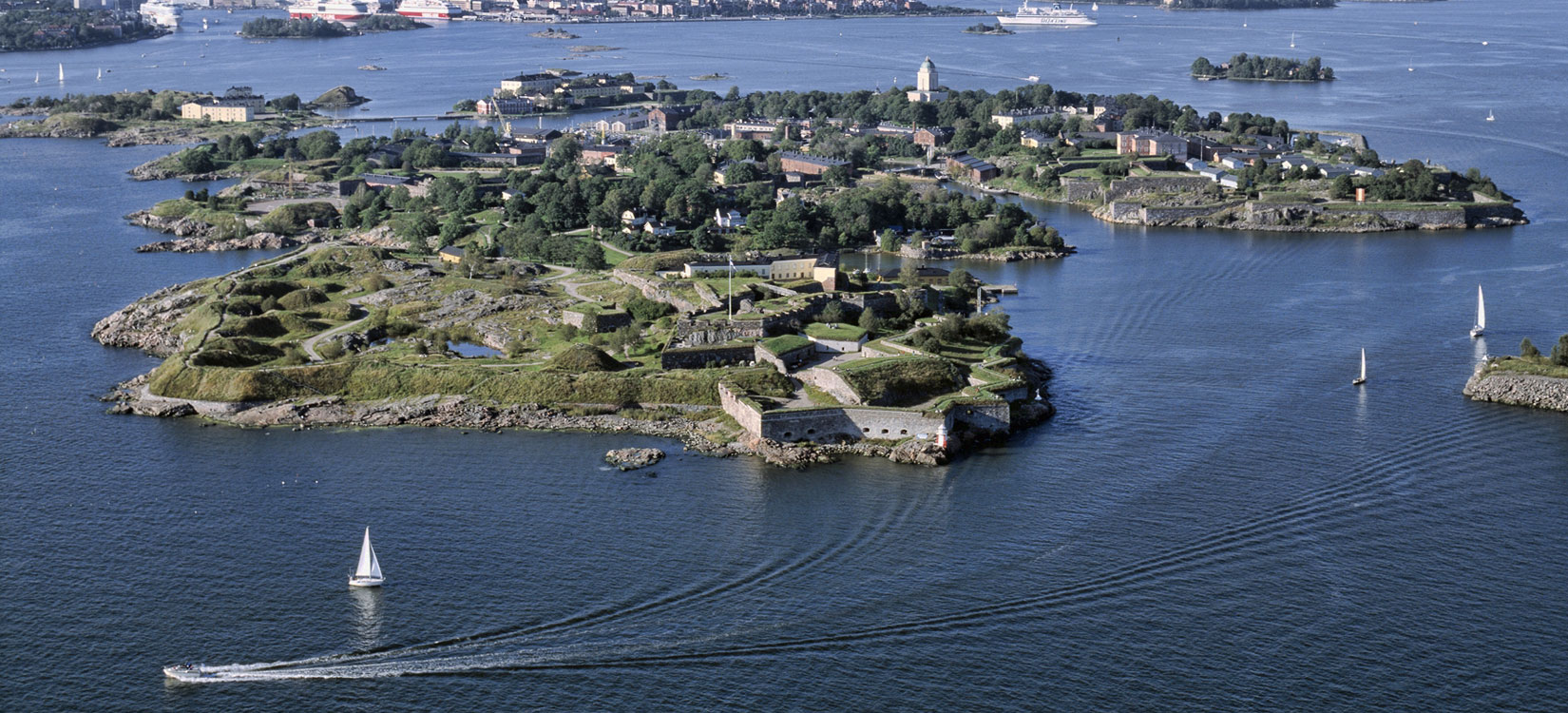
The UNESCO World Heritage and Sustainable Tourism Programme represents a new approach based on dialogue and stakeholder cooperation where planning for tourism and heritage management is integrated at a destination level, the natural and cultural assets are valued and protected, and appropriate tourism developed.
World Heritage and tourism stakeholders share responsibility for conservation of our common cultural and natural heritage of Outstanding Universal Value and for sustainable development through appropriate tourism management.
Facilitate the management and development of sustainable tourism at World Heritage properties through fostering increased awareness, capacity and balanced participation of all stakeholders in order to protect the properties and their Outstanding Universal Value.
Focus Areas
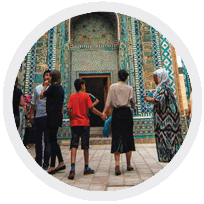
Policy & Strategy
Sustainable tourism policy and strategy development.

Tools & Guidance
Sustainable tourism tools

Capacity Building
Capacity building activities.

Heritage Journeys
Creation of thematic routes to foster heritage based sustainable tourism development
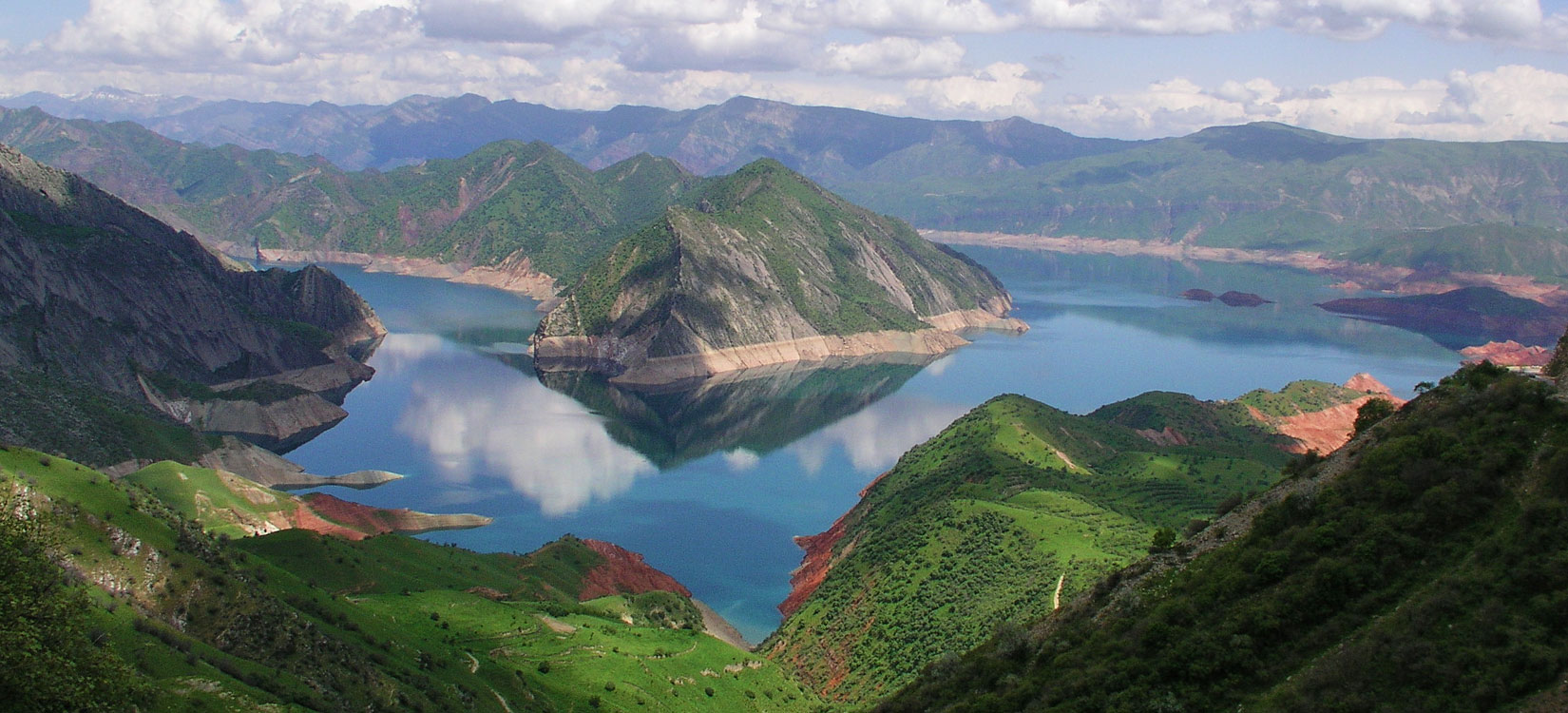
A key goal of the UNESCO WH+ST Programme is to strengthen the enabling environment by advocating policies and frameworks that support sustainable tourism as an important vehicle for managing cultural and natural heritage. Developing strategies through broad stakeholder engagement for the planning, development and management of sustainable tourism that follows a destination approach and focuses on empowering local communities is central to UNESCO’s approach.
Supporting Sustainable Tourism Recovery
Enhancing capacity and resilience in 10 World Heritage communities
Supported by BMZ, and implemented by UNESCO in collaboration with GIZ, this 2 million euro tourism recovery project worked to enhance capacity building in local communities, improve resilience and safeguard heritage.
Policy orientations
Defining the relationship between world heritage and sustainable tourism
Based on the report of the international workshop on Advancing Sustainable Tourism at Natural and Cultural Heritage Sites (Mogao, China, September 2009), the World Heritage Committee at its 34th session adopted the policy orientations which define the relationship between World Heritage and sustainable tourism ( Decision 34 COM 5F.2 ).
World Heritage and Tourism in a Changing Climate
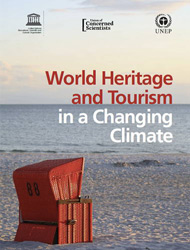
Providing an overview of the increasing vulnerability of World Heritage sites to climate change impacts and the potential implications for and of global tourism.
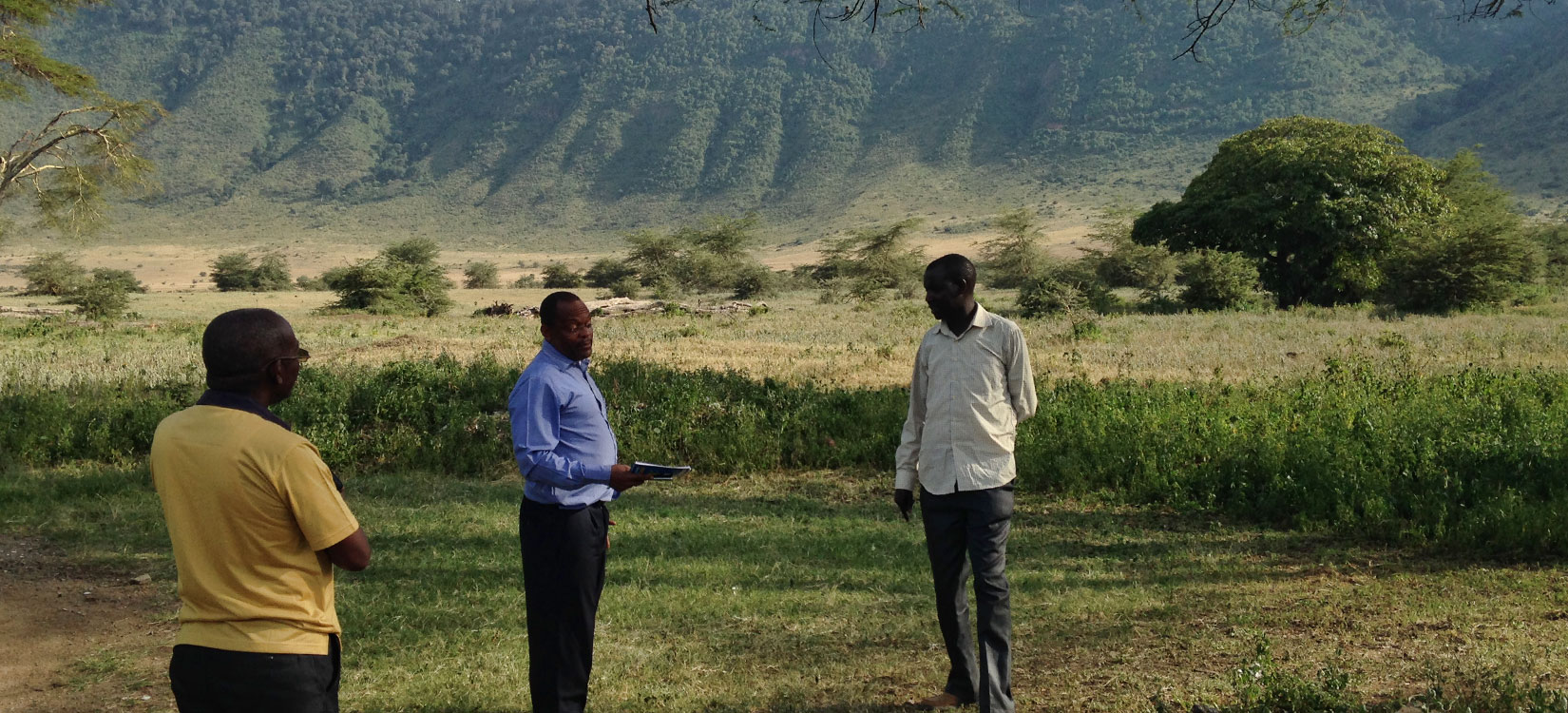
Sustainable Tourism Tools
Manage tourism efficiently, responsibly and sustainably based on the local context and needs
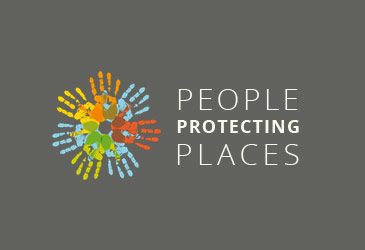
People Protecting Places is the public exchange platform for the World Heritage and Sustainable Tourism Programme, providing education and information, encouraging support, engaging in social and community dialogue

The ' How-To ' guides offer direction and guidance to managers of World Heritage tourism destinations and other stakeholders to help identify the most suitable solutions for circumstances in their local environments and aid in developing general know-how.
English French Russian
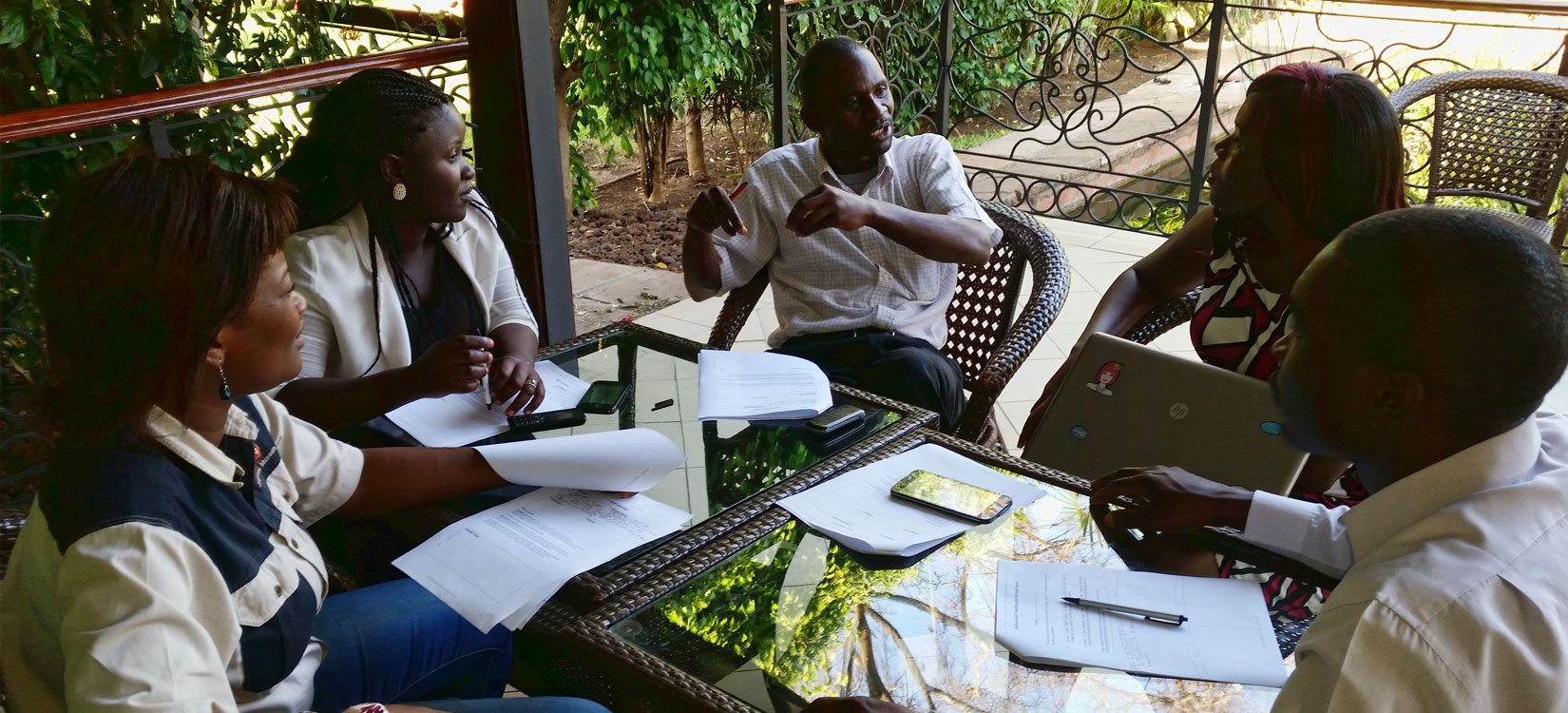
Helping site managers and other tourism stakeholders to manage tourism more sustainably
Capacity Building in 4 Africa Nature Sites
A series of practical training and workshops were organized in four priority natural World Heritage sites in Africa (Lesotho, Malawi, South Africa, Tanzania, Zambia and Zimbabwe) with the aim of providing capacity building tools and strategies for site managers to help them manage tourism at their sites more sustainably.
Learn more →
15 Pilot Sites in Nordic-Baltic Region
The project Towards a Nordic-Baltic pilot region for World Heritage and Sustainable Tourism (2012-2014) was initiated by the Nordic World Heritage Foundation (NWHF). With a practical approach, the project has contributed to tools for assessing and developing sustainable World Heritage tourism strategies with stakeholder involvement and cooperation.
Supporting Community-Based Management and Sustainable Tourism at World Heritage sites in South-East Asia
Entitled “The Power of Culture: Supporting Community-Based Management and Sustainable Tourism at World Heritage sites in South-East Asia", the UNESCO Office in Jakarta with the technical assistance of the UNESCO World Heritage and Sustainable Tourism Programme and the support from the Government of Malaysia is spearheading the first regional effort in Southeast Asia to introduce a new approach to sustainable tourism management at World Heritage sites in Malaysia, the Philippines and Indonesia.
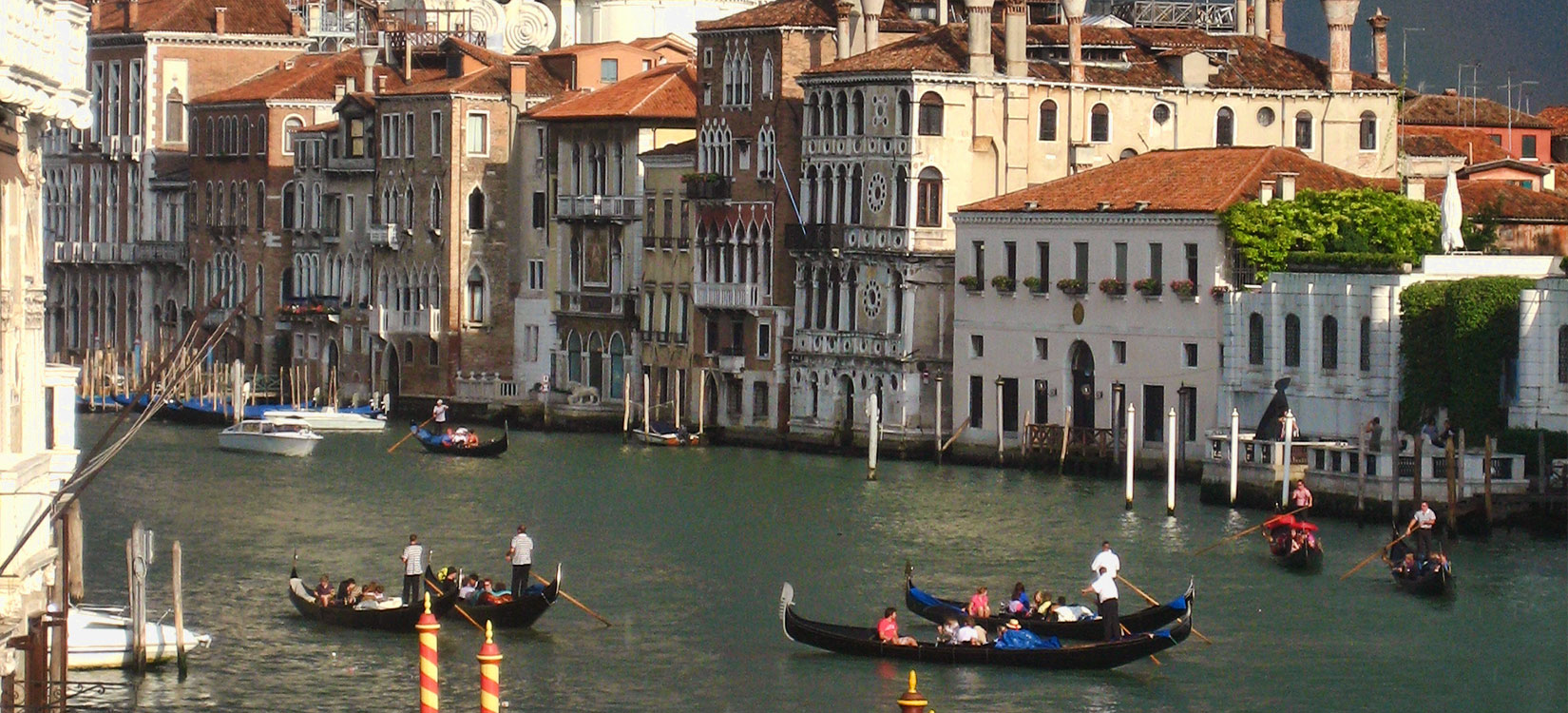
Cultural tourism is one of the largest and fastest-growing global tourism markets. Culture and creative industries are increasingly being used to promote destinations and enhance their competitiveness and attractiveness.
Many locations are now actively developing their cultural assets as a means of developing comparative advantages in an increasingly competitive tourism marketplace, and to create local distinctiveness in the face of globalization.
UNESCO will endeavour to create networks of key stakeholders to coordinate the destination management and marketing associated with the different heritage routes to promote and coordinate high-quality, unique experiences based on UNESCO recognized heritage. The goal is to promote sustainable development based on heritage values and create added tourist value for the sites.
UNESCO World Heritage Journeys of the EU
Creating heritage-based tourism that spurs investment in culture and the creative industries that are community-centered and offer sustainable and high-quality products that play on Europe's comparative advantages and diversity of its cultural assets.
World Heritage Journeys of Buddhist Heritage Sites
UNESCO is currently implementing a project to develop a unique Buddhist Heritage Route for Sustainable Tourism Development in South Asia with the support from the Korea International Cooperation Agency (KOICA). South Asia is host to rich Buddhist heritage that is exemplified in the World Heritage properties across the region.
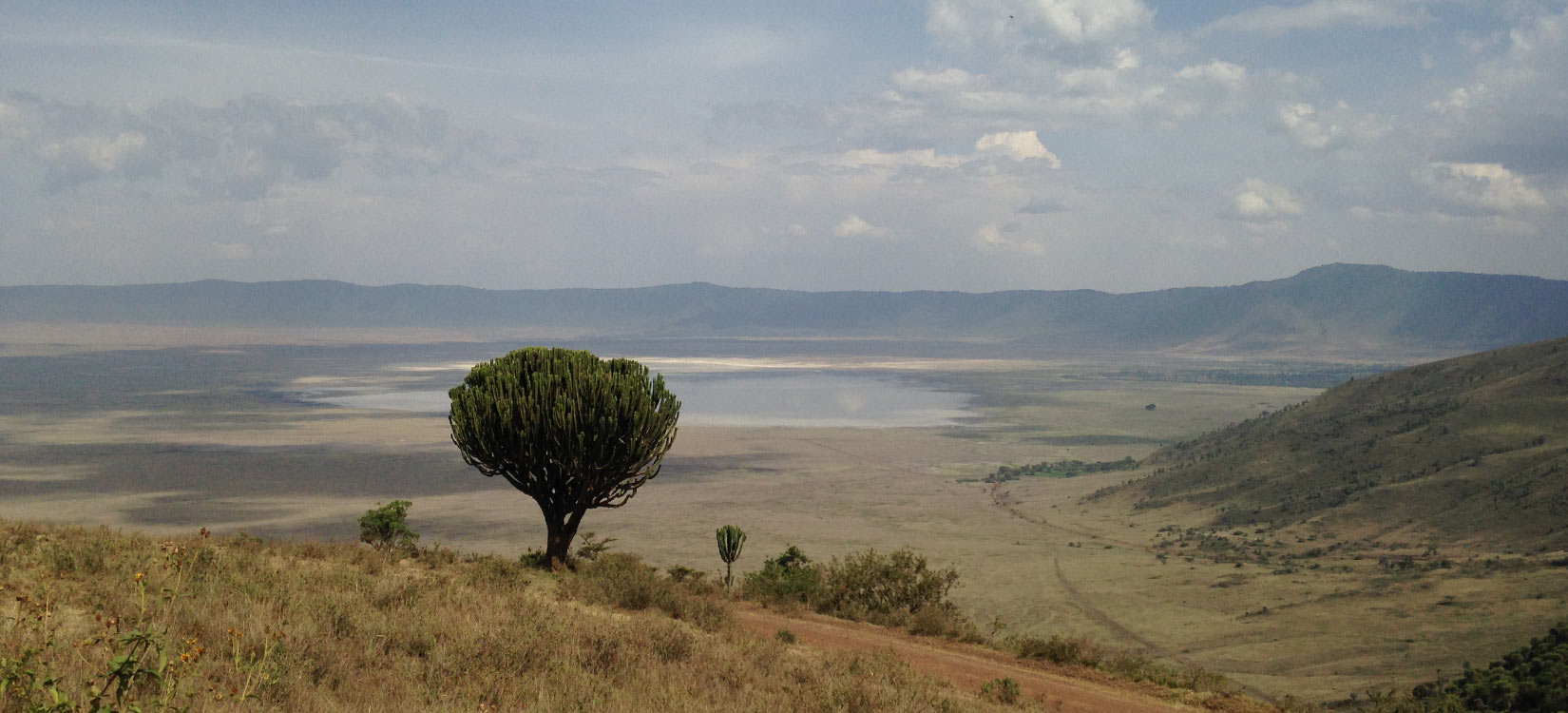
Programme Background
In 2011 UNESCO embarked on developing a new World Heritage and Sustainable Tourism Programme.
The aim was to create an international framework for the cooperative and coordinated achievement of shared and sustainable outcomes related to tourism at World Heritage properties.
The preparatory work undertaken in developing the Programme responded to the decision 34 COM 5F.2 of the World Heritage Committee at its 34th session in Brasilia in 2010, which requested
“the World Heritage Centre to convene a new and inclusive programme on World Heritage and Sustainable Tourism, with a steering group comprising interested States Parties and other relevant stakeholders, and also requests the World Heritage Centre to outline the objectives and approach to the implementation of this programme".
The Steering Group was comprised of States Parties representatives from the six UNESCO Electoral Groups (Germany (I), Slovenia (II), Argentina (III), China (IV), Tanzania (Va), and Lebanon (Vb)), the Director of the World Heritage Centre, the Advisory Bodies (IUCN, ICOMOS and ICCROM), the United Nations World Tourism Organization (UNWTO) and the Swiss Government as the donor agency.
The Government of Switzerland has provided financial support for specific actions to be undertaken by the Steering Group. To coordinate and support the process, the World Heritage Centre has formed a small Working Group with the support of the Nordic World Heritage Foundation, the Government of Switzerland and the mandated external consulting firm MartinJenkins.
The World Heritage Committee directed that the Programme take into account:
- the recommendations of the evaluation of the concluded tourism programme ( WHC-10/34.COM/INF.5F.3 )
- the policy orientation which defines the relationship between World Heritage and sustainable tourism that emerged from the workshop Advancing Sustainable Tourism at Natural and Cultural Heritage Sites (Mogao, China, September 2009) ( WHC-10/34.COM/INF.5F.1 )
Overarching and strategic processes that the new World Heritage and Sustainable Tourism Programme will be aligned with include the Strategic Objectives of the World Heritage Convention (the five C's) ( Budapest Declaration 2002 ), the ongoing Reflections on the Future of the World Heritage Convention ( WHC-11/35.COM/12A ) and the Strategic Action Plan for the Implementation of the World Heritage Convention 2012-2022 ( WHC-11/18.GA/11 ), the Relationship between the World Heritage Convention and Sustainable Development (WHC-10/34.COM/5D), the World Heritage Capacity Building Strategy ( WHC-10/34.COM/5D ), the Global Strategy for a Representative, Balanced and Credible World Heritage List (1994), and the Evaluation of the Global Strategy and PACT initiative ( WHC-11/18.GA/8 - 2011 ).
In addition, the programme development process has been enriched by an outreach to representatives from the main stakeholder groups including the tourism sector, national and local governments, site practitioners and local communities. The programme design was further developed at an Expert Meeting in Sils/Engadine, Switzerland October 2011. In this meeting over 40 experts from 23 countries, representing the relevant stakeholder groups, worked together to identify the overall strategic approach and a prioritised set of key objectives and activities. The proposed Programme was adopted by the World Heritage Committee in 2012 at its 36th session in St Petersburg, Russian Federation .
International Instruments
International Instruments Relating to Sustainable Development and Tourism.
Resolutions adopted by the United Nations, charters adopted by ICOMOS, decisions adopted by the World Heritage Committee, legal instruments adopted by UNESCO on heritage preservation.
Resolutions adopted by the United Nations
- Report by the Department of Economics and Social Affairs: Tourism and Sustainable Development: The Global Importance of Tourism at the United Nations’ Commission on Sustainable Development 7th Session (1999)
- Resolution A/RES/56/212 and the Global Code of Ethics for Tourism adopted by the United Nations World Tourism Organization (1999)
Charters adopted by ICOMOS
- The ICOMOS International Cultural Tourism Charter (1999)
- The ICOMOS Charter for the Interpretation and Presentation of Cultural Heritage Sites (2008)
Decisions adopted by the World Heritage Committee
- Decision (XVII.4-XVII.12) adopted by the World Heritage Committee at its 25th Session in Helsinki (2001)
- Decision 33 COM 5A adopted by the World Heritage Committee at its 30th Session in Seville (2009)
- Decision 34 COM 5F.2 adopted by the World Heritage Committee at its 34th Session in Brasilia (2010)
- Decision 36 COM 5E adopted by the World Heritage Committee at its 36th Session in Saint Petersburg (2012)
Legal instruments adopted by UNESCO on heritage preservation in chronological order
- Convention on the Means of Prohibiting and Preventing the Illicit Import, Export and Transfer of Ownership of Cultural Property (1970)
- The Recommendation for the Protection of Movable Cultural Property (1978)
- The Recommendation on the Safeguarding of Traditional Culture and Folklore (1989)
- The Convention on the Protection of the Underwater Cultural heritage (2001)
- The Convention on the Protection and Promotion of the Diversity of Cultural Expressions (2005)
Other instruments
- Other instruments OECD Tourism Trends and Policies 2012 (French forthcoming)
- Programme on Sustainable Consumption and Production (In English)
- Siem Reap Declaration on Tourism and Culture 2015 – Building a New Partnership Model
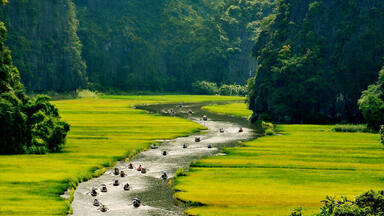
Decisions / Resolutions (5)
The World Heritage Committee,
- Having examined Document WHC/18/42.COM/5A,
- Recalling Decision 41 COM 5A adopted at its 41st session (Krakow, 2017) and Decision 40 COM 5D adopted at its 40th session (Istanbul/UNESCO, 2016), General:
- Takes note with appreciation of the activities undertaken by the World Heritage Centre over the past year in pursuit of the Expected Result to ensure that “tangible heritage is identified, protected, monitored and sustainably managed by Member States, in particular through the effective implementation of the 1972 Convention ”, and the five strategic objectives as presented in Document WHC/18/42.COM/5A;
- Welcomes the proactive role of the Secretariat for enhancing synergies between the World Heritage Convention and the other Culture and Biodiversity-related Conventions, particularly the integration of relevant synergies aspects in the revised Periodic Reporting Format and the launch of a synergy-related web page on the Centre’s website;
- Also welcomes the increased collaboration among the Biodiversity-related Conventions through the Biodiversity Liaison Group and focused activities, including workshops, joint statements and awareness-raising;
- Takes note of the Thematic studies on the recognition of associative values using World Heritage criterion (vi) and on interpretation of sites of memory, funded respectively by Germany and the Republic of Korea and encourages all States Parties to take on board their findings and recommendations, in the framework of the identification of sites, as well as management and interpretation of World Heritage properties;
- Noting the discussion paper by ICOMOS on Evaluations of World Heritage Nominations related to Sites Associated with Memories of Recent Conflicts, decides to convene an Expert Meeting on sites associated with memories of recent conflicts to allow for both philosophical and practical reflections on the nature of memorialization, the value of evolving memories, the inter-relationship between material and immaterial attributes in relation to memory, and the issue of stakeholder consultation; and to develop guidance on whether and how these sites might relate to the purpose and scope of the World Heritage Convention , provided that extra-budgetary funding is available and invites the States Parties to contribute financially to this end;
- Also invites the States Parties to support the activities carried out by the World Heritage Centre for the implementation of the Convention ;
- Requests the World Heritage Centre to present, at its 43rd session, a report on its activities. Thematic Programmes:
- Welcomes the progress report on the implementation of the World Heritage Thematic Programmes and Initiatives, notes their important contribution towards implementation of the Global Strategy for representative World Heritage List, and thanks all States Parties, donors and other organizations for having contributed to achieving their objectives;
- Acknowledges the results achieved by the World Heritage Cities Programme and calls States Parties and other stakeholders to provide human and financial resources ensuring the continuation of this Programme in view of its crucial importance for the conservation of the urban heritage inscribed on the World Heritage List, for the implementation of the Recommendation on the Historic Urban Landscape and its contribution to achieving the 2030 Sustainable Development Goals related to cities as well as for its contribution to the preparation of the New Urban Agenda, and further thanks to China and Croatia for their support for the implementation of the Programme;
- Also acknowledges the results achieved of the World Heritage Marine Programme, also thanks Flanders, France and the Annenberg Foundation for their support, notes the increased focus of the Programme on a global managers network, climate change adaptation strategies and sustainable fisheries, and invites States Parties, the World Heritage Centre and other stakeholders to continue to provide human and financial resources to support for the implementation of the Programme;
- Further acknowledges the results achieved in the implementation of the World Heritage Sustainable Tourism Programme, in particular the development of the Sustainable Tourism and Visitor Management Assessment tool and encourages States Parties to participate in the pilot testing of the tool, expresses appreciation for the funding provided by the European Commission and further thanks the Republic of Korea, Norway, and Seabourn Cruise Line for their support in the implementation of the Programme’’s activities;
- Further notes the progress in the implementation of the Small Island Developing States Programme, its importance for a representative, credible and balanced World Heritage List and building capacity of site managers and stakeholders to implement the World Heritage Convention , thanks furthermore Japan and the Netherlands for their support as well as the International Centre on Space Technology for Natural and Cultural Heritage (HIST) and the World Heritage Institute of Training & Research for the Asia & the Pacific Region (WHITRAP) as Category 2 Centres for their technical and financial supports and also requests the States Parties and other stakeholders to continue to provide human, financial and technical resources for the implementation of the Programme;
- Takes note of the activities implemented jointly by the International Astronomical Union (IAU) and ICOMOS under the institutional guidance of the World Heritage Centre, in line with its Decision 40 COM 5D, further requests the World Heritage Centre to disseminate among the States Parties the second volume of the IAU/ICOMOS Thematic Study on Astronomical Heritage and renames this initiative as Initiative on Heritage of Astronomy, Science and Technology;
- Also takes note of the progress report on the Initiative on Heritage of Religious Interest, endorses the recommendations of the Thematic Expert Consultation meetings focused on Mediterranean and South-Eastern Europe (UNESCO, 2016), Asia-Pacific (Thailand, 2017) and Eastern Europe (Armenia, 2018), thanks the States Parties for their generous contribution and reiterates its invitation to States Parties and other stakeholders to continue to support this Initiative, as well as its associated Marketplace projects developed by the World Heritage Centre;
- Takes note of the activities implemented by CRATerre in the framework of the World Heritage Earthen Architecture Programme, under the overall institutional guidance of the World Heritage Centre, and of the lines of action proposed for the future, if funding is available;
- Invites States Parties, international organizations and donors to contribute financially to the Thematic Programmes and Initiatives as the implementation of thematic priorities is no longer feasible without extra-budgetary funding;
- Requests furthermore the World Heritage Centre to submit an updated result-based report on Thematic Programmes and Initiatives, under Item 5A: Report of the World Heritage Centre on its activities, for examination by the World Heritage Committee at its 44th session in 2020.
1. Having examined document WHC-12/36.COM/5E,
2. Recalling Decision 34 COM 5F.2 adopted at its 34th session (Brasilia, 2010),
3. Welcomes the finalization of the new and inclusive Programme on World Heritage and Sustainable Tourism and notes with appreciation the participatory process for its development, objectives and approach towards implementation;
4. Also welcomes the contribution of the Steering Group comprised of States Parties representatives from the UNESCO Electoral Groups, the World Heritage Centre, the Advisory Bodies (IUCN, ICOMOS, ICCROM), Switzerland and the United Nations World Tourism Organisation (UNWTO) in the elaboration of the Programme;
5. Thanks the Government of Switzerland, the United Nations Foundation and the Nordic World Heritage Foundation for their technical and financial support to the elaboration of the Programme;
6. Notes with appreciation the contribution provided by the States Parties and other consulted stakeholders during the consultation phase of the Programme;
7. Takes note of the results of the Expert Meeting in Sils/Engadin (Switzerland), from 18 to 22 October 2011 contributing to the Programme, and further thanks the Government of Switzerland for hosting the Expert Meeting;
8. Adopts the World Heritage and Sustainable Tourism Programme;
9. Requests the World Heritage Centre to refine the Draft Action Plan 2013-2015 in an Annex to the present document and to implement the Programme with a Steering Group comprised of representatives of the UNESCO Electoral Groups, donor agencies, the Advisory Bodies, UNWTO and in collaboration with interested stakeholders;
10. Notes that financial resources for the coordination and implementation of the Programme do not exist and also requests States Parties to support the implementation of the World Heritage and Sustainable Tourism Programme;
11. Further requests the World Heritage Centre to report biennially on the progress of the implementation of the Programme;
12. Notes with appreciation the launch of the Programme foreseen at the 40th Anniversary of the World Heritage Convention event in Kyoto, Japan, in November 2012
1. Having examined Document WHC-10/34.COM/INF.5F.1 and WHC-10/34.COM/INF.5F.3,
2. Highlighting that the global tourism sector is large and rapidly growing, is diverse and dynamic in its business models and structures, and the relationship between World Heritage and tourism is two way: tourism, if managed well, offers benefits to World Heritage properties and can contribute to cross-cultural exchange but, if not managed well, poses challenges to these properties and recognizing the increasing challenges and opportunities relating to tourism;
3. Expresses its appreciation to the States Parties of Australia, China, France, India, Sweden, Switzerland and the United Kingdom, and to the United Nations Foundation and the Nordic World Heritage Foundation for the financial and technical support to the World Heritage Tourism Programme since its establishment in 2001;
4. Welcomes the report of the international workshop on Advancing Sustainable Tourism at Natural and Cultural Heritage Sites (Mogao, China, September 2009) and adopts the policy orientation which defines the relationship between World Heritage and sustainable tourism ( Attachment A );
5. Takes note of the evaluation of the World Heritage Tourism Programme by the UN Foundation, and encourages the World Heritage Centre to take fully into account the eight programme elements recommended in the draft final report in any future work on tourism ( Attachment B );
6. Decides to conclude the World Heritage Tourism Programme and requests the World Heritage Centre to convene a new and inclusive programme on World Heritage and Sustainable Tourism, with a steering group comprising interested States Parties and other relevant stakeholders, and also requests the World Heritage Centre to outline the objectives and approach to implementation of this programme, drawing on the directions established in the reports identified in Paragraphs 4 and 5 above, for consideration at the 35th session of the World Heritage Committee (2011);
7. Also welcomes the offer of the Government of Switzerland to provide financial and technical support to specific activities supporting the steering group; further welcomes the offer of the Governments of Sweden, Norway and Denmark to organize a Nordic-Baltic regional workshop in Visby, Gotland, Sweden in October 2010 on World Heritage and sustainable tourism; and also encourages States Parties to support the new programme on World Heritage and Sustainable Tourism including through regional events and the publication of materials identifying good practices;
8. Based upon the experience gained under the World Heritage Convention of issues related to tourism, invites the Director General of UNESCO to consider the feasibility of a Recommendation on the relationship between heritage conservation and sustainable tourism.
Attachment A
Recommendations of the international workshop
on Advancing Sustainable Tourism at Natural and Cultural Heritage Sites
Policy orientations: defining the relationship between World Heritage and tourism
1. The tourism sector
The global tourism sector is large and rapidly growing, is diverse and dynamic in its business models and structures.
Tourists/visitors are diverse in terms of cultural background, interests, behaviour, economy, impact, awareness and expectations of World Heritage.
There is no one single way for the World Heritage Convention , or World Heritage properties, to engage with the tourism sector or with tourists/visitors.
2. The relationship between World Heritage and tourism
The relationship between World Heritage and tourism is two-way:
a. World Heritage offers tourists/visitors and the tourism sector destinations
b. Tourism offers World Heritage the ability to meet the requirement in the Convention to 'present' World Heritage properties, and also a means to realise community and economic benefits through sustainable use.
Tourism is critical for World Heritage:
a. For States Parties and their individual properties,
i. to meet the requirement in the Convention to 'present' World Heritage
ii. to realise community and economic benefits
b. For the World Heritage Convention as a whole, as the means by which World Heritage properties are experienced by visitors travelling nationally and internationally
c. As a major means by which the performance of World Heritage properties, and therefore the standing of the Convention , is judged,
i. many World Heritage properties do not identify themselves as such, or do not adequately present their Outstanding Universal Value
ii. it would be beneficial to develop indicators of the quality of presentation, and the representation of the World Heritage brand
d. As a credibility issue in relation to: i. the potential for tourism infrastructure to damage Outstanding Universal Value
i. the threat that World Heritage properties may be unsustainably managed in relation to their adjoining communities
ii. sustaining the conservation objectives of the Convention whilst engaging with economic development
iii. realistic aspirations that World Heritage can attract tourism.
World Heritage is a major resource for the tourism sector:
a. Almost all individual World Heritage properties are significant tourism destinations
b. The World Heritage brand can attract tourists/visitors,
i. the World Heritage brand has more impact upon tourism to lesser known properties than to iconic properties.
Tourism, if managed well, offers benefits to World Heritage properties:
a. to meet the requirement in Article 4 of the Convention to present World Heritage to current and future generations
b. to realise economic benefits.
Tourism, if not managed well, poses threats to World Heritage properties.
3. The responses of World Heritage to tourism
The impact of tourism, and the management response, is different for each World Heritage property: World Heritage properties have many options to manage the impacts of tourism.
The management responses of World Heritage properties need to:
a. work closely with the tourism sector
b. be informed by the experiences of tourists/visitors to the visitation of the property
c. include local communities in the planning and management of all aspects of properties, including tourism.
While there are many excellent examples of World Heritage properties successfully managing their relationship to tourism, it is also clear that many properties could improve:
a. the prevention and management of tourism threats and impacts
b. their relationship to the tourism sector inside and outside the property
c. their interaction with local communities inside and outside the property
d. their presentation of Outstanding Universal Value and focus upon the experience of tourists/visitors.
a. be based on the protection and conservation of the Outstanding Universal Value of the property, and its effective and authentic presentation
b. work closely with the tourism sector
c. be informed by the experiences of tourists/visitors to the visitation of the property
d. to include local communities in the planning and management of all aspects of properties, including tourism.
4. Responsibilities of different actors in relation to World Heritage and tourism
The World Heritage Convention (World Heritage Committee, World Heritage Centre, Advisory Bodies):
a. set frameworks and policy approaches
b. confirm that properties have adequate mechanisms to address tourism before they are inscribed on the World Heritage List
i. develop guidance on the expectations to be include in management plans
c. monitor the impact upon OUV of tourism activities at inscribed sites, including through indicators for state of conservation reporting
d. cooperate with other international organisations to enable:
i. other international organisations to integrate World Heritage considerations in their programs
ii. all parties involved in World Heritage to learn from the activities of other international organisations
e. assist State Parties and sites to access support and advice on good practices
f. reward best practice examples of World Heritage properties and businesses within the tourist/visitor sector
g. develop guidance on the use of the World Heritage emblem as part of site branding.
Individual States Parties:
a. develop national policies for protection
b. develop national policies for promotion
c. engage with their sites to provide and enable support, and to ensure that the promotion and the tourism objectives respect Outstanding Universal Value and are appropriate and sustainable
d. ensure that individual World Heritage properties within their territory do not have their OUV negatively affected by tourism.
Individual property managers:
a. manage the impact of tourism upon the OUV of properties
i. common tools at properties include fees, charges, schedules of opening and restrictions on access
b. lead onsite presentation and provide meaningful visitor experiences
c. work with the tourist/visitor sector, and be aware of the needs and experiences of tourists/visitors, to best protect the property
i. the best point of engagement between the World Heritage Convention and the tourism sector as a whole is at the direct site level, or within countries
d. engage with communities and business on conservation and development.
Tourism sector:
a. work with World Heritage property managers to help protect Outstanding Universal Value
b. recognize and engage in shared responsibility to sustain World Heritage properties as tourism resources
c. work on authentic presentation and quality experiences.
Individual tourists/visitors with the assistance of World Heritage property managers and the tourism sector, can be helped to appreciate and protect the OUV of World Heritage properties.
Attachment B
Programme elements recommended by the Draft Final Report of the Evaluation of the World Heritage Tourism Programme by the UN Foundation:
1. Adopt and disseminate standards and principles relating to sustainable tourism at World Heritage sites;
2. Support the incorporation of appropriate tourism management into the workings of the Convention ;
3. Collation of evidence to support sustainable tourism programme design, and to support targeting;
4. Contribution of a World Heritage perspective to cross agency sustainable tourism policy initiatives;
5. Strategic support for the dissemination of lessons learned;
6. Strategic support for the development of training and guidance materials for national policy agencies and site managers;
7. Provision of advice on the cost benefit impact of World Heritage inscription;
8. Provision of advice on UNESCO World Heritage branding.
1. Having examined Documents WHC-09/33.COM/5A, WHC- 09/33.COM/INF.5A.1, WHC-09/33.COM/INF.5A.2, and WHC-09/33.COM/INF.5A.3 ,
2. Recalling Decision 32 COM 5 adopted at its 32nd session (Quebec City, 2008),
3. Takes note with appreciation of the activities undertaken by the World Heritage Centre over the past year in pursuit of the Committee's five Strategic Objectives;
4. Takes also note of the findings of the study undertaken by UNESCO's Internal Oversight Service on the mapping of the workload of the World Heritage Centre presented in Document WHC-09/33.COM/INF.5A.3;
5. Notes with satisfaction that the World Heritage Centre is working with the secretariats of intergovernmental committees of related conventions such as the Convention for the Safeguarding of Intangible Cultural Heritage , and the Convention for the Protection of the Underwater Cultural Heritage-2001 and recommends that such cooperation be encouraged as this would further strengthen the work of the Centre;
6. Requests the World Heritage Centre to prepare a document on the World Heritage Convention and its cooperation and exchange with other conventions and programmes in the field of cultural heritage for discussion at the 34th session of the World Heritage Committee (2010);
7. Also requests the World Heritage Centre, in future reports on activities undertaken, to further strengthen the information and analysis available to States Parties by:
a) Retaining the current format to report activities and including an update on progress with implementing the Committee's decisions,
b) Describing the criteria by which the World Heritage Centre makes decisions as to which activities under the Convention it undertakes,
c) And including, on a discretionary basis, analysis of strategic issues and new directions;
8. Further requests the World Heritage Centre to produce, on an experimental basis, an indexed audio verbatim recording of the proceedings of the 33rd Session in addition to the standard summary records (as produced since the 26th session of the World Heritage Committee);
9. Notes the outline provided by the World Heritage Centre of its roles and the roles of the Advisory Bodies and agrees that this topic be further discussed at the 34th session of the Committee in 2010 under a separate agenda item;
10. Requests furthermore the World Heritage Centre to outline the forward direction of the World Heritage thematic programmes and initiatives, to enable an understanding of how these themes connect with and integrate into general programmes, and how they might be resourced;
11. Notes that the Centre already proactively engages women in its Heritage Programmes in Asia, Africa and the Caribbean as part of its gender balance policy and the provision of equal opportunity to all, and recommends that gender balance and community involvement be prioritized in the Centre's programmes;
12. Adopts the World Heritage Thematic Programme on Prehistory presented in Annex 1 of document WHC-09/33.COM/5A ;
13. Requests the World Heritage Centre to reconsider the term "prehistory", to better recognize the continuing cultures of indigenous communities, to ensure global representation in the identification and conservation of related properties, and to present a report on progress in developing an Action Plan on Prehistory and World Heritage at its 34th session in 2010;
14. Notes with concern the ongoing destruction of some of these fragile sites, including the recent destruction of the Rock Art sites of Tardrat Acacus in Libya, and requests the State Party to take immediate action and other measures as necessary to address the problem in consultation with the World Heritage Centre and to invite a joint World Heritage Centre / ICOMOS mission;
15. Expresses its gratitude to the Governments of Bahrain, South Africa and Spain for the financial and technical support for the various international scientific encounters, and recognizes the proposal of the Government of Spain in establishing a centre for the research of Prehistory;
16. Recalling the Decision of the World Heritage Committee 31 COM.21C to carry out a programme of sustainable development concerning the conservation of earthen architecture, thanks the Governments of Italy and France for their support of the programme on earthen architecture in Africa and the Arab States in particular, and requests the potential financial donors and the States Parties to support the implementation of activities and further requests the World Heritage Centre to submit a progress report at its 35th session in 2011;
17. Takes note of the progress report on the World Heritage Tourism Programme;
18. Thanks the Governments of Australia, China, France, India, Switzerland and United Kingdom, who have worked in close collaboration with the World Heritage Centre and the Advisory Bodies, the World Tourism Organization and other partners, for contributing to the Initiative of Sustainable Tourism;
19. Expresses its gratitude to the Governments of Australia and China for the organization of a workshop on sustainable tourism at the World Heritage site, Mogao Caves, China, in September-October 2009 and requests that the following elements be submitted to the Committee for examination at its 34th session in 2010:
a) A report on the workshop,
b) The subsequent recommendations of the workshop regarding the adoption of best practices policy guidance, and concerning the changes proposed for the Operational Guidelines for the implementation of the World Heritage Convention ,
c) A document concerning the progress of the World Heritage Programme on Tourism;
20. Finally requests the Director of the World Heritage Centre to identify supplementary sources of funding to put into place a sufficient number of staff and resources at the World Heritage Centre and the Advisory Bodies in order to continue to efficiently contribute to the resolution of problems related to World Heritage conservation.
XVII.8 The Secretariat provided the following justifications for the selection:
- Tourism - growing threats on World Heritage sites from tourism which, if sustainably managed could offer socio-economic development opportunities;
- Forests - since close to 60 of the natural sites on the World Heritage List are forests and that the lessons being learned from the large-scale UNESCO-UN Foundation projects in the tropical forest sites in the Democratic Republic of the Congo can serve as case studies to enrich the programme;
- Cities - since close to 200 of the cultural sites on the List are historic centres or entire cities, and because 20% of the Fund's international assistance have served to address the challenge of urban heritage conservation;
- Earthen structures - since some 30 of the cultural sites on the List are included in this category, and due to the particularity of conservation of earthen heritage, and threats.
XVII.10 The Committee expressed its appreciation for the clarity of the presentation and the justifications provided. Indicating strong support for the overall programming approach, the Committee however indicated the need for the programme to respond to the priorities established by the Committee and to create strong links with the results of the Global Strategy actions and Periodic Reporting. The Committee approved the four proposed themes of the programmes in this first series of initiatives and authorized the Centre to proceed in their development.
- Search Menu
- Browse content in Arts and Humanities
- Browse content in Archaeology
- Anglo-Saxon and Medieval Archaeology
- Archaeological Methodology and Techniques
- Archaeology by Region
- Archaeology of Religion
- Archaeology of Trade and Exchange
- Biblical Archaeology
- Contemporary and Public Archaeology
- Environmental Archaeology
- Historical Archaeology
- History and Theory of Archaeology
- Industrial Archaeology
- Landscape Archaeology
- Mortuary Archaeology
- Prehistoric Archaeology
- Underwater Archaeology
- Urban Archaeology
- Zooarchaeology
- Browse content in Architecture
- Architectural Structure and Design
- History of Architecture
- Residential and Domestic Buildings
- Theory of Architecture
- Browse content in Art
- Art Subjects and Themes
- History of Art
- Industrial and Commercial Art
- Theory of Art
- Biographical Studies
- Byzantine Studies
- Browse content in Classical Studies
- Classical History
- Classical Philosophy
- Classical Mythology
- Classical Literature
- Classical Reception
- Classical Art and Architecture
- Classical Oratory and Rhetoric
- Greek and Roman Epigraphy
- Greek and Roman Law
- Greek and Roman Papyrology
- Greek and Roman Archaeology
- Late Antiquity
- Religion in the Ancient World
- Digital Humanities
- Browse content in History
- Colonialism and Imperialism
- Diplomatic History
- Environmental History
- Genealogy, Heraldry, Names, and Honours
- Genocide and Ethnic Cleansing
- Historical Geography
- History by Period
- History of Emotions
- History of Agriculture
- History of Education
- History of Gender and Sexuality
- Industrial History
- Intellectual History
- International History
- Labour History
- Legal and Constitutional History
- Local and Family History
- Maritime History
- Military History
- National Liberation and Post-Colonialism
- Oral History
- Political History
- Public History
- Regional and National History
- Revolutions and Rebellions
- Slavery and Abolition of Slavery
- Social and Cultural History
- Theory, Methods, and Historiography
- Urban History
- World History
- Browse content in Language Teaching and Learning
- Language Learning (Specific Skills)
- Language Teaching Theory and Methods
- Browse content in Linguistics
- Applied Linguistics
- Cognitive Linguistics
- Computational Linguistics
- Forensic Linguistics
- Grammar, Syntax and Morphology
- Historical and Diachronic Linguistics
- History of English
- Language Acquisition
- Language Evolution
- Language Reference
- Language Variation
- Language Families
- Lexicography
- Linguistic Anthropology
- Linguistic Theories
- Linguistic Typology
- Phonetics and Phonology
- Psycholinguistics
- Sociolinguistics
- Translation and Interpretation
- Writing Systems
- Browse content in Literature
- Bibliography
- Children's Literature Studies
- Literary Studies (Asian)
- Literary Studies (European)
- Literary Studies (Eco-criticism)
- Literary Studies (Romanticism)
- Literary Studies (American)
- Literary Studies (Modernism)
- Literary Studies - World
- Literary Studies (1500 to 1800)
- Literary Studies (19th Century)
- Literary Studies (20th Century onwards)
- Literary Studies (African American Literature)
- Literary Studies (British and Irish)
- Literary Studies (Early and Medieval)
- Literary Studies (Fiction, Novelists, and Prose Writers)
- Literary Studies (Gender Studies)
- Literary Studies (Graphic Novels)
- Literary Studies (History of the Book)
- Literary Studies (Plays and Playwrights)
- Literary Studies (Poetry and Poets)
- Literary Studies (Postcolonial Literature)
- Literary Studies (Queer Studies)
- Literary Studies (Science Fiction)
- Literary Studies (Travel Literature)
- Literary Studies (War Literature)
- Literary Studies (Women's Writing)
- Literary Theory and Cultural Studies
- Mythology and Folklore
- Shakespeare Studies and Criticism
- Browse content in Media Studies
- Browse content in Music
- Applied Music
- Dance and Music
- Ethics in Music
- Ethnomusicology
- Gender and Sexuality in Music
- Medicine and Music
- Music Cultures
- Music and Religion
- Music and Media
- Music and Culture
- Music Education and Pedagogy
- Music Theory and Analysis
- Musical Scores, Lyrics, and Libretti
- Musical Structures, Styles, and Techniques
- Musicology and Music History
- Performance Practice and Studies
- Race and Ethnicity in Music
- Sound Studies
- Browse content in Performing Arts
- Browse content in Philosophy
- Aesthetics and Philosophy of Art
- Epistemology
- Feminist Philosophy
- History of Western Philosophy
- Metaphysics
- Moral Philosophy
- Non-Western Philosophy
- Philosophy of Science
- Philosophy of Language
- Philosophy of Mind
- Philosophy of Perception
- Philosophy of Action
- Philosophy of Law
- Philosophy of Religion
- Philosophy of Mathematics and Logic
- Practical Ethics
- Social and Political Philosophy
- Browse content in Religion
- Biblical Studies
- Christianity
- East Asian Religions
- History of Religion
- Judaism and Jewish Studies
- Qumran Studies
- Religion and Education
- Religion and Health
- Religion and Politics
- Religion and Science
- Religion and Law
- Religion and Art, Literature, and Music
- Religious Studies
- Browse content in Society and Culture
- Cookery, Food, and Drink
- Cultural Studies
- Customs and Traditions
- Ethical Issues and Debates
- Hobbies, Games, Arts and Crafts
- Lifestyle, Home, and Garden
- Natural world, Country Life, and Pets
- Popular Beliefs and Controversial Knowledge
- Sports and Outdoor Recreation
- Technology and Society
- Travel and Holiday
- Visual Culture
- Browse content in Law
- Arbitration
- Browse content in Company and Commercial Law
- Commercial Law
- Company Law
- Browse content in Comparative Law
- Systems of Law
- Competition Law
- Browse content in Constitutional and Administrative Law
- Government Powers
- Judicial Review
- Local Government Law
- Military and Defence Law
- Parliamentary and Legislative Practice
- Construction Law
- Contract Law
- Browse content in Criminal Law
- Criminal Procedure
- Criminal Evidence Law
- Sentencing and Punishment
- Employment and Labour Law
- Environment and Energy Law
- Browse content in Financial Law
- Banking Law
- Insolvency Law
- History of Law
- Human Rights and Immigration
- Intellectual Property Law
- Browse content in International Law
- Private International Law and Conflict of Laws
- Public International Law
- IT and Communications Law
- Jurisprudence and Philosophy of Law
- Law and Politics
- Law and Society
- Browse content in Legal System and Practice
- Courts and Procedure
- Legal Skills and Practice
- Primary Sources of Law
- Regulation of Legal Profession
- Medical and Healthcare Law
- Browse content in Policing
- Criminal Investigation and Detection
- Police and Security Services
- Police Procedure and Law
- Police Regional Planning
- Browse content in Property Law
- Personal Property Law
- Study and Revision
- Terrorism and National Security Law
- Browse content in Trusts Law
- Wills and Probate or Succession
- Browse content in Medicine and Health
- Browse content in Allied Health Professions
- Arts Therapies
- Clinical Science
- Dietetics and Nutrition
- Occupational Therapy
- Operating Department Practice
- Physiotherapy
- Radiography
- Speech and Language Therapy
- Browse content in Anaesthetics
- General Anaesthesia
- Neuroanaesthesia
- Browse content in Clinical Medicine
- Acute Medicine
- Cardiovascular Medicine
- Clinical Genetics
- Clinical Pharmacology and Therapeutics
- Dermatology
- Endocrinology and Diabetes
- Gastroenterology
- Genito-urinary Medicine
- Geriatric Medicine
- Infectious Diseases
- Medical Toxicology
- Medical Oncology
- Pain Medicine
- Palliative Medicine
- Rehabilitation Medicine
- Respiratory Medicine and Pulmonology
- Rheumatology
- Sleep Medicine
- Sports and Exercise Medicine
- Clinical Neuroscience
- Community Medical Services
- Critical Care
- Emergency Medicine
- Forensic Medicine
- Haematology
- History of Medicine
- Browse content in Medical Dentistry
- Oral and Maxillofacial Surgery
- Paediatric Dentistry
- Restorative Dentistry and Orthodontics
- Surgical Dentistry
- Browse content in Medical Skills
- Clinical Skills
- Communication Skills
- Nursing Skills
- Surgical Skills
- Medical Ethics
- Medical Statistics and Methodology
- Browse content in Neurology
- Clinical Neurophysiology
- Neuropathology
- Nursing Studies
- Browse content in Obstetrics and Gynaecology
- Gynaecology
- Occupational Medicine
- Ophthalmology
- Otolaryngology (ENT)
- Browse content in Paediatrics
- Neonatology
- Browse content in Pathology
- Chemical Pathology
- Clinical Cytogenetics and Molecular Genetics
- Histopathology
- Medical Microbiology and Virology
- Patient Education and Information
- Browse content in Pharmacology
- Psychopharmacology
- Browse content in Popular Health
- Caring for Others
- Complementary and Alternative Medicine
- Self-help and Personal Development
- Browse content in Preclinical Medicine
- Cell Biology
- Molecular Biology and Genetics
- Reproduction, Growth and Development
- Primary Care
- Professional Development in Medicine
- Browse content in Psychiatry
- Addiction Medicine
- Child and Adolescent Psychiatry
- Forensic Psychiatry
- Learning Disabilities
- Old Age Psychiatry
- Psychotherapy
- Browse content in Public Health and Epidemiology
- Epidemiology
- Public Health
- Browse content in Radiology
- Clinical Radiology
- Interventional Radiology
- Nuclear Medicine
- Radiation Oncology
- Reproductive Medicine
- Browse content in Surgery
- Cardiothoracic Surgery
- Gastro-intestinal and Colorectal Surgery
- General Surgery
- Neurosurgery
- Paediatric Surgery
- Peri-operative Care
- Plastic and Reconstructive Surgery
- Surgical Oncology
- Transplant Surgery
- Trauma and Orthopaedic Surgery
- Vascular Surgery
- Browse content in Science and Mathematics
- Browse content in Biological Sciences
- Aquatic Biology
- Biochemistry
- Bioinformatics and Computational Biology
- Developmental Biology
- Ecology and Conservation
- Evolutionary Biology
- Genetics and Genomics
- Microbiology
- Molecular and Cell Biology
- Natural History
- Plant Sciences and Forestry
- Research Methods in Life Sciences
- Structural Biology
- Systems Biology
- Zoology and Animal Sciences
- Browse content in Chemistry
- Analytical Chemistry
- Computational Chemistry
- Crystallography
- Environmental Chemistry
- Industrial Chemistry
- Inorganic Chemistry
- Materials Chemistry
- Medicinal Chemistry
- Mineralogy and Gems
- Organic Chemistry
- Physical Chemistry
- Polymer Chemistry
- Study and Communication Skills in Chemistry
- Theoretical Chemistry
- Browse content in Computer Science
- Artificial Intelligence
- Computer Architecture and Logic Design
- Game Studies
- Human-Computer Interaction
- Mathematical Theory of Computation
- Programming Languages
- Software Engineering
- Systems Analysis and Design
- Virtual Reality
- Browse content in Computing
- Business Applications
- Computer Security
- Computer Games
- Computer Networking and Communications
- Digital Lifestyle
- Graphical and Digital Media Applications
- Operating Systems
- Browse content in Earth Sciences and Geography
- Atmospheric Sciences
- Environmental Geography
- Geology and the Lithosphere
- Maps and Map-making
- Meteorology and Climatology
- Oceanography and Hydrology
- Palaeontology
- Physical Geography and Topography
- Regional Geography
- Soil Science
- Urban Geography
- Browse content in Engineering and Technology
- Agriculture and Farming
- Biological Engineering
- Civil Engineering, Surveying, and Building
- Electronics and Communications Engineering
- Energy Technology
- Engineering (General)
- Environmental Science, Engineering, and Technology
- History of Engineering and Technology
- Mechanical Engineering and Materials
- Technology of Industrial Chemistry
- Transport Technology and Trades
- Browse content in Environmental Science
- Applied Ecology (Environmental Science)
- Conservation of the Environment (Environmental Science)
- Environmental Sustainability
- Environmentalist Thought and Ideology (Environmental Science)
- Management of Land and Natural Resources (Environmental Science)
- Natural Disasters (Environmental Science)
- Nuclear Issues (Environmental Science)
- Pollution and Threats to the Environment (Environmental Science)
- Social Impact of Environmental Issues (Environmental Science)
- History of Science and Technology
- Browse content in Materials Science
- Ceramics and Glasses
- Composite Materials
- Metals, Alloying, and Corrosion
- Nanotechnology
- Browse content in Mathematics
- Applied Mathematics
- Biomathematics and Statistics
- History of Mathematics
- Mathematical Education
- Mathematical Finance
- Mathematical Analysis
- Numerical and Computational Mathematics
- Probability and Statistics
- Pure Mathematics
- Browse content in Neuroscience
- Cognition and Behavioural Neuroscience
- Development of the Nervous System
- Disorders of the Nervous System
- History of Neuroscience
- Invertebrate Neurobiology
- Molecular and Cellular Systems
- Neuroendocrinology and Autonomic Nervous System
- Neuroscientific Techniques
- Sensory and Motor Systems
- Browse content in Physics
- Astronomy and Astrophysics
- Atomic, Molecular, and Optical Physics
- Biological and Medical Physics
- Classical Mechanics
- Computational Physics
- Condensed Matter Physics
- Electromagnetism, Optics, and Acoustics
- History of Physics
- Mathematical and Statistical Physics
- Measurement Science
- Nuclear Physics
- Particles and Fields
- Plasma Physics
- Quantum Physics
- Relativity and Gravitation
- Semiconductor and Mesoscopic Physics
- Browse content in Psychology
- Affective Sciences
- Clinical Psychology
- Cognitive Psychology
- Cognitive Neuroscience
- Criminal and Forensic Psychology
- Developmental Psychology
- Educational Psychology
- Evolutionary Psychology
- Health Psychology
- History and Systems in Psychology
- Music Psychology
- Neuropsychology
- Organizational Psychology
- Psychological Assessment and Testing
- Psychology of Human-Technology Interaction
- Psychology Professional Development and Training
- Research Methods in Psychology
- Social Psychology
- Browse content in Social Sciences
- Browse content in Anthropology
- Anthropology of Religion
- Human Evolution
- Medical Anthropology
- Physical Anthropology
- Regional Anthropology
- Social and Cultural Anthropology
- Theory and Practice of Anthropology
- Browse content in Business and Management
- Business Strategy
- Business Ethics
- Business History
- Business and Government
- Business and Technology
- Business and the Environment
- Comparative Management
- Corporate Governance
- Corporate Social Responsibility
- Entrepreneurship
- Health Management
- Human Resource Management
- Industrial and Employment Relations
- Industry Studies
- Information and Communication Technologies
- International Business
- Knowledge Management
- Management and Management Techniques
- Operations Management
- Organizational Theory and Behaviour
- Pensions and Pension Management
- Public and Nonprofit Management
- Strategic Management
- Supply Chain Management
- Browse content in Criminology and Criminal Justice
- Criminal Justice
- Criminology
- Forms of Crime
- International and Comparative Criminology
- Youth Violence and Juvenile Justice
- Development Studies
- Browse content in Economics
- Agricultural, Environmental, and Natural Resource Economics
- Asian Economics
- Behavioural Finance
- Behavioural Economics and Neuroeconomics
- Econometrics and Mathematical Economics
- Economic Systems
- Economic History
- Economic Methodology
- Economic Development and Growth
- Financial Markets
- Financial Institutions and Services
- General Economics and Teaching
- Health, Education, and Welfare
- History of Economic Thought
- International Economics
- Labour and Demographic Economics
- Law and Economics
- Macroeconomics and Monetary Economics
- Microeconomics
- Public Economics
- Urban, Rural, and Regional Economics
- Welfare Economics
- Browse content in Education
- Adult Education and Continuous Learning
- Care and Counselling of Students
- Early Childhood and Elementary Education
- Educational Equipment and Technology
- Educational Strategies and Policy
- Higher and Further Education
- Organization and Management of Education
- Philosophy and Theory of Education
- Schools Studies
- Secondary Education
- Teaching of a Specific Subject
- Teaching of Specific Groups and Special Educational Needs
- Teaching Skills and Techniques
- Browse content in Environment
- Applied Ecology (Social Science)
- Climate Change
- Conservation of the Environment (Social Science)
- Environmentalist Thought and Ideology (Social Science)
- Natural Disasters (Environment)
- Social Impact of Environmental Issues (Social Science)
- Browse content in Human Geography
- Cultural Geography
- Economic Geography
- Political Geography
- Browse content in Interdisciplinary Studies
- Communication Studies
- Museums, Libraries, and Information Sciences
- Browse content in Politics
- African Politics
- Asian Politics
- Chinese Politics
- Comparative Politics
- Conflict Politics
- Elections and Electoral Studies
- Environmental Politics
- European Union
- Foreign Policy
- Gender and Politics
- Human Rights and Politics
- Indian Politics
- International Relations
- International Organization (Politics)
- International Political Economy
- Irish Politics
- Latin American Politics
- Middle Eastern Politics
- Political Methodology
- Political Communication
- Political Philosophy
- Political Sociology
- Political Behaviour
- Political Economy
- Political Institutions
- Political Theory
- Politics and Law
- Public Administration
- Public Policy
- Quantitative Political Methodology
- Regional Political Studies
- Russian Politics
- Security Studies
- State and Local Government
- UK Politics
- US Politics
- Browse content in Regional and Area Studies
- African Studies
- Asian Studies
- East Asian Studies
- Japanese Studies
- Latin American Studies
- Middle Eastern Studies
- Native American Studies
- Scottish Studies
- Browse content in Research and Information
- Research Methods
- Browse content in Social Work
- Addictions and Substance Misuse
- Adoption and Fostering
- Care of the Elderly
- Child and Adolescent Social Work
- Couple and Family Social Work
- Developmental and Physical Disabilities Social Work
- Direct Practice and Clinical Social Work
- Emergency Services
- Human Behaviour and the Social Environment
- International and Global Issues in Social Work
- Mental and Behavioural Health
- Social Justice and Human Rights
- Social Policy and Advocacy
- Social Work and Crime and Justice
- Social Work Macro Practice
- Social Work Practice Settings
- Social Work Research and Evidence-based Practice
- Welfare and Benefit Systems
- Browse content in Sociology
- Childhood Studies
- Community Development
- Comparative and Historical Sociology
- Economic Sociology
- Gender and Sexuality
- Gerontology and Ageing
- Health, Illness, and Medicine
- Marriage and the Family
- Migration Studies
- Occupations, Professions, and Work
- Organizations
- Population and Demography
- Race and Ethnicity
- Social Theory
- Social Movements and Social Change
- Social Research and Statistics
- Social Stratification, Inequality, and Mobility
- Sociology of Religion
- Sociology of Education
- Sport and Leisure
- Urban and Rural Studies
- Browse content in Warfare and Defence
- Defence Strategy, Planning, and Research
- Land Forces and Warfare
- Military Administration
- Military Life and Institutions
- Naval Forces and Warfare
- Other Warfare and Defence Issues
- Peace Studies and Conflict Resolution
- Weapons and Equipment

- < Previous chapter
- Next chapter >
Heritage Tourism
The late Alan Gordon was professor of history at the University of Guelph. He authored three books: Making Public Pasts: The Contested Terrain of Montreal’s Public Memories, 1891–1930, The Hero and the Historians: Historiography and the Uses of Jacques Cartier and Time Travel: Tourism and the Rise of the Living History Museum in Mid-Twentieth Century Canada.
- Published: 18 August 2022
- Cite Icon Cite
- Permissions Icon Permissions
Heritage tourism is a form of cultural tourism in which people travel to experience places, artifacts, or activities that are believed to be authentic representations of people and stories from the past. It couples heritage, a way of imagining the past in terms that suit the values of the present, with travel to locations associated with enshrined heritage values. Heritage tourism sites are normally divided into two often overlapping categories: natural sites and sites related to human culture and history. By exploring the construction of heritage tourism destinations in historical context, we can better understand how and through what attributes places become designated as sites of heritage and what it means to have an authentic heritage experience. These questions are explored through heritage landscapes, national parks, battlefield tourism, architectural tourism, and the concept of world heritage.
Heritage is one of the most difficult, complex, and expansive words in the English language because there is no simple or unanimously accepted understanding of what heritage encompasses. 1 We can pair heritage with a vast range of adjectives, such as cultural, historical, physical, architectural, or natural. What unites these different uses of the term is their reference to the past, in some way or another, while linking it to present-day needs. Heritage, then, is a reimagining of the past in terms that suit the values of the present. It cannot exist independently of human attempts to make the past usable because it is the product of human interpretation of not only the past, but of who belongs to particular historical narratives. At its base, heritage is about identity, and the inclusion and exclusion of peoples, stories, places, and activities in those identities. The use of the word “heritage” in this context is a postwar phenomenon. Heritage and heritage tourism, although not described in these terms, has a history as long as the history of modern tourism. Indeed, a present-minded use of the past is as old as civilization itself, and naturally embedded itself in the development of modern tourism. 2 The exploration of that history, examining the origins and development of heritage tourism, helps unpack some of the controversies and dissonance it produces.
Heritage in Tourism
Heritage tourism sites are normally divided into two categories: natural sites and sites of human, historical, or cultural heritage. the United Nations Educational, Scientific, and Cultural Organization (UNESCO) separates its list of world heritage sites in this manner. Sites of natural heritage are understood to be places where natural phenomena such as wildlife, flora, geological features, or ecosystems, are generally deemed to be of exceptional beauty or significance. Cultural heritage sites, which represent over three quarters of UNESCO-recognized sites, are places where human activity has left a lasting and substantial physical impact that reveals important features of a culture or cultures. Despite the apparent simplicity of this division, it is not always easy to categorize individual sites. UNESCO thus allows for a category of “mixed” heritage sites. But official recognition is not necessary to mark a place as a heritage destination and, moreover, some authors point to versions of heritage tourism that are not tightly place-specific, such as festivals of traditional performances or foodways. 3
The central questions at the heart of heritage tourism ask what it is that designates something as “heritage” and whether tourists have an “authentic” heritage experience there. At its simplest, heritage tourism is a form of cultural tourism in which people travel to experience places, artifacts, or activities that are authentic representations of people and stories from the past. Yet this definition encompasses two, often competing, motivations. Heritage tourism is both a cultural phenomenon through which people attempt to connect with the past, their ancestors, and their identity, and it is an industry designed to profit from it. Another question surrounds the source of the “heritage” in heritage tourism. Many scholars have argued that heritage does not live in the destinations or attractions people seek. Heritage is not innate to the destination, but is rather based on the tourist’s motivations and expectations. Thus, heritage tourism is a form of tourism in which the main motivation for visiting a site is based on the traveler’s perceptions of its heritage characteristics. Following the logic of this view, the authenticity of the heritage experience depends on the traveler rather than the destination or the activity. Heritage features, as well as the sense of authenticity they impart, are democratized in what might be called a consumer-based model of authenticity. 4 This is a model that allows for virtually anything or any place to be a heritage destination. Although such an approach to understanding heritage tourism may well serve present-day studies, measuring motivations is more complicated for historical subjects. Long-departed travelers are not readily surveyed about their expectations; motivations have to be teased out of historical records. In a contrasting view, John Tunbridge and Gregory Ashworth argue that heritage attractions are created through marketing: they are invented to be heritage attractions and sold to a traveling public as such. Yet, heritage attractions, in this understanding, are still deemed authentic when they satisfy consumer expectations about heritage. 5 This insight also implies that heritage tourism destinations might be deceptions, and certainly there are examples of the fabrication of heritage sites. However, if motivations and expectations are arbiters of heritage, then even invented heritage can become authentic through its acceptance by a public. While not ignoring the motivations and expectations of travelers, for historians, any understanding of heritage tourism must include the process by which sites become designated as a places of heritage. It must encompass the economic aspects of tourism development, tourism’s role in constructing narratives of national or group identity, and the cultural phenomenon of seeking authentic representations of those identities, regardless of their origins. Such a practice might include traveling to sites connected to diasporas, places of historical significance, sites of religious pilgrimages, and landscapes of scenic beauty or cultural importance.
Scholarly interest in heritage, at least in the English-speaking world, dates from the 1980s reaction to the emergence of new right-wing political movements that used the past as a tool to legitimize political positions. Authors such as David Lowenthal, Robert Hewison, and Patrick Wright bemoaned the recourse to “heritage” as evidence of a failing society that was backward-looking, fearful, and resentful of modern diversity. 6 Heritage, they proclaimed, was elitist and innately conservative, imposed on the people from above in ways that distanced them from an authentic historical consciousness. Although Raphael Samuel fired back that the critique of heritage was itself elitist and almost snobbish, this line continued in the 1990s. Works by John Gillis, Tony Bennett, and Eric Hobsbawm, among others, concurred that heritage was little more than simplified history used as a weapon of social and political control.
At about the same time, historians also began to take tourism seriously as a subject of inquiry, and they quickly connected leisure travel to perceived evils in the heritage industry. Historians such as John K. Walton in the United Kingdom and John Jakle in the United States began investigating patterns of tourism’s history in their respective countries. Although not explicitly concerned with heritage tourism, works such as Jakle’s The Tourist explored the infrastructure and experience of leisure travel in America, including the different types of attractions people sought. 7 In Sacred Places , John Sears argued that tourism helped define America in the nineteenth century through its landscape and natural wonders. Natural tourist attractions, such as Yosemite and Yellowstone parks became sacred places for a young nation without unifying religious and national shrines. 8 Among North America’s first heritage destinations was Niagara Falls, which drew Americans, Europeans, Britons, and Canadians to marvel at its beauty and power. Tourist services quickly developed there to accommodate travelers and, as Patricia Jasen and others note, Niagara became a North American heritage destination at the birth of the continent’s tourism trade. 9
As the European and North American travel business set about establishing scenic landscapes as sites worthy of the expense and difficulty of travel to them, they rarely used a rhetoric of heritage. Sites were depicted as places to embrace “the sublime,” a feeling arising when the emotional experience overwhelms the power of reason to articulate it. Yet as modern tourism developed, promoters required more varied attractions to induce travelers to visit specific destinations. North America’s first tourist circuits, well established by the 1820s, took travelers up the Hudson River valley from New York to the spas of Saratoga Springs, then utilizing the Erie Canal even before its completion, west to Niagara Falls. Tourist guidebooks were replete with vivid depictions of the natural wonders to be witnessed, and very quickly Niagara became heavily commercialized. As America expanded beyond the Midwest in the second half of the nineteenth century, text and image combined to produce a sense that these beautiful landscapes were a common inheritance of the (white and middle-class) American people. Commissioned expeditions, such as the Powell Expedition of 1869–1872, produced best-selling travel narratives revealing the American landscape to enthralled readers in the eastern cities (see Butler , this volume). John Wesley Powell’s description of his voyage along the Colorado River combined over 450 pages of written description with 80 prints, mostly portraying spectacular natural features. American westward exploration, then, construed the continent’s natural wonders as its heritage.
In America, heritage landscapes often obscured human activity and imagined the continent as nature untouched. But natural heritage also played a role in early heritage tourism in Britain and Europe. Many scholars have investigated the connection between national character and the depiction of topographical features, arguing that people often implant their communities with ideas of landscape and associate geographical features with their identities. In this way, landscape helps embed a connection between places and particular local and ethnic identities. 10 Idealized landscapes become markers of national identity (see Noack , this volume). For instance, in the Romantic era, the English Lake District and the mountains of the Scottish Highlands became iconic national representations of English, Scottish, or British nationalities. David Lowenthal has commented on the nostalgia inherent in “landscape-as-heritage.” The archetypical English landscape, a patchwork of fields divided by hedgerows and sprinkled with villages, was a relatively recent construction when the pre-Raphaelite painters reconfigured it as the romantic allure of a medieval England. It spoke to the stability and order inherent in English character. 11
Travel literature combined with landscape art to develop heritage landscapes and promote them as tourist attractions. Following the 1707 Act of Union, English tourists became fascinated with Scotland, and in particular the Scottish Highlands. Tourist guidebooks portrayed the Highlands as a harsh, bleak environment spectacular for its beauty as well as the quaintness of its people and their customs (see Schaff , this volume). Over the eighteenth and nineteenth centuries, tourist texts cemented the image of Highland culture and heritage. Scholars have criticized this process as a “Tartanization” or “Balmoralization” of the country by which its landscape and culture was reduced to a few stereotypes appealing to foreign visitors. Nevertheless, guidebook texts described the bens, lochs, and glens with detail, helping create and reinforce a mental picture of a quintessential Highland landscape. 12 The massacre of members of the Clan MacDonald at Glencoe, killed on a winter night in 1692 for insufficient loyalty to the monarchy, added romance. Forgotten for over a century, the event was recalled in the mid-nineteenth century by the historian Thomas Babington Macaulay, and quickly became a tragic tale associated with the scenic valley. At the same time the Highlands were being re-coded from a dangerous to a sublime landscape, its inhabitants became romanticized as an untainted, simple, premodern culture. The natural beauty of the landscape at Glencoe and its relative ease of access, being close to Loch Lomond and Glasgow, made it an attraction with a ready-made tragic tale. Highlands travel guides began to include Glencoe in their itineraries, combining a site of natural beauty with a haunting human past. Both natural and cultural heritage, then, are not inherent, but represent choices made by people about what and how to value the land and the past. On France’s Celtic fringe, a similar process unfolded. When modern tourism developed in Brittany in the mid-nineteenth century, guidebooks such as Joanne’s defined the terms of an authentic Breton experience. Joanne’s 1867 guide coupled the region’s characteristic rugged coastlines with the supposedly backward people, their costumes, habitudes, beliefs, and superstitions, who inhabited it. 13 Travel guides were thus the first contributors in the construction of heritage destinations. They began to highlight the history, real and imagined, of destinations to promote their distinctions. And, with increasing interest in the sites of national heritage, people organized to catalog, preserve, and promote heritage destinations.
Organizing Heritage Tourism
Among the world’s first bodies dedicated to preserving heritage was the Society for the Protection of Ancient Buildings (SPAB), organized in England in 1877. Emerging as a result of particular debates about architectural practices, this society opposed a then-popular trend of altering buildings to produce imaginary historical forms. This approach, which was most famously connected to Eugène-Emmanuel Viollet-le-Duc’s French restorations, involved removing or replacing existing architectural features, something renounced by the SPAB. The society’s manifesto declared that old structures should be repaired so that their entire history would be protected as part of cultural heritage. The first heritage preservation legislation, England’s Ancient Monuments Protection Act of 1882, provided for the protection initially of 68 prehistoric sites and appointed an inspector of ancient monuments. 14 By 1895, movements to conserve historic structures and landscapes had combined with the founding of the National Trust, officially known as the National Trust for Places of Historic Interest or Natural Beauty, as a charitable agency. Much of the Trust’s early effort protected landscapes: of twenty-nine properties listed in 1907, seventeen were acreages of land and other open spaces. 15 Over the twentieth century, however, the Trust grew more and more concerned with protecting country houses and gardens, which now constitute the majority of its listed properties.
British efforts were duplicated in Europe. The Dutch Society for the Preservation of Natural Landmarks was established in 1904; France passed legislation to protect natural monuments in 1906. And in Sweden, the Society for the Protection of Nature was established in 1909, to name only a few examples. Nature was often connected to the spirit of “the folk,” an idea that encompassed a notion of an original ethnic core to the nation. Various European nationalisms of the period embraced the idea of an “authentic” national folk, with each folk considered unique due to its connection with a specific geography. Folklore and the celebration of folk culture offered Europeans links to imagined national heritages in a rapidly modernizing world, as modern, middle-class Europeans turned their attention to the romanticized primitive life of so-called simple peasants and linked notions of natural and human heritage. Through the concept of the folk, natural and human heritage combined to buttress emerging expressions of nationalism. 16
Sweden provides an instructive example. As early as the seventeenth century, Swedish antiquarians were intrigued by medieval rune stones, burial mounds, and cairns strewn across the country, but also saw these connected to natural features. Investigations of these relics of past Nordic culture involved a sense of the landscape in which they were found. This interest accelerated as folk studies grew in popularity, in part connected to nationalist political ambitions of Swedes during the growing tensions within the Kingdom of Sweden and Norway, which divided in 1905. Sweden’s preservation law required research into the country’s natural resources to create an inventory of places. Of particular interest were features considered to be “nature in its original state.” The intent was to preserve for future generations at least one example of Sweden’s primordial landscape features: primeval forests, swamps, peat bogs, and boulders. But interest was also drawn to natural landmarks associated with historical or mythical events from Sweden’s past. Stones or trees related to tales from the Nordic sagas, for example, combined natural with cultural heritage. 17
Although early efforts to protect heritage sites were not intended to support tourism, the industry quickly benefited. Alongside expanding tours to the Scottish Highlands and English Lake District, European landscapes became associated with leisure travel. As Tait Kellar argues for one example, the context of the landscape is crucial in understanding the role of tourism in the German Alps. 18 Guidebooks of the nineteenth and early twentieth century did not use the term “heritage,” but they described its tenets to audiences employing a different vocabulary. Baedeker’s travel guides, such as The Eastern Alps , guided bourgeois travelers through the hiking trails and vistas of the mountains and foothills, offering enticing descriptions of the pleasures to be found in the German landscape. Beyond the land, The Eastern Alps directed visitors to excursions that revealed features of natural history, human history, and local German cultures. 19
Across the Atlantic people also cherished escapes to the countryside for leisure and recreation and, as economic and population growth increasingly seemed to threaten the idyllic tranquility of scenic places, many banded together to advocate for their conservation. Yet, ironically, by putting in place systems to mark and preserve America’s natural heritage, conservationists popularized protected sites as tourist destinations. By the second half of the nineteenth century, the conservation movement encouraged the US government to set aside massive areas of American land as parks. For example, Europeans first encountered the scenic beauty of California’s Yosemite Valley at midcentury. With increasing settler populations following the California Gold Rush, tourists began arriving in ever larger numbers and promoters began building accommodations and roads to encourage them. Even during the Civil War, the US government recognized the potential for commercial overdevelopment and the desire of many to preserve America’s most scenic places. 20 In 1864, President Abraham Lincoln signed the Yosemite Grant, designating acres of the valley protected wilderness. This set a precedent for the later creation of America’s first national park. In 1871, the Hayden Geological Survey recommended the preservation of nearly 3,500 square miles of land in the Rocky Mountains, in the territories of Montana, Wyoming, and Idaho. Ferdinand V. Hayden was concerned that the pristine mountain region might soon be as overrun with tourists as Niagara Falls had by then become. 21 The following year, Congress established Yellowstone National Park, the world’s first designated “heritage” site. Yet, from the beginning, Yellowstone and subsequent parks were assumed to be tourist attractions. By 1879, tourists to Yellowstone had established over 200 miles of trails that led them to the park’s most famous attractions. Although thought of as nature preserves, parks were often furnished with railway access, and amenities and accommodations appeared, often prior to official designation. National parks were immediately popular tourist attractions. Even before it had established a centralized bureaucracy to care for them, the United States government had established nine national parks and nearly two dozen national monuments. Canada lagged, but established Rocky Mountain National Park (now Banff) in 1885 to balance interests of resource extraction and conservation. (The world’s second national park was Australia’s Royal National Park, established by the colony of New South Wales in 1879.) By the outbreak of the Great War, Canada and the United States had established fifteen national parks, all but one west of the Mississippi River.
Establishing parks was one component of building a heritage tourism infrastructure. Another was the creation of a national bureaucracy to organize it. The Canadian example reveals how heritage and tourism drove the creation of a national parks service. Much of the mythology surrounding Canada’s national parks emphasized the role of nature preservationists, yet the founder of the parks system, J. B. Harkin, was deeply interested in building a parks network for tourists. 22 Indeed, from early in the twentieth century, Canada’s parks system operated on the principle that parks should be “playgrounds, vacation destinations, and roadside attractions that might simultaneously preserve the fading scenic beauty and wildlife populations” of a modernizing nation. 23 Although Canada had established four national parks in the Rocky Mountains in the 1880s, the administration of those parks was haphazard and decentralized. It was not until the approaching third centennial of the founding of Quebec City (now a UNESCO World Heritage Site) that the Canadian government began thinking actively about administering its national heritage. In 1908, Canada hosted an international tourist festival on the Plains of Abraham, the celebrated open land where French and British armies had fought the decisive battle for supremacy in North America in 1759. The event so popularized the fabled battlefield that the government was compelled to create a National Battlefield Commission to safeguard it. This inspired the creation of the Dominion Parks Branch three years later to manage Canada’s natural heritage parks, the world’s first national parks service. By 1919 the system expanded to include human history—or at least European settler history—through the creation of national historic parks. These parks were even more explicitly designed to attract tourists, automobile tourists in particular. In 1916, five years after Canada, the United States established the National Parks Service with similar objectives.
As in Europe, nationalism played a significant role in developing heritage tourism destinations in America. The first national parks were inspired by the series of American surveying expeditions intended to secure knowledge of the landscape for political control. Stephen Pyne connects the American “discovery” of the Grand Canyon, for example, to notions of manifest destiny following the Treaty of Guadalupe Hidalgo (1848) that ended the Mexican-American War and ceded over 500,000 square miles of what is today the western United States. Popularized by the report of John Wesley Powell (1875) , the canyon began attracting tourists in the 1880s, although Congress failed to establish it as a national park. 24 Tourism was central to developing the Grand Canyon as a national heritage destination. Originally seen by Spanish explorers as an obstacle, and as a sacred place by the Navajo, Hopi, Hualapai, and Havasupai peoples, the canyon came to mark American exceptionalism. Piece by piece, sections of the canyon were set aside as reserves and finally declared a national park in 1919. By then, the park had been serviced by a railway (since 1901) and offered tourists a luxury hotel on the canyon’s south rim.
Archaeology also entered into the construction of American heritage. Almost as soon as it was annexed to the United States, the American southwest revealed to American surveyors a host of archaeological remains. For residents of the southwest, the discovery of these ancient ruins of unknown age pointed to the nobility of a lost predecessor civilization. By deliberately construing the ruins as being of an unknown age, Anglo-American settlers were able to draw distinctions between the ancients and contemporary Native Americans in ways that validated their own occupation of the territory. The ruins also had commercial potential. In Colorado, President Theodore Roosevelt established Mesa Verde National Park in 1906 to protect and capitalize on the abandoned cliff dwellings located there. These ruins had been rediscovered in the 1880s when ranchers learned of them from the local Ute people. By the turn of the century, the ruins had attracted so many treasure seekers that they needed protection. This was the first national park in America designated to protect a site of archaeological significance and linked natural and human heritage in the national parks system. 25
If, as many argue, heritage is not innate, how is it made? Part of the answer to this question can be found in the business of tourism. Commercial exploitation of heritage tourism emerged alongside heritage tourism, but was particularly active in the postwar years. Given their association with tourism, it is not surprising that railways and associated businesses played a prominent role in promoting heritage destinations. Before World War II, the most active heritage tourism promoter was likely the Fred Harvey Company, which successfully marketed, and to a great degree created, much of the heritage of the American southwest. The Fred Harvey Company originated with the opening of a pair of cafés along the Kansas Pacific Railway in 1876. After a stuttering beginning, Harvey’s chain of railway eateries grew in size. Before dining cars became regular features of passenger trains, meals on long-distance trips were provided by outside business such as Harvey’s at regular stops. With the backing of the Santa Fe Railroad, the company also developed attractions based on the Southwest region’s unique architectural and cultural features. The image capitalized on the artistic traditions of Native Americans and early Spanish traditions to create, in particular, the Adobe architectural style now associated with Santa Fe and New Mexico. 26 These designs were also incorporated into tourist facilities on the South Rim of the Grand Canyon, including the El Tovar hotel and the Hopi House souvenir and concession complex, designed to resemble a Hopi pueblo.
Relying on existing and manufactured heritage sites, North American railways popularized attractions as heritage sites. The Northern Pacific Railroad financed a number of hotels in Yellowstone Park, including the Old Faithful Inn in 1904. In 1910, the Great Northern Railroad launched its “See America First” campaign to attract visitors (and new investments) to its routes to the west’s national parks. In Canada, the Dominion Atlantic Railway rebuilt Grand Pré, a Nova Scotia Acadian settlement to evoke the home of the likely fictional character Evangeline from Henry Wadsworth Longfellow’s 1848 poem by the same name. In the poem, Evangeline was deported from Acadia in 1755 and separated from her betrothed. By the 1920s, the railway was transporting tourists to Grand Pré, christened “Land of Evangeline,” where reproductions stood in for sites mentioned in the poem. 27 However, following World War I, heritage tourism in North America became increasingly dependent on automobile travel and the Dominion Atlantic eventually sold its interest to the Canadian government.
Conflict as Cultural Heritage
Tourism to sites of military history initially involved side trips from more popular, usually natural, attractions. Thomas Chambers notes that the sites of battles of the Seven Years’ War, Revolutionary War, and War of 1812 became tourist attractions as side trips from more established itineraries, such as the northern or fashionable tours. War of 1812 battlefields, many of them in the Niagara theater of the war, were conveniently close to the natural wonders people already came to see. By visiting the places where so many had sacrificed for their country, tourists began attaching new meaning to the sites. Ease of access was essential. Chambers contrasts sites in southern states with those in the north. In the south, the fields of important American Revolution victories at Cowpens and King’s Mountain were too remote to permit easy tourist access and long remained undeveloped. 28 In a contrary example, the Plains of Abraham, the scene of General Wolfe’s dramatic victory over France that led to the Conquest of Canada, was at first a curiosity. The visit to Quebec, a main destination on the northern tour, was originally based on its role as a major port and the attraction of the scenic beauty of the city on the cliffs, compared favorably to Cintra in Portugal. 29 Ease of access helped promoters convert an empty field near the city into the “hallowed Plains.”
Access to battlefields increased at almost the exact moment that one of the nineteenth century’s most devastating wars, the American Civil War, broke out. Railway travel was essential to both the success of the Union Army in reconquering the rebelling Confederacy, and in developing tourism to the sites of the slaughter. Railway travel made sites accessible for urban travelers and new technologies, such as photography and the telegraph, sped news of victories and defeats quickly around the nation. Gettysburg, the scene of a crucial Union victory in July 1863, became a tourist attraction only a few days later. Few would call the farmland of southeastern Pennsylvania sublime, but dramatic human history had unfolded there. The battle inspired the building of a national memorial on the site only four months later, the Soldiers’ National Cemetery. At the inauguration of the cemetery Abraham Lincoln delivered his “Gettysburg Address,” calling on the nation to long remember and cherish the “hallowed ground” where history had been made.
Gettysburg sparked a frenzy of marking sites of Civil War battles and events. Battle sites became important backdrops for political efforts at reunion and reconciliation after the war and attracted hundreds and later thousands of tourists for commemorative events and celebrations. Ten thousand saw President Rutherford Hayes speak at Gettysburg in 1878 and, for the 50th anniversary of Gettysburg, some 55,000 veterans returned to Pennsylvania in July 1913. What had once been a site of bloody, brutal combat had been transformed into a destination where tourists gathered to embrace their shared heritage, north and south. As the years progressed, more attractions were added as tourists began to see their heritage on the battlefield. 30
The conflict that most clearly created tourist attractions out of places of suffering was the World War I. Soon after the war ended, its sites of slaughter also became tourist attractions. As with the Civil War in America, World War I tourists were local people and relatives of the soldiers who had perished on the field of battle. By one estimate 60,000 tourists visited the battlefields of the Western Front by the summer of 1919, the same year that Michelin began publishing guidebooks to them. Numbers grew in the decades following the war. Over 140,000 tourists took in the sites of the war in 1931, which grew to 160,000 for 1939. Organizations such as the Workers’ Travel Association hoped that tourism to battle sites would promote peace, but the travel business also benefited. Travel agencies jumped at the chance to offer tours and publishers produced travel guides to the battlefields. At least thirty English guidebooks were published by 1921. 31
This interest in a conflict that killed, often in brutal fashion, so many might seem a ghoulish form of heritage tourism. Yet Peter Slade argues that people do not visit battlefields for the love for death and gore. They attend these sites out of a sense of pilgrimage to sites sacred to their national heritage. Organized pilgrimages reveal this sense of belonging most clearly. The American Legion organized a pilgrimage of 15,000 veterans in 1927 to commemorate the decade anniversary of America’s entry to the war. The following year 11,000 Britons, including 3,000 women, made a pilgrimage of their own. Canada’s first official pilgrimage involved 8,000 pilgrims (veterans and their families) to attend the inauguration of the Vimy Ridge Memorial, marking a site held by many as a place sacred to Canadian identity. Australians and New Zealanders marched to Gallipoli in Turkey for similar reasons. 32 As with the sites of the Western Front, Gallipoli and pilgrimages to it generated travel accounts and publishers assembled guidebooks to help travelers navigate its attractions and accommodations. In these episodes, tourism was used to construct national heritage. In the interwar years, tourist activity popularized the notion that sites of national heritage existed on the battlefields of foreign lands, where “our” nation’s history was forged. National heritage tourism, then, became transnational.
Since the end of World War II, battlefield tourism has become an important projection of heritage tourism. Commercial tour operators organize thousands of tours of European World War I and World War II battlefields for Americans and Canadians, as for other nationalities. The phenomenon seems particularly pronounced among North Americans. The motivation behind modern battlefield tourism reveals its connection to heritage tourism. If heritage is an appeal to the past that helps establish a sense of identity and belonging, the feelings of national pride and remorse for sacrifice of the fallen at these sites helps define them as sacred to a particular vision of a national past. The sanctity of the battle site makes the act of consuming it as a tourist attraction an act of communion with heritage.
Built Heritage and Tourism
During the upheaval of the Civil War, some Americans began to recognize historic houses as elements of their heritage worthy of preservation. These houses were initially not seen as tourist attractions, but as markers of national values. Their heritage value preceded their value as tourist attractions. The first major preservation initiative launched in 1853 to save George Washington’s tomb and home from spoliation. Behind overt sectional divisions of north and south was an implied vesting of republican purity among the patrician families that could trace their ancestors to the revolutionary age and who could restore American culture to its proper deferential state. The success of preserving Mount Vernon led to a proliferation of similar house museums. By the 1930s, the American museum association even produced a guide for how to establish new examples and promote them as sites of heritage for tourist interest. Historic houses provided tangible, physical evidence of heritage. Like scenic landscapes attached to the stories of history, buildings connected locations to significant events and people of the past. Architectural heritage came to be closely associated with tourism. Architectural monuments are easily identified, easy to promote, and, as physical structures, easily reproduced in souvenir ephemera. Although the recognition of architectural monuments as tourist draws could be said to have originated with the Grand Tour, or at least with the publication of John Ruskin’s “Seven Lamps of Architecture” (1849), which singled out the monuments of Venice for veneration, twentieth century mobility facilitated a greater desire to travel to see historic structures. Indeed, mobility, especially automobility, prompted the desire to preserve or even reinvent the structural heritage of the past.
A driving factor behind the growth of tourism to sites associated with these structural relics was a feeling that the past—and especially the social values of the past—was being lost. For example, Colonial Williamsburg developed in reaction to the pace of urban and social change brought about by automobile travel in the 1920s. Williamsburg was once a community of colonial era architecture, but had become just another highway town before John D. Rockefeller lent his considerable wealth to its preservation and reconstruction. 33 Rockefeller had already donated a million dollars for the restoration of French chateaux at Versailles, Fontainebleu, and Rheims. 34 At Williamsburg, his approach was to remove structures from the post-Colonial period to create a townscape from the late eighteenth century. By selecting a cut-off year of 1790, Rockefeller and his experts attempted to freeze Williamsburg in a particular vision of the past. The heritage envisioned was not that of ordinary Americans, but that of colonial elites. Conceived to be a tourist attraction, Colonial Williamsburg offered a tourist-friendly lesson in American heritage. Rockefeller, and a host of consultants convinced the (white) people of Williamsburg to reimagine their heritage and their past. America’s heritage values were translated to the concepts of self-government and individual liberty elaborated by the great patriots, Washington, Madison, Henry, and Jefferson. The town commemorated the planter elites that had dominated American society until the Jacksonian era, and presented them as progenitors of timeless ideals and values. They represented the “very cradle of that Americanism of which Rockefeller and the corporate elite were the inheritors and custodians.” 35
Rockefeller’s Williamsburg was not the only American heritage tourist reconstruction. Canada also underwent reconstruction projects for specifically heritage tourism purposes, such as the construction of “Champlain’s Habitation” at Port Royal, Nova Scotia or the attempt to draw tourists to Invermere, British Columbia with a replica fur trade fort. 36 Following World War I and accelerating after World War II, the number and nature of places deemed heritage attractions grew. Across North America, all levels of governments and private corporations built replica heritage sites with varying degrees of “authenticity.” Although these sites often made use of existing buildings and landscapes, they also manufactured an imaginary environment of the past. The motivation behind these sites was almost always diversification of the local economy through increased tourism. Canada’s Fortress of Louisbourg National Historic Site is perhaps the most obvious example. It is a reconstructed section of the French colonial town, conquered and destroyed in 1758, built on the archaeological remains of the original. Constructed by the government of Canada as a means to diversify the failing resource economy of its Atlantic provinces, the tourist attraction was also designated a component of Canada’s national heritage. The US government also increased its interest in the protection of heritage destinations, greatly expanding the list of national historic landmarks, sites, parks, and monuments. As postwar governments became more concerned with managing their economies, tourism quickly came to be seen as a key economic sector. The language of national heritage helped build public support for state intervention in natural and historic artifacts and sites that could be presented as sacred national places.
In Europe, many historic sites were devastated by bombardment during World War II. Aside from pressing humanitarian issues, heritage concerns also had to be addressed. In France, the war had destroyed nearly half a million buildings, principally in the northern cities, many of which were of clear heritage value. The French government established a commission to undertake the reconstruction of historic buildings and monuments and, in some cases, entire towns. Saint-Malo, in Brittany, had been completely destroyed, but the old walled town was rebuilt to its seventeenth century appearance. Already a seaside resort, the town added a heritage site destination. In the 1920s and 1930s, European fascist states had also employed heritage tourism. In Mussolini’s Italy and Nazi Germany, workers’ leisure time was to be organized to prevent ordinary Italians and Germans from falling into unproductive leisure activities. Given the attachment to racialized views of purity and identity, organized tourism was encouraged to allow people to bond with their national heritage. Hiking in the Black Forest or the alpine Allgau might help connect Germans to the landscape and reconnect them to the traditional costumes and folkways of rural Germany. As Kristin Semmens argues, most studies of the Nazi misappropriation of the past ignore the displays of history aimed toward tourists at Germany’s heritage sites. Many museums and historic sites twisted their interpretations to fit the Nazi present. 37 In ways that foreshadowed the 1980s British left’s critique of heritage, fascist regimes made use of heritage tourism to control society. After the war, a vigorous program of denazification was undertaken to remove public relics of the Nazi regime and in formerly occupied territories, as was a program of reconstruction. In the communist east, blaming the Nazis for the destruction of German heritage was an ideological gift. It allowed the communist regime to establish itself as the true custodian of German identity and heritage. 38 In the capitalist west, tourism revived quickly. By early 1947, thirteen new tourist associations were active in the Allied occupation zone. Tourism rhetoric in the postwar years attempted to distance German heritage from the Nazi regime to reintroduce foreign travelers to the “real Germany.” Despite this objective, Alon Confino notes that traces of the Nazi past can be located in postwar tourist promotions that highlighted Nazi-era infrastructure. 39
Postwar Heritage Tourism
As tourism became a more global industry, thanks in no small part to the advent of affordable air travel in the postwar era, heritage tourism became transnational. Ethnic heritage tourism became more important, and diaspora or roots tourism, which brought second- and third-generation migrants back to the original home of their ancestors, accelerated. Commodifying ethnic heritage has been one of the most distinctive developments in twenty-first century tourism. Ethnic heritage tourism can involve migrants, their children, or grandchildren returning to their “home” countries as visitors. In this form of tourism, the “heritage” component is thus expressed in the motivations and self-identifications of the traveler. It involves a sense of belonging that is rooted in the symbolic meanings of collective memories, shared stories, and the sense of place embodied in the physical locations of the original homeland. Paul Basu has extensively studied the phenomenon of “roots tourism” among the descendants of Scottish Highlanders. He suggests that in their trips to Scotland to conduct genealogical research, explore sites connected to their ancestors, or sites connected to Scottish identity, they construct a sense of their heritage as expatriate Scots. 40 Similar “return” movements can be found in the migrant-descended communities of many settler colonial nations. For second-generation Chinese Americans visiting China, their search for authentic experiences mirrored those of other tourists. Yet, travel to their parents’ homeland strengthened their sense of family history and attachment to Chinese cultures. 41 On the other hand, Shaul Kellner examines the growing trend of cultivating roots tourism through state-sponsored homeland tours. In Tours that Bind , Kellner explores the State of Israel and American Jewish organizations’ efforts to forge a sense of Israeli heritage among young American Jews. However, Kellner cautions, individual experiences and human agency limit the hosts’ abilities to control the experience and thus control the sense of heritage. 42
Leisure tourism also played a role in developing heritage sites, as travelers to sunshine destinations began looking for more interesting side trips. Repeating the battlefield tourism of a century before, by the 1970s access to historic and prehistoric sites made it possible to add side trips to beach vacations. Perhaps the best example of this was the development of tourism to sites of Mayan heritage by the Mexican government in the 1970s. The most famous heritage sites, at least for Westerners, were the Mayan sites of Yucatan. First promoted as destinations by the American travel writer John Lloyd Stephens in the 1840s, their relative inaccessibility (as well as local political instabilities) made them unlikely tourist attractions before the twentieth century. By 1923, the Yucatan government had opened a highway to the site of the Chichén Itzá ruins, and local promoters began promotions in the 1940s. It was not until after the Mexican government nationalized all archaeological ruins in the 1970s that organized tours from Mexican beach resorts began to feature trips to the ruins themselves. 43
Mexico’s interest in the preservation and promotion of its archaeological relics coincided with one of the most important developments in heritage tourism in the postwar years: the emergence of the idea of world heritage. The idea was formalized in 1972 with the creation of UNESCO’s designation of World Heritage Sites. The number of sites has grown from the twelve first designated in 1978 to well over 1,000 in 167 different countries. In truth, the movement toward recognizing world heritage began with the Society for the Protection of Ancient Buildings, which did not limit its activities to preserving only England’s architectural heritage. Out of its advocacy, European architects and preservationists drafted a series of accords, such as the Athens Charter of 1931, and the later Venice Charter of 1964, both of which emerged from a growing sense of cultural internationalism. These agreements set guidelines for the preservation and restoration of buildings and monuments. What UNESCO added was the criterion of Outstanding Universal Value for the designation of a place as world heritage. It took until 1980 to work out the first iteration of Outstanding Universal Value and the notion has never been universally accepted, although UNESCO member countries adhere to it officially. Once a site has been named to the list, member countries are expected to protect it from deterioration, although this does not always happen. As of 2018, 54 World Heritage Sites are considered endangered. This growth mirrored the massive expansion of tourism as a business and cultural phenomenon in the late twentieth century. As tourism became an increasingly important economic sector in de-colonizing states of Asia and Latin America, governments became more concerned with its promotion by seeking out World Heritage designation.
Ironically, World Heritage designation itself has been criticized as an endangerment of heritage sites. Designation increases the tourist appeal of delicate natural environments and historic places, which can lead to problems with maintenance. Designation also affects the lives of people living within the heritage destination. Luang Prabang, in Laos, is an interesting example. Designated in 1995 as one of the best-preserved traditional towns in Southeast Asia, it represents an architectural fusion of Lao temples and French colonial villas. UNESCO guidelines halted further development of the town, except as it served the tourist market. Within the designated heritage zone, buildings cannot be demolished or constructed, but those along the main street have been converted to guest houses, souvenir shops, and restaurants to accommodate the growing tourist economy. Critics claim this reorients the community in non-traditional ways, as locals move out of center in order to rent to foreign tourists. 44 While heritage tourism provided jobs and more stable incomes, it also encouraged urban sprawl and vehicle traffic as local inhabitants yielded their town to the influx of foreign, mostly Western, visitors.
Heritage tourism may hasten the pace of change by making destinations into attractions worth visiting. To accommodate the anticipated influx of global tourists, Luang Prabang airport was renovated and its runway extended to handle larger jets in between 2008 and 2013. The influx of tourists at Machu Picchu in Peru has repeatedly led the Peruvian government to attempt to control access to the site, yet dependent on tourism’s economic contribution, such restrictions are difficult. The temple at Borobudur in Indonesia undergoes near continuous maintenance work to repair the wear and tear caused by thousands of tourists walking its steps every day. Indeed, the preserved ruins are said to be under greater threat than when they were discovered in the early nineteenth century, overgrown by the jungle.
Another colonial aspect of world heritage designation stems from the narratives of the sites themselves. Many critics accuse UNESCO of a Eurocentric conception of Outstanding Universal Value and world heritage. 45 Cultural heritage destinations in non-Western countries are often associated with sites made famous by the projects of European imperialism. The fables of discovering ancient ruins, for instance, prioritize the romance of discovery. Many of the most famous non-Western sites were “discovered” by imperial agents in the nineteenth and early twentieth centuries. Angkor Wat in Cambodia was introduced to the world by the French explorer Henri Muhot in 1860. Machu Picchu, the Mayan sites of Yucatan, and the ancestral Anasazi sites of the American southwest were excavated, in some cases purchased, and their narratives constructed by American and European adventurers. The cultural relics of these ancient places were looted and assembled in Western museums, the stories of adventure and discovery published for Western audiences, and eventually a travel infrastructure was established to bring mostly Western tourists to the destinations. Western tourism thus forms another kind of imperialism, as the heritage of a destination is determined to suit the expectations and motivations of the visitors. This tends to obscure other features of local history, leaving those features of heritage not suitable to the tourist trade less valuable.
Made or Experienced?
Heritage is both made and experienced. Critics of heritage tourism rightly point to the ways in which heritage promotions can manipulate the past to defend specific ideological or commercial values. Yet, at the same time, heritage experiences are honestly felt and fundamental in the shaping of modern national or cultural identities. Thus, the questions of what constitutes “heritage” in a tourist attraction and whether or not the experience is “authentic” are fundamentally connected and contradictory. Neither heritage nor authenticity can be separated from both the process of their construction and the motivations and expectations of visitors. This makes heritage tourism a slippery subject for study. It involves numerous contradictions and complications. Indeed, contradiction and dissonance are at the heart of any notion of heritage tourism; what might be heritage for some is merely leisure and consumption for others. The dissonance comes from this dichotomy: the consumer exploitation of a destination that is held by many to have sacred properties. Yet, as this chapter suggests, the construction of those sacred properties is at times dependent on the consumer culture of the tourism industry.
Further Reading
Ashworth, Gregory J. , and John E. Tunbridge . The Tourist-Historic City: Retrospect and Prospect of Managing the Heritage City . London: Routledge, 2001 .
Google Scholar
Google Preview
Basu, Paul. Highland Homecomings: Genealogy and Heritage Tourism in the Scottish Diaspora . London: Routledge, 2006 .
Dearborn, Lynne M. , and John C. Stallmeyer . Inconvenient Heritage: Erasure and Global Tourism in Luang Prabang . Walnut Creek, CA: Left Coast Press, 2010 .
Hall, Melanie , ed. Towards World Heritage: International Origins of the Preservation Movement, 1880–1930 . Farnham: Ashgate, 2011 .
Hewison, Robert. The Heritage Industry: Britain in a Climate of Decline . London: Methuen, 1987 .
Harrison, Rodney. Heritage: Critical Approaches . New York: Routledge, 2013 .
Kirshenblatt-Gimblett, Barbara. Destination Culture: Tourism, Museums, and Heritage . Berkeley, CA: University of California Press, 1998 .
Lowenthal, David. The Past Is a Foreign Country: Revisited . Cambridge: Cambridge University Press, 2015 .
Miles, Stephen. The Western Front: Landscape, Tourism and Heritage . Barnsley: Pen and Sword, 2017 .
Macdonald, Sharon. Memorylands: Heritage and Identity in Europe Today . London: Routledge, 2013 .
Park, Hyung Yu. Heritage Tourism . London: Routledge, 2014 .
Shaffer, Marguerite S. See America First: Tourism and National Identity, 1880–1940 . Washington, DC: Smithsonian Institution Press, 2001 .
Schama, Simon. Landscape and Memory . New York: Alfred A Knopf, 1995 .
Sears, John F. Sacred Places: American Tourist Attractions in the Nineteenth Century . Amherst, MA: University of Massachusetts Press, 1998 .
Timothy, Dallen J. Cultural Heritage and Tourism: An Introduction . Bristol: Channel View, 2011 .
Winter, Tim. Post-Conflict Heritage, Postcolonial Tourism: Culture, Politics and Development at Angkor . London: Routledge, 2007 .
1 Peter J. Larkham , “Heritage As Planned and conserved,” in Heritage, Tourism and Society , ed. David T. Herbert (London: Mansell, 1995), 85 ; Peter Johnson and Barry Thomas , “Heritage As Business,” in Heritage, Tourism and Society , ed. David T. Herbert (London: Mansell, 1995), 170 ; David Lowenthal , The Heritage Crusade and the Spoils of History (Cambridge: Cambridge University Press, 1998), 94.
2 David C. Harvey , “The History of Heritage,” in Ashgate Research Companion to Heritage and Identity , eds. Brian Graham and Peter Howard (Aldershot: Ashgate, 2008), 22.
3 Deepak Chhabra , Robert Healy , and Erin Sills , “Staged Authenticity and Heritage Tourism,” Annals of Tourism Research 30, no. 3 (2003): 702–719.
4 Tomaz Kolar and Vesna Zabkar , “A Consumer-Based Model of Authenticity: An Oxymoron or the Foundation of Cultural Heritage Marketing?” Tourism Management 31, no. 5 (2010): 652–664.
5 John Tunbridge and Gregory Ashworth , Dissonant Heritage: The Management of the Past as a Resource in Conflict (Chichester: J. Wiley, 1996), 10–13.
6 See Lowenthal, The Heritage Crusade and the Spoils of History ; Robert Hewison , The Heritage Industry: Britain in a Climate of Decline (London: Methuen London, 1987) ; Patrick Wright , On Living in an Old Country: The National Past in Contemporary Britain (London: Verso, 1985).
7 John A. Jakle , The Tourist: Travel in Twentieth-Century North America (Lincoln, NE: University of Nebraska Press, 1985).
8 John F. Sears , Sacred Places: American Tourist Attractions in the Nineteenth Century (Amherst, MA: University of Massachusetts Press, 1998).
9 Patricia Jasen , Wild Things: Nature, Culture, and Tourism in Ontario, 1790–1914 (Toronto: University of Toronto Press, 1995).
10 Simon Schama , Landscape and Memory (New York: Alfred A Knopf, 1995), 6–19 ; Pamela J. Stewart and Andrew Strathan (eds.), Landscape, Memory and History: Anthropological Perspectives (London and Sterling: Pluto, 2003), 2–3.
11 David Lowenthal , “European and English Landscapes as National Symbols,” in Geography and National Identity , ed. David Hoosen (Oxford: Blackwell, 1994), 21–24 ; and David Lowenthal , “Landscape as Heritage,” in Heritage: Conservation, Interpretation and Enterprise , eds. J. D. Fladmark (London: Routledge, 1993), 10–11.
12 Katherine Grenier , Tourism and Identity in Scotland, 1770–1914: Creating Caledonia (London: Routledge, 2005), 5–11.
13 Patrick Young , Enacting Brittany: Tourism and Culture in Provincial France, 1871–1939 (Farnham; Burlington: Ashgate, 2012).
14 Christopher Chippindale , “The Making of the First Ancient Monuments Act, 1882, and Its Administration Under General Pitt-Rivers,” Journal of the British Archaeological Association 86 (1983): 1–55 ; Tim Murray , “The History, Philosophy, and Sociology of Archaeology: The Case of the Ancient Monuments Protection Act (1882),” in Histories of Archaeology: A Reader in the History of Archaeology , eds. Tim Murray and Christopher Evans (New York: Oxford University Press, 2008), 145–176.
National Trust Act, 1907 . 7 Edward 7, Ch cxxxvi, first schedule.
Other countries developed similar programs, especially after World War II: Australia, 1947; United States, 1949; Japan, 1964; and Italy, 1975.
17 Bosse Sundin , “Nature as Heritage: The Swedish Case,” International Journal of Heritage Studies 11, no. 1 (2005): 9–20.
18 Tait Keller , Apostles of the Alps: Mountaineering and Nation Building in Germany and Austria, 1860–1939 (Chapel Hill, NC: UNC Press Books, 2015).
19 See Karl Baedeker , The Eastern Alps, Including the Bavarian Highlands, The Tyrol, Salzkammergut, Styria, and Carinthia (Leipsic: K. Baedeker, 1879).
20 Eric Zuelow , A History of Modern Tourism (New York: Palgrave Macmillan, 2016), 108–109.
21 M. D. Merrill (ed.), Yellowstone and the Great West: Journals, Letters, and Images from the 1871 Hayden Expedition (Lincoln, NE: University of Nebraska Press, 2003), 210–211.
22 Alan Gordon , Making Public Pasts: The Contested Terrain of Montreal’s Public Memories (Montreal: McGill-Queen’s University Press, 2001).
23 John Sandlos , “Nature’s Playgrounds: The Parks Branch and Tourism Promotion in the National Parks, 1911–1929,” in A Century of Parks Canada, 1911–2011 , ed. Claire Elizabeth Campbell (Calgary: University of Calgary Press, 2011).
24 Stephen Pyne , How the Canyon Became Grand (New York: Viking, 1998), 25–26, 55–60 ; J. W. Powell , The Exploration of the Colorado River and Its Canyons (New York: Dover Press, 1875).
25 Linda Rancourt , “Cultural Celebration,” National Parks 80, no. 1 (2006): 4.
26 Charles Wilson , The Myth of Santa Fe: Creating a Modern Regional Tradition (Albuquerque, NM: University of New Mexico Press, 1997).
27 Ian McKay and Robin Bates , In the Province of History: The Making of the Public Past in Twentieth-Century Nova Scotia (Montreal: McGill-Queen’s University Press, 2010), 71–129.
28 Thomas A. Chambers , Memories of War Visiting Battlegrounds and Bonefields in the Early American Republic (Ithaca, NY: Cornell University Press 2012).
29 See Alan Gordon, “Where Famous Heroes Fell: Tourism, History, and Liberalism in old Quebec,” 58–81 and J. I. Little , “In Search of the Plains of Abraham: British, American, and Canadian Views of a Symbolic Landscape, 1793–1913,” in Remembering 1759: The Conquest of Canada in Historical Memory , eds. Phillip Buckner and John G. Reid (Toronto: University of Toronto Press, 2011), 82–109.
30 John S. Patterson , “A Patriotic Landscape: Gettysburg, 1863–1913,” Prospects 7 (1982): 315–333.
31 David Lloyd , Battlefield Tourism: Pilgrimage and the Commemoration of the Great War in Britain, Australia and Canada, 1919–1939 (Oxford and New York: Berg, 1998), 100–111.
Lloyd, Battlefield Tourism , 98–100.
33 George Humphrey Yetter , Williamsburg Before and After: The Rebirth of Virginia’s Colonial Capital (Colonial Williamsburg, 1988), 49–52 ; Stephen Conn , Museums and American intellectual life, 1876–1926 (Chicago: University of Chicago Press, 2000), 155.
34 Raymond B. Fosdick , John D. Rockefeller Jr.: A Portrait (New York: Harper, 1956), 356–357.
35 Michael Wallace , “Visiting the Past: History Museums in the United States,” in A Living History Reader , ed. Jay Anderson (Nashville: American Association of State and Local History, 1991), 190.
36 Alan Gordon , Time Travel: Tourism and the Rise of the Living History Museum in Mid-Twentieth-Century Canada (Vancouver: UBC Press, 2016), 65–70 ; Ben Bradley , “The David Thompson Memorial Fort: An Early Outpost of Historically Themed Tourism in Western Canada,” Histoire sociale/Social History 49, no. 99 (2016): 409–429.
37 Kristen Semmens , Seeing Hitler’s Germany: Tourism in the Third Reich (Basingstoke and New York: Palgrave Macmillan, 2005).
38 Gregory Ashworth and Peter Larkham , “A Heritage for Europe: The Need, the Task, the Contribution,” in Building a New Heritage , ed. Gregory Ashworth and Peter Larkham (London: Routledge, 1994), 127–129.
39 Alon Confino , “Traveling as a Culture of Remembrance: Traces of National Socialism in West Germany, 1945–1960,” History & Memory 12, no. 2 (2000): 92–121.
40 See, for example, Paul Basu , Highland Homecomings: Genealogy and Heritage Tourism in the Scottish Diaspora (London: Routledge, 2007).
41 Huang, Wei-Jue , Gregory Ramshaw , and William C. Norman . “Homecoming or Tourism? Diaspora Tourism Experience of Second-Generation Immigrants,” Tourism Geographies 18, no. 1 (2016): 59–79.
42 Shaul Kelner , Tours That Bind: Diaspora, Pilgrimage, and Israeli Birthright Tourism (New York: New York University Press, 2010).
43 Dina Berger , The Development of Mexico’s Tourism Industry: Pyramids by Day, Martinis by Night (New York: Palgrave Macmillan, 2006).
44 See, for example, Dawn Starin , “Letter From Luang Prabang: World Heritage Designation, Blessing or Curse?” Critical Asian Studies 40, no. 4 (December 2008): 639–652.
45 Tim Winter , “Heritage Studies and the Privileging of Theory,” International Journal of Heritage Studies 20, no. 5 (2014): 556–572.
- About Oxford Academic
- Publish journals with us
- University press partners
- What we publish
- New features
- Open access
- Institutional account management
- Rights and permissions
- Get help with access
- Accessibility
- Advertising
- Media enquiries
- Oxford University Press
- Oxford Languages
- University of Oxford
Oxford University Press is a department of the University of Oxford. It furthers the University's objective of excellence in research, scholarship, and education by publishing worldwide
- Copyright © 2024 Oxford University Press
- Cookie settings
- Cookie policy
- Privacy policy
- Legal notice
This Feature Is Available To Subscribers Only
Sign In or Create an Account
This PDF is available to Subscribers Only
For full access to this pdf, sign in to an existing account, or purchase an annual subscription.
National Geographic content straight to your inbox—sign up for our popular newsletters here
- WORLD HERITAGE
This Colossal Tomb Is an Enduring Monument to Love
According to legend, Shah Jahan's favorite wife bound him with a deathbed promise to build her the most beautiful mausoleum ever known.
The Taj Mahal is widely considered one of the most beautiful buildings ever created. The exquisite marble structure in Agra, India, is a mausoleum, an enduring monument to the love of a husband for his favorite wife. It's also an eternal testament to the artistic and scientific accomplishments of a wealthy empire.
Shah Jahan, “the King of the World,” took control of the Mughal Empire throne in 1628 very much in love with the queen he dubbed Mumtaz Mahal or “Chosen One of the Palace.” The poets at Agra’s Mughal court said her beauty was such that the moon hid its face in shame before her.
The Mughals were at the peak of their power and wealth during Shah Jahan’s reign, and India’s rich lode of precious gems yielded him much wealth and power. But he was powerless to stop Mumtaz Mahal’s death during childbirth in 1631. Legend has it that she bound him with a deathbed promise to build her the most beautiful tomb ever known.
World Heritage Site Pictures: Taj Mahal

Promise or no, Shah Jahan poured his passion and wealth into the creation of just such a monument. It is said that 20,000 stone carvers, masons, and artists from across India and as far as Turkey and Iraq were employed under a team of architects to build the Taj Mahal in the lush gardens on the banks of Agra’s Jamuna River. They completed the epic task between 1631 and 1648.
While the arch-and-dome profile of clean white marble has become iconic, other beauties lie in the Taj Mahal’s painstaking details: inlaid semiprecious stones and carvings and Koranic verse in calligraphy create an enchanting interior space where Shah Jahan came to visit his wife’s remains before he was eventually interred at her side.
The Taj Mahal’s familiar marble domes are framed by four minarets from which Muslims are called to prayer. Each is designed with a slight outward lean, presumably to protect the main mausoleum in case one of them should collapse.
Two red sandstone buildings also flank the main mausoleum on either side. One, to the west, is a mosque. The other is a former guesthouse.
These buildings are set within lush gardens, complete with an enormous reflecting pool that regularly does what no human has ever been able to accomplish—duplicate the beauty of the Taj Mahal.
Shah Jahan himself gazed upon that beautiful image until the end of his days—but as a prisoner, not a ruler. His son Aurangzeb seized the Mughal throne and imprisoned his father in Agra’s Red Fort (itself a World Heritage site and popular tourist attraction). Whether as consolation or torture, Shah Jahan commanded a view of the Taj Mahal from his window.
How to Get There
Agra is a major city in the Indian state of Uttar Pradesh and well accustomed to visitors—some three million people visit the Taj Mahal each year. The city is accessible by bus, train, and (limited) air service and has a wide range of tourist amenities. Access to the Taj Mahal complex is on foot.
When to Visit
The Taj Mahal is a year-round attraction and often busy, though new ticketing systems have thinned crowds at peak times. Visitors in search of more solitude might try coming early or late in the day. One time NOT to visit is on Friday, when the Taj Mahal is closed.
- Nat Geo Expeditions
How to Visit
The mausoleum’s interior is a striking (if smallish) space that begs some leisurely exploration. But a good part of any visit to the Taj Mahal will be spent looking at the building from the outside. The mausoleum’s clean white marble shifts in color and tone to match the mood of the world outside—a transformation so enchanting that it’s worth lingering to gaze at the building in different conditions, such as the rosy glow of dawn or the magical light of a full moon.
For Hungry Minds
Related topics.
- WORLD HERITAGE SITES
- ARCHITECTURE
You May Also Like

Salman Rushdie on the enduring beauty of the Taj Mahal

Searching for traces of the ancient Chola dynasty

How to plan a road trip in the Bavarian Alps

How to plan a design-focused cycling tour of Malmö, Sweden's third-largest city

See these 6 architectural wonders before they disappear
- Environment

History & Culture
- History & Culture
- Mind, Body, Wonder
- Paid Content
- Terms of Use
- Privacy Policy
- Your US State Privacy Rights
- Children's Online Privacy Policy
- Interest-Based Ads
- About Nielsen Measurement
- Do Not Sell or Share My Personal Information
- Nat Geo Home
- Attend a Live Event
- Book a Trip
- Inspire Your Kids
- Shop Nat Geo
- Visit the D.C. Museum
- Learn About Our Impact
- Support Our Mission
- Advertise With Us
- Customer Service
- Renew Subscription
- Manage Your Subscription
- Work at Nat Geo
- Sign Up for Our Newsletters
- Contribute to Protect the Planet
Copyright © 1996-2015 National Geographic Society Copyright © 2015-2024 National Geographic Partners, LLC. All rights reserved

Tourism and its Impacts on Conservation
Other languages: Français
Tourism is often perceived as a threat to conservation of World Heritage. In fact, tourism is a platform and a vehicle for presenting heritage to the public, conserving it and guaranteeing its economic and social viability. Hence, tourism is in most cases a balancing mechanism that keeps and protects the heritage itself.
The main premise of the TOURISM theme within the OurWorldHeritage initiative is that defining the key principles of Heritage-Tourism reciprocal relations is imperative. Both tourism and heritage sites are exposed nowadays to critical exogenic and endogenic changes. Among these challenges are the ramifications of COVID-19, and the consequent global economic and social crises. Hence, we argue that it is imperative to conceptually and practically pave a way for a major review of these interrelationships. In so doing, we hope to deconstruct old concepts and reconstruct a new collaborative paradigm based on present challenges and on constructive and complementing synergies, which will assure the continuity and resilience and sustainability of heritage and tourism alike.

This webinar is devoted to the issues of observing and developing sustainable tourism in the heritage site, using digital data produced by tourism activity or by visitors themselves on social networks. The challenge is to build a smart destination, for the benefit of the preservation and enhancement of the cultural sites. This involves the observation and knowledge of the mobility of visitors, their tourist experience and their interpretations of heritage, both from a qualitative and quantitative point of view, by collecting data in situ (wifi, sensors) and online (webscraping, etc.), to inform decision-making concerning tourism, but also to promote practices and policies that integrate these data.
Some 200 draft recommendations for various target groups (national and local governments; UN organisations/agencies, World Heritage Committee, UNESCO, Advisory Bodies (ICOMOS, IUCN & ICCROM), NGOs, local inhabitant associations, universities/research institutes, tourism industry etc.), have been gathered from around the world through the UNESCO-UNITWIN Network on Culture, Tourism and Development, which called for policy recommendations on how tourism and heritage conservation can contribute to the 2030 Sustainable Development Goals. The 3-part event organized on February 1st, 8th and15th, aims at discussing a series of recommendations that have been suggested by different academics and stakeholders on new approaches concerning tourism to WH sites to benchmark better standards for other heritage sites.
This webinar makes more particularly reference to several recommendations:
11. SPATIAL PLANNING AND DESIGN GUIDELINES (SDG#11)
13. TOURISM AND QUALITY EDUCATION (SDG # 4)
21. TECHNOLOGIES FOR SPATIAL MONITORING OF TOURISM
Organised with: Carmelo Ignaccolo (MIT) and Sébastien Jacquot (Paris & Panthéon-Sorbonne)
Moderator: Lorenzo Cantoni , Università della Svizzera italiana, Switzerland (USI)
Maria Gravari-Barbas : Introduction Paris 1 Panthéon-Sorbonne University
Carmelo Ignaccolo : ‘Big data and data visualization techniques for tourism monitoring in Venice’. Recent advances in computation and big data techniques have enabled major break- throughs that have changed the way many of us live, navigate, and experience the built environment of our cities. This is particularly true in major tourist destinations, such as the city of Venice, where the rise of the sharing economy in the tourism sector has impacted both the retail system and the housing stock. By leveraging data collected from TripAdvisor, AirDNA and Google, the research project “Unmasking tourism in Venice” narrates the spatial implications of overtourism in Venice’s historic center at a granular level. The scope of this project is twofold: it generates a “Tourism Index” to map clusters of tourism-related activities and it demonstrates how specific urban form conditions are more prone to overtourism.
Gael Chareyron – Sébastien Jacquot : ‘Digital data for knowledge of tourism in cultural sites’ Tourist observation now integrates data from social networks and digital practices, for the purpose of understanding the profiles, mobility and experiences of visitors. The challenge is to understand the place of cultural sites within tourist destinations, through the relationships with other sites, and the way in which visitor practices build tourist and heritage complexes, on variable scales. We also question the integration of these data in site management.
Sébastien Jacquot – Gael Chareyron : ‘Interpretation from below? Analysing online tourist comments to identify the image and interpretations of heritage’ Platform capitalism is also an economy of recommendation. Tourists become prescribers through their comments, generating visibility for heritage sites. In the past, an agreement between the World Heritage Centre and TripAdvisor aimed to use these recommendations for heritage monitoring purposes. This idea can be pursued, by asking whether the analysis of the comments can be a way to identify the relationship of tourists to heritage, through the way they restitute their experiences and thus enrich the site’s interpretations, from below, bringing out new values or ways of characterizing a tourist destination. Thus, the analysis of these micro narratives on the heritage left by visitors and inhabitants may reveal a plurality of interpretations.
Sairi Piñeros : ‘Tourism practices and big data in World Heritage Sites’ In World Heritage sites, the statistics to studying tourism are typically the following: international arrivals, domestic mobility, occupancy in the accommodation sector, surveys on tourist attractions entrances (museums, parks) or random questionnaires about a specific topic. This data is often a little part of tourism activity and cannot show tourists’ practices, in this case, in word heritage sites. Nowadays, the new technologies, Internet and mobile communications allow tourists to share their experiences easy and fast. Tourists broadcast their pictures, videos, stories and anecdotes through websites such as sites to sharing pictures (Instagram), blogs, forums, travelers’ communities (TripAdvisor) and social networks (Facebook, Twitter and so on). This presentation explains how digital footprints, left by tourists on Internet, may provide valuable information to analyze tourism practices in word heritage sites.
Lorenzo Cantoni : ‘eLearning and MOOCs for tourism. Before and beyond the pandemic’ Digital transformation of tourism has very direct connections with the educational field, in particular when it comes to the training of tourism professionals, with the goal of ensuring SDG4 – Quality Education. In particular, tourism professionals should be equipped with relevant and updated knowledge and skills about eTourism, so to operate in effective and efficient ways and to make the best of (big) data, becoming able to collect and analyse them, as well as to take wise managerial and strategic decisions. Moreover, digital technologies should be considered not only topics to be studied, but also tools that help promoting learning experiences. Because of the pandemic, the need for professionals to learn at a distance in very flexible ways has become cristal clear.
Lorenzo Cantoni is professor at USI – Università della Svizzera italiana (Lugano, Switzerland), Faculty of Communication, Culture and Society, where he is director of the Institute of Digital Technologies for Communication. He is chair-holder of the UNESCO chair in ICT to develop and promote sustainable tourism in World Heritage Sites, established at USI in 2013; in the years 2014-17 he has been President of IFITT – International Federation for IT in Travel and Tourism. He is USI’s Pro-rector for Education and Students’ experience, vice-director of the Master in International Tourism and director of the Master in Digital Fashion Communication, done in collaboration with the Université Paris 1 Panthéon-Sorbonne.
Gaël Chareyron defended his Ph D. degree in computer science and image processing at the Uni- versity Jean Monnet (Saint-Etienne, France) in 2005. He is Dean of Computer Science and head of Master in Data & Artificial Intelligence at ESILV, Paris and member of De Vinci Research Center (DVRC) in digital group. Since 2010 he is associate researcher at EIREST, Paris Panthéon-Sorbonne. His research topics include multimedia and security, computer vision, Big Data & data mining, social media & tourism.
Carmelo Ignaccolo is a Ph.D. Candidate in City Design and Development at the Massachusetts Institute of Technology (DUSP) and an Adj. Faculty of Digital Techniques for Urban Design at Columbia University GSAPP. His academic work employs urban analytics and mapping techniques to analyze the urban morphology of historic cities and to investigate how the built environment affects human cognition and behavior. Prior to MIT, Carmelo worked as an Urban Planner at the Urban Planning and Design Lab of the United Nations Habitat Programme in Nairobi and as an Urban Designer at AECOM in New York City. Carmelo’s work has been exhibited in several international venues, such as the Seoul Architecture Biennale (2019) and at the Bi-City Shenzhen Biennale of UrbanismArchitecture (2020).
Sébastien Jacquot is a lecturer (Maître de conférences) in geography at University Paris 1 Panthéon Sorbonne (IREST). He is Director of IREST (Institut de Recherches et d’Etudes Supérieures en Tourisme). He is a member of the EA EIREST interdisciplinary research team in tourism, and an associate member of the UMR PRODIG. He is co-responsible for the Heritage Working Group of the Labex Dynamite, member of the UNITWIN network attached to the UNESCO Chair Culture, Tourism, Development (U. Paris 1 Panthéon Sorbonne). His research is in line with social and urban geography, and focuses on heritage policies, World Heritage and intangible heritage, tourism and digital social networks, tourism observation, metropolitan tourism, heritage from below. He has carried out surveys on remembrance tourism, wine tourism, links between informality and tourism.
Sairi Tatiana Piñeros holds a PhD in geography at the Panthéon-Sorbonne University. She started her studies in geography at the National University of Colombia. She has a Master in Geography of Emerging and Developing Countries (Paris 7 University) and Master in Tourism, Environment, Heritage (Paris 1 Panthéon-Sorbonne University). She is currently a research professor at the Externado de Colombia University. Since 2020, she has been an associate researcher at EIREST, Paris Panthéon-Sor- bonne. Her research interests include tourism practices, geographical and tourism imaginaries, perception of space, urban changes, numerical traces, BigData Community-based tourism.
RAPPORTEUR:
Christina Cameron held the Canada Research Chair in Built Heritage at the University of Montreal from 2005 to 2019 where she directed a research program on heritage conservation. She previously served as a heritage executive with Parks Canada for more than thirty-five years. She has worked with the World Heritage Convention since 1987, chairing the Committee in 1990 and 2008 and co-authoring Many Voices, One Vision: The Early Years of the World Heritage Convention (2013).
INTRODUCTIONS
Maria Gravari-Barbas has a degree in Architecture and Urban Design (University of Athens, 1985) and a PhD in Geography and Planning (Paris IV – Sorbonne, 1991). She is the Director of the EIREST, a multidisciplinary research team dedicated to tourism studies, with main focus on cultural heritage, development, and urban-tourism evolutions. Since 2009 she is the director of the UNESCO Chair of Paris 1 Panthéon-Sorbonne University and the coordinator of the UNITWIN network ‘Tourism, Culture, Development’. She is the author of several books and papers related to Tourism, Culture and Heritage. She currently is the Chait of the UNA Europa Alliance (https://www.una-europa.eu/) Steering Committee for Cultural heritage, and the convenor of the tourism theme of OurWorldHeritage initiative.

In this webinar, ‘Locality’ means more than just the local community. This includes the larger non-physical contexts, like the deep structure of the milieu, its cultural and historic characteristics and the plural trajectories of interactive relationships in which institutions, local people and multiple perceptions about heritage and its dynamic historicity are vested.
Often we find that heritage sites by virtue of acquiring a global significance require a refreshing of their connect in the existing context. Here, ‘Locality’ means more than just the local community. This includes the larger non-physical contexts, like the deep structure of the milieu, its cultural and historic characteristics and the plural trajectories of interactive relationships in which institutions, local people and multiple perceptions about heritage and its dynamic historicity are vested. The main framework of enquiry into these complex relationships are:
Mutual re-signification of heritage and locality;
Tourism induced social transformations and planned release of economic potential;
Extending participatory decisions for sustenance of Heritage. Each webinar will be anchored by a local institution.
Organised with: Kerala Museum Kochi
Moderator: Biley E. Menon - Architect and Urban Designer, Kochi
Minja Yang - UNESCO consultant on Culture & Development
K. T. Ravindran - Chairman, Architectural Heritage Advisory Committee, INTACH
Jose Dominic - Co-founder, CGH Earth, Kochi
Bose Krishnamachari - Co-founder, Kochi Biennale Foundation
Aditi Nayar - Director, Kerala Museum, Madhavan Nayar Foundation, Kochi
K. J. Sohan - INTACH, Kerala State Convener

Yunnan is located in Southwest China and is home to the nation’s greatest geographical and cultural diversity. This webinar is about creating synergies from socio-cultural, political, economic perspectives and multidimensional flows in borderlands, maintenance of ethnic identity along borders and how to facilitate the SDGs and local sustainable development through ethnic & border tourism?
Yunnan is located in Southwest China and is home to the nation’s greatest geographical and cultural diversity. There are 25 officially recognized ethnic minorities comprising one-third of the province’s total population, living in two-thirds of Yunnan’s territory. 25 counties along over 4000 km borderlines respectively border with Myanmar, Laos and Vietnam. 16 cross-border ethnic minorities reside on both sides of the border. These cross- border ethnic groups, which have the same origin in history and still maintain close everyday contacts, that retain and inherit the abundant cultural heritage of the region.
This phenomenon is not unique in Yunnan, China. Many border communities worldwide are divided into different countries despite their shared history, culture, traditions and heritage. However, the way of thinking and living are endogenous. Although border communities hold different passports, with frequent and various mobilities in everyday life, the organization of the local society, even cross-border, is still based on trust-oriented social network and co-operation, rather than dominant marketized logic and competition in most modern societies (or urban areas), which induces a variety of societal problems.
Therefore, this event will invite speakers to give their insights on the following questions:
What conditions are needed to create synergies from socio-cultural, political, economic perspectives and multidimensional flows in borderlands?
How can cultural heritage routes facilitate the construction and maintenance of ethnic identity along borders, whilst improving the well-being of locals? In this sense, what criteria should be selected?
How to facilitate the SDGs and local sustainable development through ethnic & border tourism?
Opening and introduction of the OWH initiative: Min (Lucy) Zhang & Zhu Tao (in English and Chinese)
Prof. Xie Hong-zhong (in Chinese)Evaluation Criteria of Cultural Tourism Routes
Mrs. Lian Fang (in Chinese)Diversity of Yunnan World Heritage
Mr. Beesavang Porsengvong (in English) Cultural Tourism Routes Based on Shared Heritage between Laos and China under OBOR Strategy
Prof. Wang Zhi-hui (in English) Exploration of Sustainable Development Path in Mountainous Rural Areas in Yunnan Province
Dr. Han Jian-lei (in Chinese) Analysis of the Structural Characteristics of Regional Tourism Network and Its Influence Mechanism from the Perspective of Multidimensional Flow–Taking Yunnan Province as an Example
Dr. Min (Lucy) Zhang (in English) Cultural Boundaries and Ethnic Representation at Borders
Dr. Zhu Tao (in English) Ethnic Dressing and Heritage Preservation at Borders
Dr. Xian-hai (Kenny) Ban (in Chinese) The Evolution Path of Lijiang Inns in Yunnan under the Influence of Ancient Tea-Horse Trail
Discussion (in Chinese and English)
Conclusions by Prof. Xie Hong-zhong (in Chinese)
Prof. Xie Hong-zhong , PhD in Geography. Depudy dean of School of tourism and hotel management at Yunnan University of Finance and Economics, Deputy director of Yunnan Tourism Management Teaching Steering Committee, Member of Academic Committee of Yunnan Provincial Department of culture and tourism, Member of Expert Committee of Yunnan “14th Five Year Plan”, Member of Yunnan Provincial Tourism think tank consortium. Chief expert at Yunnan Tourism chamber of Commerce, Yunnan service trade association and Yunnan Tourism Marketing Association. He has published more than 50 academic articles and more than 10 books.
Lian Fang , founding president of Yunnan Natural and Cultural Conservation Council (YNC), current executive vice president and Secretary General of YNC; She has initiated the establishment of the World Heritage Conservation Union (Yunnan) and served as deputy director general. Her works include World Heritage Three Parallel Rivers, Shilin World Heritage Application, Hani Terrace Heritage Declaration Record, etc. As a curator, she introduced Dunhuang mural exhibition to Yunnan for the first time in 2019 after organizing the “Day of Natural & Cultural Heritage in China” in 2017.
Prof. Wang Zhi-hui . PhD in Public Administration, University of Birmingham, UK. She is currently lecturing in the school of tourism and hospitality, Yunnan University of Finance and Economics, Yunnan Province, China. Her research interests focus on rural community governance, and higher education management.
Beesavang Porsengvong , Department of Information, Culture and Tourism in Oudomxay Province Northern Laos. Nine years work experiences with tourism industry and government. Experiences of Laos-China exchanges: two times exchange about Chinese language and culture in Jinghong Xishuangbanna and Kunming, Yunnan.
Min (Lucy) Zhang , PhD in Heritage Tourism and Sustainability, University of Rovira i Virgili, Spain & University of Surrey, UK. Her research interests include community-based tourism, cultural heritage and socio-cultural sustainability in tourism destinations. She has consulted for UNDP on various projects on ethnic tourism and poverty alleviation in China.
Han Jian-lei , PhD candidate, master supervisor, Yunnan University of Finance and Economics, Yunnan, China. Head of research group “Border Tourism Studies”. He has presided over 4 projects including National Social Science Foundation Youth Program and published more than 10 academic articles in journals such as Human Geography.
Xian-hai (Kenny) Ban , PhD candidate at Siam University, Thailand. His research interest focuses on hotel management. He currently serves as a lecturer at the School of tourism and hotel management, Yunnan University of Finance and Economic.

Minja Yang Coordinator

Maria Gravari Barbas Convener

Valentina Araya

Silvia Aulet

Carlos Burgos Tartera

Lorenzo Cantoni

Geoff DeVito

Evinc Dogan

Francoise Ged

Fekri Hassan

Cristina Iamandi

Carmelo Ignaccolo

Shikha Jain
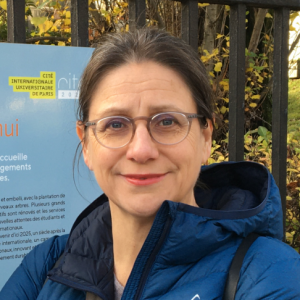
Pascale Marcotte

Michele Prats

Carmen Maria Ramos

KT Ravindran

Ilaria Rosani

Haifaa Abdulhalim

Zineb Chakir

Bouzid Sabeg
AFFILIATED INSTITUTES:

Information Technology
Diversity and genders.
- eTravel.com
- Car Rentals
- Travel Inspiration
- Write For Us

What is Heritage (Historical) Tourism?
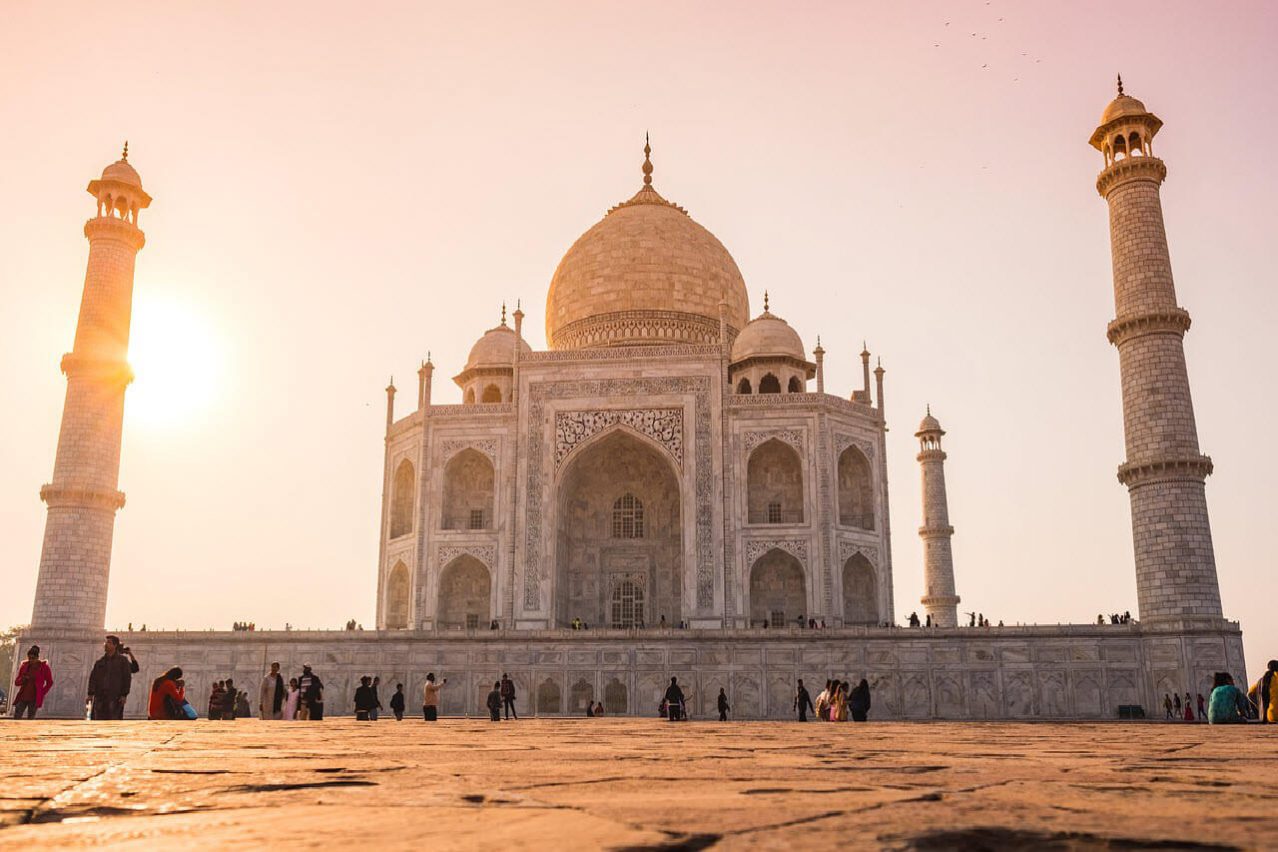
What is Heritage tourism?
Countries famous for historical tourism.

Category: Travel Industry
Save my name, email, and website in this browser for the next time I comment.
Get the best deals and helpful tips from eTravel.com

How Heritage Tourism Helps People Unlock the Past
Heritage tourism provides a great way to learn about the past, but what exactly is it? Check out this guide to learn about this new travel trend!

Throughout the past decade or so, people have begun to look at travel in a completely different way. Experiential travel has become a new buzzword to describe travel with that little extra something to it. This new way of traveling looks different for everyone whether you prefer outdoor activities, cultural exchanges, history, or a bit of everything!
This travel revolution means there are more and more opportunities to shape a trip around your particular interests. History buffs will be happy to know that heritage tourism has emerged as one of the new types of travel, and many different destinations and private organizations are focusing on creating their own heritage tourism programs to help cater to this growing tourism market!
Take a step back in time with Let’s Roam .
Here at Let’s Roam, we have no shortage of history buffs on our staff! Our knowledgeable team has created a range of exciting scavenger hunts that will help you explore the biggest tourist attractions and the hidden gems in a destination. These are all accessible via our handy Let’s Roam app . Plus, the Let’s Roam Explorer blog features hundreds of articles to help make trip planning easy!
Exploring the Past through Heritage Tourism
Below you’ll find a guide to heritage tourism and how it can help you unlock the past. We’ve included a description of what heritage tourism is and how it helps local communities. In addition, we’ve included a short list of some of our favorite heritage travel destinations!
What is heritage tourism?
The term heritage tourism has become a bit of a buzzword in recent years. However, you may find yourself wondering what exactly heritage tourism is. According to the National Trust for Historic Preservation, heritage tourism is “traveling to experience the places, artifacts, and activities that authentically represent the stories and people of the past and present.” This means spending time visiting historic places, museums, and archeological attractions.
However, heritage tourism is more than simply visiting an attraction and checking it off a long to-do list. It means taking the time to truly understand what you’re seeing as well as the impact it has on people. Who lived or worked there? What did their daily lives look like? How did they interact with others?
Heritage tourism is often linked with sustainability since it conveys a more conscious way of traveling. This type of travel generally goes hand in hand with using fewer natural resources. It can also be a great opportunity for tourism development in off-the-beaten-track destinations. This can then be a major contributor to broader economic development and a higher quality of life. Since this type of travel is generally different than mass travel, it also helps promote sustainable development and caring responsibly for cultural resources, historic resources, and natural resources.
What is the purpose of heritage tourism?
In the words of George Santayana, “Those who cannot remember the past are condemned to repeat it.” Heritage tourism serves as a way to connect us to the past. It helps us understand how people lived, loved, and laughed. Knowing this can help us better understand the world that we are currently living in. It can also help us analyze why certain things happened in history and how we can learn from it.
On a more personal level, heritage tourism can help people more closely identify with their own ancestors and heritage. There are many different tour operators that offer itineraries full of cultivated experiences that have a special emphasis on culture and history. A good example of this is Birthright, the program that sends young Jewish people to Israel to learn more about Judaism.
However, you don’t need to go on an organized tour for this. Instead, you can shape your own itinerary so that it incorporates certain aspects that you want to learn more about. For instance, as an American of German and British descent, I’ve made many trips to Germany and the United Kingdom to learn more about my family background.
How does heritage tourism impact destinations?
When placed under the stewardship of ethical institutions, nonprofit organizations, and partnerships with key stakeholders, heritage tourism has a much gentler approach than other types of tourism. It can offer many economic benefits to destinations. Case studies have shown that heritage tourists tend to stay longer in a destination. They also spend more money while they’re there. This means the economic impact of heritage tourists is greater than other types of tourists.
One of the most obvious economic benefits is that heritage tourism provides employment opportunities. These could range from historians to tour guides as well as support employees at the heritage sites. The tourism industry has one of the lowest barriers to entry when it comes to employment. Heritage tourism can create jobs that are likely to go to the local population. This means that the money stays in the local communities that need it most.
This, in turn, helps the local economy in numerous ways by allowing more money to be spent at local businesses. In some parts of the world, this could mean the difference between someone being able to stay in their hometown with their friends and family vs. having to go to a big city and look for work. This usually ensures that people have a wider support network nearby which is crucial to their well-being.
The money generated from tickets can also help preserve the monuments, artifacts, and heritage sites that you’re seeing. This is an incredibly important aspect of conservation. Many of the world’s most important historic sites are falling into disrepair due to unstable economies, civil wars, and other domestic issues. The revenue from ticket sales could make a huge difference in the upkeep and maintenance of the monuments.
What are some tips and tricks for heritage tourism?
If you’re trying to learn more about the past when visiting historic sites, make sure that you have at least a rough idea as to why the site is important. Although most places will provide enough information to piece together a basic idea, spending the time to read up on it before you go will make your experience much more fulfilling.
It’s also important to allow yourself plenty of time at each destination. This is the only way that you can truly immerse yourself in it. Also, try to avoid going to historic sites during peak travel hours. Having fewer tourists around makes it much easier to imagine what the places would have looked like.
What are some of the best destinations for heritage tourism?
Below you’ll find a list of some of our favorite heritage tourism destinations. While this list is in no way exhaustive, it does give you an idea of what types of things fall under the umbrella of heritage tourism. We’ve also included a short section on important things that you should know when visiting any of these destinations.
As one of the oldest civilizations in the world, India has a slew of heritage sites. These can give a comprehensive look into how it transformed from the Indus Valley civilization to the livable, chaotic country we know and love today. The country is full of UNESCO World Heritage sites so this is a good place to start your planning.
Where to go?
Most visitors begin their trip in Delhi. This is perfect for history buffs. Not only is Delhi the capital of India, but it’s also the location of many previous ancient cities. You can still find vestiges of these in the many forts and tombs in South Delhi as well as the winding streets of Old Delhi.
Old Delhi was designed by Shah Jahan of Taj Mahal fame. As you wander through the tiny streets crammed full of shops, eateries, and chai-wallahs, it feels like little has changed in the past few centuries. From Delhi, you can easily get on a train to Agra to see the Taj Mahal or Jaipur within a few hours. If you’re interested in religious history, you should also check out Amritsar in the northern state of Punjab. This is the heart of Sikhism and is the home of the breathtaking Golden Temple.
Alternatively, an overnight train ride will get you to the lakeside city of Udaipur or the spiritual capital of Varanasi where people deposit the bodies or ashes of their deceased family members in the holy Ganges River.
If you’re willing to brave the overnight bus, you can also head to Rishikesh. Sitting in the foothills of the Himalayas, Rishikesh was the birthplace of yoga and a very popular destination for spiritual and yoga-oriented retreats.
A short flight from Delhi will get you to Mumbai or Calcutta. These two cities were important economic and political centers for the British Raj. This is where you’ll find many colonial-era buildings that look like they could be straight out of London.
Important things to know .
The history of India is very long and complex. As you travel, it’s a good idea to jot things down as you go. This is particularly useful for keeping track of Hinduism’s most important gods and kings.
Also, India can be an extremely stressful and uncomfortable country to travel through. Virtually everywhere you go will be crowded, and it will feel like half of the population is trying to get a photo with you. Rather than stressing out about it, just try and take a deep breath and learn to enjoy the chaos. It will make your experience there much more enjoyable. With a more laid-back attitude, you’re also more likely to see how incredibly kind and welcoming most Indians are and what a great sense of humor they have.
Why go?
When it comes to tourist destinations, Thailand has pretty much everything you could possibly want. With the beaches of Koh Samui, the vibrant nightlife of Bangkok, and the green rolling hills of Chiang Mai, there is something for everyone here. Best of all, it’s full of amazing heritage sites that give a fascinating look into Thailand’s history and culture.
As one of the only countries in Southeast Asia that was never colonized, Thailand doesn’t really have the same European-style architecture that you find in neighboring countries. Bangkok is a vibrant capital city that is as sparkly as they come. The city is also home to incredible palaces and temples, including the famous Wat Pho which holds an enormous reclining Buddha. While you’re there, make sure not to miss the vibrant Grand Palace. We guarantee it’s not like any palace you have ever seen before!
Lying just a short train ride from Bangkok, the former capital city of Ayutthaya. It was once one of the biggest cities in the world with a population of nearly one million people. Today, you’ll find it mostly destroyed but even in its current state, it’s still breathtaking. The complex is famous for its 67 temples and ruins.
In the northern section of the country, Chiang Mai is famous for its myriad of temples. These tell an important story of the impact that Buddhism has had on the local population. This bustling city is the largest urban area in northern Thailand and has been a hub for remote workers and backpackers for decades. It’s a great place to base yourself if you want to enjoy some of Thailand’s gorgeous natural landscapes or visit one of the local hill tribes.
Important things to know.
In the late 90s and early 2000s, Thailand basically exploded onto the tourism scene. This huge influx of mass tourism brought with it a few problems. Sex tourism has become very prevalent and can sometimes include underage people. It also comes with drugs and other social issues. When you travel there, it’s best to avoid any of these things. This not only keeps you out of possible trouble but also shows respect for Thai culture.
New Zealand
New Zealand has long been famous for its beautiful scenery and outdoor activities. Despite its location in the middle of nowhere, they have also managed to develop into one of the world’s bucket list destinations.
There are many reasons to visit the Land of the Long White Cloud. Perhaps one of the world leaders when it comes to cultural heritage tourism, New Zealand proudly embraces its Maori culture, and the government has created many initiatives to help educate people on the country’s history. You will be greeted with a hearty Kia Ora from the moment your flight lands at Auckland Airport, and the opportunities to learn more about the indigenous population are endless.
Where to go?
Most long-haul flights fly into the city of Auckland on New Zealand’s North Island. Although there’s little in the way of historic sites here, a quick visit to the imposing Auckland Museum will teach you some important aspects of Maori culture.
From Auckland, you can take a bus or rent a car to visit various Maori sites located across the North Island. These include the Te Pā Tū Māori Village , the Waitangi Treaty Grounds where one of New Zealand’s founding documents was signed, and the Waipoua Forest, one of the oldest forests in New Zealand which plays an important role in Maori culture.
New Zealand is an amazing destination to visit but it can be painfully expensive to travel through. If you’re traveling on a budget, we highly recommend renting a campervan that you can sleep in. This can help save a lot of money rather than staying in expensive hotel rooms.
It’s hard to think of heritage tourism and not imagine Italy. The ancient ruins of the Coliseum and the Roman Forum stand testament to an advanced society that thrived over two millennia ago. Meanwhile, the Duomo and Uffizi Museum in Florence holds some of the world’s most spectacular art.
One of the great things about traveling through Italy is that it has a little bit of everything. And everything they have is magical. From small towns lined with cobblestone streets that have barely changed for hundreds of years to bustling metropolises that have historic sites hidden behind every corner, there is always something interesting for history buffs to explore. As the icing on the cake, the gastronomic scene is incomparable.
The major cities of Rome, Venice, and Florence should be the first stop on a heritage tourism tour. If you want to focus on smaller towns and villages, you can always visit the spell-binding villages of Cinque Terre National Park or hang around some of the smaller towns of Tuscany. Italy has heritage sites virtually everywhere so you really can’t go wrong! Find out more about exploring this beautiful country on our detailed guide of how to spend a week in Italy !
Italy is full of tourists all year round. However, it’s literally bursting at the seams during the high season. Try to avoid going in the summer if you can. It will make your overall trip much more enjoyable since you won’t be battling crowds or wasting precious vacation time standing in lines.
What other places should you go?
While we’ve provided just a short list of great destinations for heritage tourism, there are still many more! Mexico , Egypt, Morocco, Japan, the Czech Republic, Sudan, and Iran are also all great options. They’re all full of cultural heritage sites that are sure to wow even the most jaded history buff!
Are you ready to roam?
We hope this guide to heritage tourism has left you inspired to take a step back into the past! As always, we would love to hear your feedback, and please let us know of any tips, tricks, or destinations we may have missed!
If you’d like to find more information about these destinations mentioned above, make sure to check out the Let’s Roam Explorer blog . Here you’ll find hundreds of destination guides, must-see lists, and travel blogs that will help make your vacation planning easier. Don’t forget to download the Let’s Roam app before you go. This gives you access to all of our great scavenger hunts , ghost walks, art tours, and pub crawls.
Frequently Asked Questions
The purpose of heritage tourism is to explore the past by visiting archeological sites, museums, and historic attractions. Read more about heritage tourism at the Let’s Roam Explorer blog !
Activities normally associated with heritage tourism could be visiting the ancient ruins of Rome or Mexico , going to a local museum, or even going on a walking tour focusing on unique architecture.
Heritage tourism is different than tourism because it focuses on activities and attractions that are dedicated to preserving the past.
Understanding our heritage is important because it’s easier to understand the world around us. Heritage tourism can play a key role in unlocking the past and bringing it back to life.
If you’re looking for a fascinating heritage tourism destination , look no further than India, Thailand, Italy , New Zealand, Mexico, Morocco, or Egypt!
Featured Products & Activities

Through our community-based approach, we design tourism experiences to support tradition-bearers and to ensure their communities benefit from having their cultural heritage shared with the world.
The Cultural Heritage Tourism Initiative uses research and presentation methods from the Smithsonian Folklife Festival to curate engaging, inclusive, and sustainable community-based tourism experiences. We help hosts convey their heritage by working together to create extraordinary experiences—both immersive and unforgettable—instilling a sense of place and leaving travelers with enduring memories.
Our process prioritizes an equitable relationship in order to ensure communities directly benefit from sharing their cultural heritage worldwide. Our work in tourism leverages other synergistic initiatives, such as the Center’s work with artisans and the Festival. Activities include cultural heritage documentation, participatory community engagement, destination assessment and asset inventory, experience design and product development, workshops and trainings, enterprise development, market access and linkages, policy reform, and strategic planning.

UPLIFT North Carolina
The Center’s partnership with UPLIFT North Carolina provides participatory workshops and mentorship, working with partners to support and develop festivals and cultural heritage tourism experiences that benefit both visitors and communities. Our partnership is focused on strengthening rural economies through bolstering quality tourism experiences. The two-year project began in July 2023.
UPLIFT supports tourism through community-driven efforts in rural North Carolina. This team works regionally—across county borders—to support local tourism leaders and practitioners in realizing their vision for tourism in their community. Their work supports natural, recreational, cultural, agricultural, culinary, built, and additional areas of tourism.
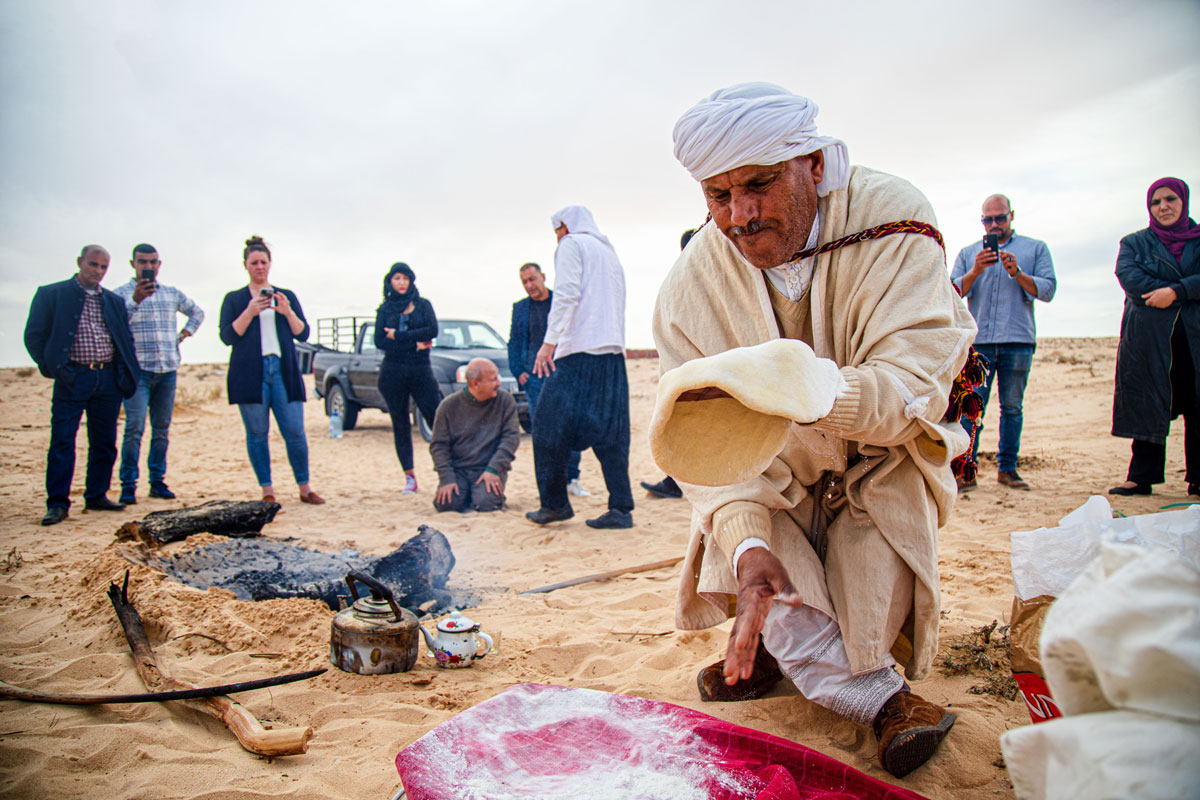
At the nexus of North Africa, the Middle East, and Europe, Tunisia is a confluence of history and culture. Thousands of archaeological and cultural sites, including UNESCO-recognized Carthage, El Jem, and Kairouan, are a visual testament to its diverse heritage. Tunisia’s living culture is also vibrant, from medinas bustling with artisanal production to the traditional practices of Indigenous Amazigh communities. However, despite this abundance of cultural heritage, tourists visiting Tunisia seldom leave its low-cost Mediterranean beach resorts.
In 2021, we launched a partnership with the USAID Visit Tunisia Activity to research and document Tunisia’s living culture and develop equitable and sustainable models of community-based cultural heritage tourism. Our work includes training, mentorship, and exchange for local festival organizers and research-based product development to share Tunisia’s living culture with visitors and the world.
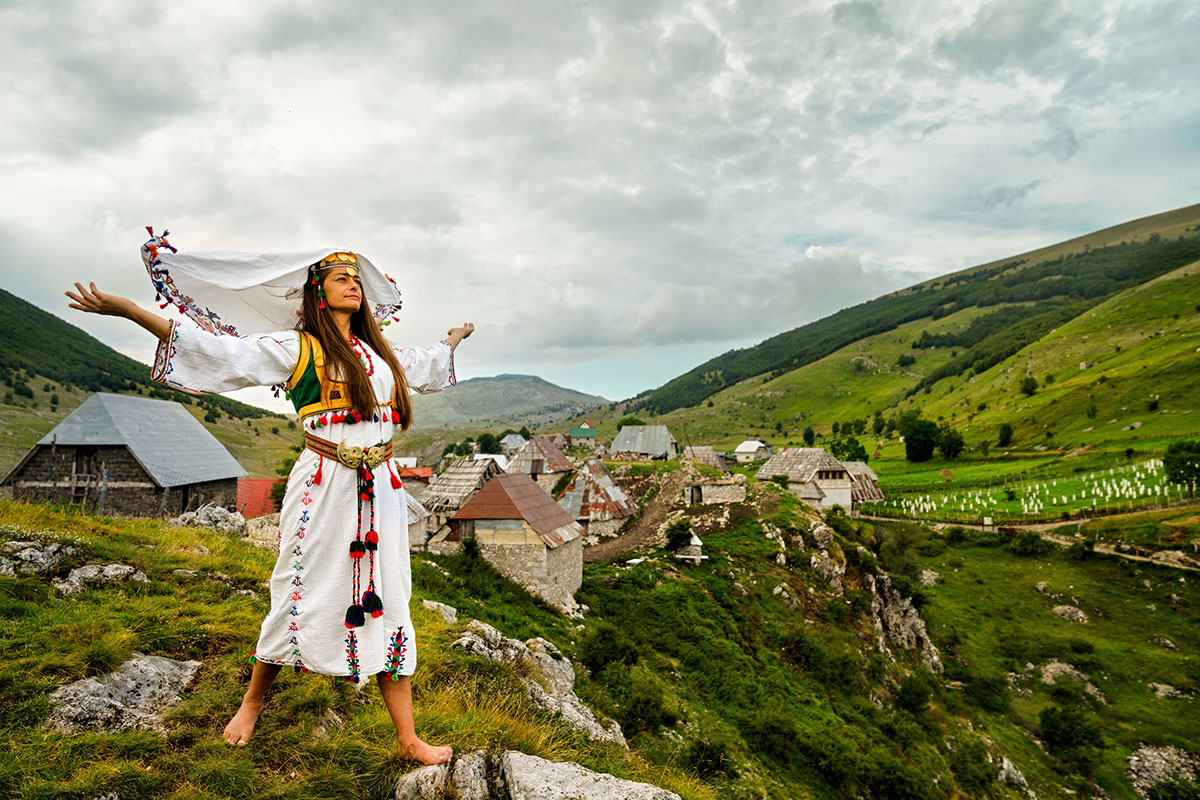
Bosnia and Herzegovina
Situated in southeastern Europe, where Eastern and Western cultures meet, Bosnia and Herzegovina has a rich history of religious, natural, and cultural diversity. We partnered with USAID Turizam to highlight the contemporary cultural life of Bosnia and Herzegovina—experienced through music, dance, food, and craft. In 2021, we led workshops for more than a hundred cultural festival organizers, sharing best practice and case studies from the Smithsonian Folklife Festival. In 2022, we led workshops for more than a hundred tourism enterprises to share our approach to community-centered, research-based cultural heritage tourism product development, incorporating cultural practices into tourism experiences that promote cultural sustainability and exchange.

Prior to 2015, most visitors to Armenia stayed in the capital and ventured out only to visit iconic natural landscapes and built heritage sites. This model limited interaction and exchange between visitors and local people and concentrated tourism spending in the capital, Yerevan. With USAID Armenia, we co-created the My Armenia Cultural Heritage Tourism Program, a seven-year program that piloted a new, community-centered, and research-based approach to experiential tourism. The program concluded in December 2021, but the impact remains—a radically different approach to tourism and more than 150 resilient tourism and artisan enterprises.





By Rachel Barton
Layers of Armenia’s fascinating cultural heritage are embedded in the country’s pristine landscapes, which are dotted with ancient cave dwellings, mountain monasteries, fortresses, and Armenian khatchkars (cross-stones).

By Jackie Flanagan Pangelinan
Vahagn Hambardzumyan and Zara Gasparyan are the husband-and-wife team behind Sisian Ceramics. Founded in 2010, the studio they named for their hometown is located in Armenia’s Syunik Province.

By Tony Cohn
The oldest known evidence of winemaking was discovered in the Areni-1 cave complex. It’s this very site in southern Armenia that has had a major impact on how archeologists understand humanity’s earliest civilizations.

By Rebecca Wall
What makes a wine Armenian? Irina Ghaplanyan and Vahe Keushguerian emphasize the unique grape varietals indigenous to Armenia and the country’s exceptional terroir .

By Halle Butvin
In October 2018, the My Armenian program hosted the second annual My Handmade Armenia Festival in Yerevan and celebrated the official launch of FestivAr Association of Armenian Festivals.

By Yuri Horowitz
In August 2020, Yerevan Magazine printed a special issue featuring opportunities to travel within Armenia, based on My Armenia research and collaborations.
Donors & Local Partners
- Ferring Pharmaceuticals USAID
Local Partners
- Institute of Archaeology and Ethnography, National Academy of Sciences of the Republic of Armenia Teryan Cultural Center
Email powered by MailChimp ( Privacy Policy , Terms of Use )
The Importance of Cultural Heritage Tourism
(Click on image to see larger view)
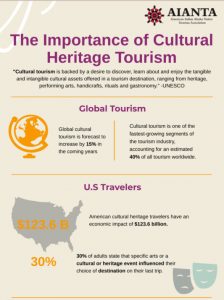
“Cultural tourism is backed by a desire to discover, learn about and enjoy the tangible and intangible cultural assets offered in a tourism destination, ranging from heritage, performing arts, handicrafts, rituals and gastronomy.” -UNESCO
Global Tourism
Global cultural tourism is forecast to increase by 15% in the coming years
Cultural tourism is one of the fastest-growing segments of the tourism industry, accounting for an estimated 40% of all tourism worldwide.
U.S Travelers
American cultural heritage travelers have an economic impact of $123.6 billion.
30% of adults state that specific arts or a cultural or heritage event influenced their choice of destination on their last trip.
Cultural Tourism Spending
Rural arts organizations attract more outside visitors than urban arts organizations ( 31% vs 14% ). These visitors spend money on admissions, parking, dining, etc., contributing directly to local economies.
49% of cultural travelers will pay more for lodging that has a distinctive cultural or heritage component (historic building, local art or decor, architecture, etc.)
Types of Cultural Heritage Tourism
- Culinary tourism, food sovereignty
- National & regional parks, eco-tourism, wildlife tourism
- Sports, games & other athletic events
- Museums. libraries & cultural centers
- Annual festivals, powwows, major events
- Historic sites & commemorations
- Rivers, trails & conservation areas
- Hogans, earth lodges, longhouses, clan houses
- Agritourism
- Performing arts & storytelling
Economic Benefits of Cultural Heritage Tourism
- Injects new money into the economy, boosting businesses and tax revenues
- Creates new jobs
- Funds new businesses, events and attractions, helping diversify the local economy
- Supports small businesses, including artists, local guides, educators
- Helps increase a customer base for local businesses
- Promotes the active preservation and protection of important local resources
- Allows tribes and indigenous communities to define and tell their own stories
MyTravel Resources.com The Goss Agency Inc. UNESCO Mandala Research NEA: Rural Arts, Design & Innovation in America Study

What is cultural tourism and why is it growing?
Disclaimer: Some posts on Tourism Teacher may contain affiliate links. If you appreciate this content, you can show your support by making a purchase through these links or by buying me a coffee . Thank you for your support!
Cultural tourism is big business. Some people seek to embark on their travels with the sole intention of having a ‘cultural’ experience, whereas others may experience culture as a byproduct of their trip. We can argue that there is some form of cultural tourism in most holidays (even when taking an all-inclusive holiday you might try to local beer, for example).
But what do we mean by the term ‘cultural tourism’? What’s it all about? In this post I will explain what is meant by the term cultural tourism, providing a range of academic definitions. I will also explain what the different types of cultural tourists are, give examples of cultural tourism activities and discuss the impacts of cultural tourism. Lastly, I will provide a brief summary of some popular cultural tourism destinations.
What is cultural tourism?
Cultural tourism is the act of travellers visiting particular destinations in order to experience and learn about a particular culture . This can include many activities such as; attending events and festivals, visiting museums and tasting the local food and drinks.
Cultural tourism can also be an unintentional part of the tourism experience, whereby cultural immersion (with the local people, their language, customs, cuisine etc) is an inevitable part of a person’s holiday.
Cultural tourism definitions
It has been suggested that tourism is the ideal arena in which to investigate the nature of cultural production (MacCannell, 1976). Tourism provides endless opportunities to learn about the way other people live, about their society and their traditions. Whether you are attending the Running of the Bulls Festival in Pamplona , visiting the pyramids in ancient Egypt , taking a tour of the tea plantations in China or enjoying the locally brewed Ouzo on your all-inclusive holiday to Greece, you will inevitably encounter some form of cultural tourism as part of your holiday experience.
The World Tourism Organisation (WTO) (1985) broadly define cultural tourism as the movements of persons who satisfy the human need for diversity, tending to raise the cultural level of the individual and giving rise to new knowledge, experience and encounters. Cultural tourism is commonly associated with education in this way, some describing it more narrowly as educational cultural tourism (e.g. Bualis and Costa, 2006; Harner and Swarbrooke, 2007; Richards, 2005).
Although a common, more specific definition has not been agreed amongst academics due to the complexity and subjectivity of the term, there do appear to be two distinct viewpoints. The first focusses upon the consumption of cultural products such as sites or monuments (Bonink, 1992; Munsters, 1994), and the second comprises all aspects of travel, where travellers learn about the history and heritage of others or about their contemporary ways of life or thought (MacIntosh and Goeldner, 1986).
Csapo (2012) pertains that the umbrella term of cultural tourism can encompass a number of tourism forms including heritage (material e.g. historic buildings and non-material e.g. literature, arts), cultural thematic routes (e.g. spiritual, gastronomic, linguistic), cultural city tourism, traditions/ethnic tourism, events and festivals, religious tourism and creative culture (e.g. performing arts, crafts).
Types of cultural tourists
In attempt to understand the scope of cultural tourism academics have developed a number of typologies, usually based upon the tourist’s level of motivation.
Bywater (1993) differentiated tourists according to whether they were culturally interested, motivated or inspired.
Culturally interested tourists demonstrate a general interest in culture and consume cultural attractions casually as part of a holiday rather than consciously planning to do so.
Culturally motivated tourists consume culture as a major part of their trip, but do not choose their destination on the basis of specific cultural experiences, whereas for culturally inspired tourists culture is the main goal of their holiday.
A more complex typology was proposed by McKercher and Du Cros (2002), who defined tourists based upon the depth of the cultural experience sought, distinguishing them in to one of five hierarchical categories.
The first is the purposeful cultural tourist for whom cultural tourism is their primary motive for travel. These tourists have a very deep cultural experience.
The second category is the sightseeing cultural tourist for whom cultural tourism is a primary reason for visiting a destination, but the experience is more shallow in nature.
The serendipitous cultural tourist does not travel for cultural reasons, but who, after participating, ends up having a deep cultural tourism experience, whilst the casual cultural tourist is weakly motivated by culture and subsequently has a shallow experience.
Lastly, the incidental cultural tourist is one who does not travel for cultural tourism reasons but nonetheless participates in some activities and has shallow experiences.
Adapting this theory, Petroman et al (2013) segments tourists based upon their preferred cultural activities.
The purposeful cultural tourist, described as according to Mckercher and Du Cros (2002), enjoys learning experiences that challenge them intellectually and visits history museums, art galleries, temples and heritage sites that are less known.
The tour-amateur cultural tourist is akin with the sightseeing cultural tourist above and they often travel long distances, visit remote areas, enjoy tours and wandering through the streets.
The occasional cultural tourist plays a moderate role in the decision of travelling and enjoys an insignificant cultural experience, their preferred activities being to visit attractions and temples that are easy to reach and to explore, although not to the extent that the tour-amateur cultural tourist does.
The incidental cultural tourist plays a small or no role in the decision to travel and enjoys an insignificant cultural experience, whilst visiting attractions that area within easy reach and heritage theme parks.
The last segment is the accidental cultural tourist, who plays a small or no role in the decision to travel but enjoys a deep cultural experience. This tourist type is diverse and as such has no preferred activities attributed to it.
Importance of cultural tourism
Cultural tourism is important for many reasons. Perhaps the most prominent reason is the social impact that it brings.
Cultural tourism can help reinforce identities, enhance cross cultural understanding and preserve the heritage and culture of an area. I have discussed these advantages at length in my post The Social Impacts of Tourism , so you may want to head over there for more detail.
Cultural tourism can also have positive economic impacts . Tourists who visit an area to learn more about a culture or who visit cultural tourism attraction, such as museums or shows, during their trip help to contribute to the economy of the area. Attractions must be staffed, bringing with it employment prospects and tertiary businesses can also benefit, such as restaurants, taxi firms and hotels.
Furthermore, for those seeking a deep cultural experience, options such as homestays can have positive economic benefits to the members of the community who host the tourists.
Read also: Overtourism explained: What, why and where
Personally, I think that one of the most important benefits of cultural tourism is the educational aspect. Tourists and hosts alike can learn more about different ways of life. This can help to broaden one’s mind, it can help one to think differently and to be more objective. These are qualities that can have many positive effects on a person and which can contribute to making them more employable in the future.
Cultural tourism activities
Whether a tourist is seeking a deep cultural experience or otherwise, there are a wide range of activities that can be classified as cultural tourism. Here are a few examples:
- Staying with a local family in a homestay
- Having a tour around a village or town
- Learning about local employment, for example through a tour of a tea plantation or factory
- Undertaking volunteer work in the local community
- Taking a course such as cooking, art, embroidery etc
- Visiting a museum
- Visiting a religious building, such as a Mosque
- Socialising with members of the local community
- Visiting a local market or shopping area
- Trying the local food and drink
- Going to a cultural show or performance
- Visiting historic monuments
Impacts of cultural tourism
There are a range of impacts resulting from cultural tourism activities, both good and bad. Here are some of the most common examples:
Positive impacts of cultural tourism
Revitalisation of culture and art.
Some destinations will encourage local cultures and arts to be revitalised. This may be in the form of museum exhibitions, in the way that restaurants and shops are decorated and in the entertainment on offer, for example.
This may help promote traditions that may have become distant.
Preservation of Heritage
Many tourists will visit the destination especially to see its local heritage. It is for this reason that many destinations will make every effort to preserve its heritage.
This could include putting restrictions in place or limiting tourist numbers, if necessary. This is often an example of careful tourism planning and sustainable tourism management.
This text by Hyung You Park explains the principles of heritage tourism in more detail.
Negative impacts of cultural tourism
Social change.
Social change is basically referring to changes in the way that society acts or behaves. Unfortunately, there are many changes that come about as a result of tourism that are not desirable.
There are many examples throughout the world where local populations have changed because of tourism. Perhaps they have changed the way that they speak or the way that they dress. Perhaps they have been introduced to alcohol through the tourism industry or they have become resentful of rich tourists and turned to crime. These are just a few examples of the negative social impacts of tourism.
Read also: Business tourism explained: What, why and where
Globalisation and the destruction of preservation and heritage.
Globalisation is the way in which the world is becoming increasingly connected. We are losing our individuality and gaining a sense of ‘global being’, whereby we more and more alike than ever before.
Globalisation is inevitable in the tourism industry because of the interaction between tourists and hosts, which typically come from different geographic and cultural backgrounds. It is this interaction that encourage us to become more alike.
Standardisation and Commercialisation
Similarly, destinations risk standardisation in the process of satisfying tourists’ desires for familiar facilities and experiences.
While landscape, accommodation, food and drinks, etc., must meet the tourists’ desire for the new and unfamiliar, they must at the same time not be too new or strange because few tourists are actually looking for completely new things (think again about the toilet example I have previously).
Tourists often look for recognisable facilities in an unfamiliar environment, like well-known fast-food restaurants and hotel chains. Tourist like some things to be standardised (the toilet, their breakfast, their drinks, the language spoken etc), but others to be different (dinner options, music, weather, tourist attractions etc).
Loss of Authenticity
Along similar lines to globalisation is the loss of authenticity that often results from tourism.
Authenticity is essentially something that is original or unchanged. It is not fake or reproduced in any way.
The Western world believe that a tourist destination is no longer authentic when their cultural values and traditions change. But I would argue is this not natural? Is culture suppose to stay the same or it suppose to evolve throughout each generation?
Take a look at the likes of the long neck tribe in Thailand or the Maasai Tribe in Africa. These are two examples of cultures which have remained ‘unchanged’ for the sole purpose of tourism. They appear not to have changed the way that they dress, they way that they speak or the way that they act in generations, all for the purpose of tourism.
You can learn more about what is authenticity in tourism here or see some examples of staged authenticity in this post.
Culture clashes
Because tourism involves movement of people to different geographical locations cultural clashes can take place as a result of differences in cultures, ethnic and religious groups, values, lifestyles, languages and levels of prosperity.
Read also: Environmental impacts of tourism
The attitude of local residents towards tourism development may unfold through the stages of euphoria, where visitors are very welcome, through apathy, irritation and potentially antagonism when anti-tourist attitudes begin to grow among local people. This is represented in Doxey’s Irritation Index, as shown below.

Tourist-host relationships
Culture clashes can also be exasperated by the fundamental differences in culture between the hosts and the tourists.
There is likely to be economic inequality between locals and tourists who are spending more than they usually do at home. This can cause resentment from the hosts towards the tourists, particularly when they see them wearing expensive jewellery or using plush cameras etc that they know they can’t afford themselves.
Further to this, tourists often, out of ignorance or carelessness, fail to respect local customs and moral values.
There are many examples of ways that tourists offend the local population , often unintentionally. Did you know that you should never put your back to a Buddha? Or show the sole of your feet to a Thai person? Or show romantic affection in public in the Middle East?
Cultural tourism destinations
Whilst many would argue that cultural tourism is ingrained to some extent in travel to any country, there are some particular destinations that are well-known for their ability to provide tourists with a cultural experience.
Cultural tourism in India
It is impossible not to visit India and experience the culture. Even if you are staying in a 5 star Western all-inclusive hotel in Goa, you will still test Indian curries, be spoken to by Indian workers and see life outside of the hotel on your transfer to and from the airport.
For most people who travel to India, however, cultural tourism is far more than peeking outside of the enclave tourism bubble of their all-inclusive hotel.
Thousands of international tourists visit the Taj Mahal each year. Many more people visit the various Hindu and Buddhist temples scattered throughout the country as well as the various Mosques. Some visit the famous Varanassi to learn about reincarnation.
Most tourists who visit India will try the local dal, eat the fresh mutton and taste chai.
All of these activities are popular cultural tourism activities.
Cultural tourism in Thailand
Thailand is another destination that offers great cultural tourism potential. From the Buddhist temples and monuments and the yoga retreats to homestays and village tours, there are ample cultural tourism opportunities in Thailand .
Cultural tourism in Israel
Israel is popular with religious tourists and those who are taking a religious pilgrimage, as well as leisure tourists. I visited Israel and loved travelling around to see the various sights, from Bethlehem to Jerusalem . I’m not religious in any way, but I loved learning about the history, traditions and cultures.
Cultural tourism in New York
New York is a city that is bustling with culture. It is world famous for its museums and you can learn about anything from World War Two to the Twin Towers here.
Many would argue that shopping is ingrained in the culture of those who live in New York and many tourists will take advantage of the wide selection of products on offer and bargains to be had on their travels to New York.
You can also treat yourself to watching a traditional West End show, trying some of the famous New York Cheesecake and enjoying a cocktail in Times Square!
Cultural tourism in Dubai
Dubai might not be the first destination that comes to mind when you think of cultural tourism, but it does, in fact, have a great offering.
What I find particular intriguing about Dubai is the mix of old and new. One minute you can be exploring the glitz and glamour of the many high-end shopping malls and skyscrapers and the next you can be walking through a traditional Arabian souk.
Cultural tourism: Conclusion
As you can see, there is big business in cultural tourism. With a wide range of types of cultural tourists and types of cultural tourism experiences, this is a tourism sector that has remarkable potential. However, as always, it is imperative to ensure that sustainable tourism practices are utilised to mitigate any negative impacts of cultural tourism.
If you are interested in learning more about topics such as this subscribe to my newsletter ! I send out travel tips, discount coupons and some material designed to get you thinking about the wider impacts of the tourism industry (like this post)- perfect for any tourism student or keen traveller!
Further reading
Want to learn more about cultural tourism? See my recommended reading list below.
- Cultural Tourism – A textbook illustrating how heritage and tourism goals can be integrated in a management and marketing framework to produce sustainable cultural tourism.
- Deconstructing Travel: Cultural Perspectives on Tourism – This book provides an easily understood framework of the relationship between travel and culture in our rapidly changing postmodern, postcolonial world.
- Re-Investing Authenticity: Tourism, Place and Emotions – This ground-breaking book re-thinks and re-invests in the notion of authenticity as a surplus of experiential meaning and feeling that derives from what we do at/in places.
- The Business of Tourism Management – an introduction to key aspects of tourism, and to the practice of managing a tourism business.
- Managing Sustainable Tourism – tackles the tough issues of tourism such as negative environmental impact and cultural degradation, and provides answers that don’t sacrifice positive economic growth.
- Tourism Management: An Introduction – An introductory text that gives its reader a strong understanding of the dimensions of tourism, the industries of which it is comprised, the issues that affect its success, and the management of its impact on destination economies, environments and communities.
- Responsible Tourism: Using tourism for sustainable development – A textbook about the globally vital necessity of realising sustainable tourism.
Liked this article? Click to share!
How cultural experiences are becoming the next big travel trend
The international border may still be closed, but Australians are opening up to new domestic travel experiences. And businesses that collaborate with Indigenous groups are set to be the big winners.
Key points:
- Cultural tourism can include a people's history, how they lived on the land, bush medicines, tucker, and dreamtime stories
- Fearful of large groups of tourists, operators are finding smaller groups allowed for a deeper local connection anyway
- The number of domestic tourists participating in Indigenous experiences grew 41 per cent between 2013–2018
Tourism operators say travellers are seeking genuine engagement with traditional owners when choosing to holiday in their own back yards.
As they do, the operators hope it will break down cultural and financial barriers.
Fraser Coast tourism operator and owner of Hervey Bay Eco Marine Tours, Wil Hikuwai, takes tours on land and sea.
He said he believed he and his wife Jacqui were unique in the Hervey Bay area for their approach to collaborating with the local First Nations people.
"It was a natural thing to do to involve the Butchulla people," he said.
"You can't tell someone else's story. You could, but it's not going to be the same.
"To have these guys come on board and speak about how they grew up, what they learnt from their fathers and grandfathers, and the stories that were handed down — it's priceless."
A tool for reconciliation
Across the water on Fraser Island, chair of the Butchulla Aboriginal Corporation Veronica Bird said there are plans to establish tours led by the local land and sea rangers.
"Our young people have a yearning to connect to country and we have an excellent relationship with Queensland Parks and Wildlife who provide those opportunities for [them] to work on the island," she said.
"We want to empower their capacity so we can then establish our own Butchulla tourism business. We will [then] have a skill set that we can call on."
Butchulla man Dinka Dinka, who also goes by the name Travis, said Indigenous histories deserved a bigger share of the limelight in local tourism.
He works as a tour guide teaching guests about his people's history, how they lived on the land, bush medicines, tucker, and dreamtime stories.
He said there was a generational effect for his people.
"It's a stepping stone for future generations," he said.
"It feels awesome to have your kids going out there and doing what you do.
"Some of them speak [the language] better than I do. I know the future's in good hands."
To the north, Nicole Tiger organises cultural tours with her husband, Byron Broome, and their organisation, the Taribelang Cultural Aboriginal corporation, which is run in collaboration with the local Taribelang elders.
They tour iconic Bundaberg locations like Mon Repos, the largest loggerhead turtle nesting beach on the east coast.
She said the tours were a source of pride for the local Indigenous community.
"It brings tourism dollars to the industry but also helps with healing," she said.
"All [Indigenous] culture, history, and Dreamtime stories are completely different. Tourists like it … because it's an eye-opener.
She urged non-Indigenous people to take a tour as a step toward reconciliation.
"We want to break barriers so we can better understand each other," she said.
COVID-19 a blow to vulnerable communities
At a time of year when thousands of tourists would normally be flocking to Queensland for events like NAIDOC Week and Reconciliation fun runs, coronavirus lockdowns have kept many away.
Communities like Cherbourg in the South Burnett will reopen today in line with eased restrictions across the state , but Ration Shed administration officer Bronwyn Tipman said it may never really go back to normal tourism operation.
"Within our organisation and our elders, we don't think we will ever return back to large groups that we used to host," she said.
"Not just [because of] COVID-19, but in the Aboriginal community winter is a primary concern, the flu season.
"We may have to scale things down to keep everybody safe."
But she said smaller groups had allowed for a deeper local reconnection.
"We have been busy hosting regional and international visitors in the last three years," she said.
"The community and families are spending more time together. There is a positive feeling within the community."
Reclaiming what's left of the tourism year
The Queensland Government had declared 2020 the Year of Indigenous Tourism , hoping to bring Indigenous and non-Indigenous tourism operators together.
It has turned into one of the toughest years for the industry, but Bundaberg Tourism CEO Katherine Reid said things were bouncing back.
She said Australian operators should see Indigenous culture as an opportunity.
"When we look at statistics, the number of domestic tourists participating in Indigenous experiences grew 41 per cent between 2013–2018," she said.
"But when we look at the whole amount of domestic visitors, people within Australia, it is 0.5 per cent of domestic visitors.
"There is much opportunity there for us to understand our culture a lot more.
"New Zealand is a great example of embracing their Indigenous culture and we can learn a lot from that here."
Walking Together is taking a look at our nation's reconciliation journey and where we've been and asks the question — where do we go next?
Join us as we listen, learn and share stories from across the country that unpack the truth-telling of our history and embrace the rich culture and language of Australia's First People.
- X (formerly Twitter)
Related Stories
Restrictions easing across queensland today — here's what you can do.
Travel restrictions to lift from Queensland's most remote communities
Peak tourism season is almost here but Kakadu operators say famous sites are still closed
'History in the making' — or the telling — as traditional owners celebrate 'huge stepping stone'
- Business, Economics and Finance
- Indigenous Culture
- Lifestyle and Leisure
- Tourism and Leisure Industry
- Travel and Tourism (Lifestyle and Leisure)

The Fantasy of Heritage Tourism
The first generation of immigrants wants to survive, the second wants to assimilate, and the third wants to remember, the sociologist Marcus Lee Hansen wrote in 1938. The fourth, fifth, and sixth? Apparently they now want to go on a luxury vacation to visit the Welsh coal mines their ancestors crossed an ocean to escape.
So-called heritage tourism has grown into its own travel category, like skiing and whale watching. In 2019, an Airbnb survey found that the share of people traveling to “trace their roots” worldwide had increased by 500 percent since 2014; the company announced that it was teaming up with 23andMe, the DNA-testing service, to meet this demand, offering trips to clients’ ancestral homelands. Ancestry, the company behind the family-search website, has partnered with a travel agency. The governments of Germany and Scotland have websites devoted to heritage tourism. Conde Nast Traveller is all over this trend . In Dublin, the Shelbourne Hotel’s “genealogy butler” can research your Irish side, if you so please. The Conte Club, a boutique travel service known for its focus on privacy and members-only jet rentals, will take you and your partner on a week-long “ DNA-mapped journey ” starting at $35,000 (flights not included). Should you wish to go very far back in time, the agency can make that happen. Rebecca Fielding, the CEO, told me about one client who was obsessed with the idea that he had descended from Genghis Khan. DNA tests can’t possibly prove a connection that old, Fielding said, but the Conte Club was happy to arrange his trip to Mongolia.
Kyle Betit, the genealogist who runs Ancestry’s travel business, told me that his clients experience something much more “personal” and “deep” than what’s available to “the typical tourist.” Ancestry genealogists can create bespoke itineraries tailored to a family’s history, down to the villages or even the streets where they once lived. The company’s most popular destinations were Italy and Ireland. In 2023, it took 44 individual clients or groups on such voyages. This year, it’s offering two genealogy cruises .
[ Read: What can you do with the world’s largest family tree? ]
Who takes such a trip? According to the Airbnb survey, Americans top the list, followed by Canadians and Australians. Those most likely to go are between the ages of 60 and 90—mainly retirees with cash to spare. Dave Richard Meyrick, whom Ancestry put me in touch with, is a representative example.
Meyrick is 73 and lives in Las Vegas, where he worked at the MGM Grand hotel and casino until his retirement. He recently came into a small fortune—not at the poker table, but after winning a lawsuit against the U.S. military. The Agent Orange that the Army sprayed over Vietnam when he was fighting there caused Meyrick to lose most of his eyesight years after he returned. The newly enriched man has no wife and no kids—“that I know of,” he told me, with a chuckle—so indulging in a decadent vacation was the logical course of action. The question was where to go.
He had recently been on an unremarkable cruise through the Gulf of Mexico when a free trial for Ancestry.com appeared on his screen in spring 2020. He learned that he was ninth in a line of Richard Meyricks. He found his paternal grandfather—who was born in Wales and fought for Canada in World War I—in mustard-gas records that might explain his grandpa’s weird cough. Meyrick had always assumed that his paternal grandmother’s ancestors were also from Wales; actually, they were German, from the medieval city of Heidelberg and the Alpine region of Bavaria.
Soon he got a promotional email from Ancestry: If he wanted to see where his father’s parents came from, the company was there to help. He replied, intrigued. Betit scheduled a video call. The team helped him book a trip to Germany, where his father’s ancestors were innkeepers on the grounds of a princely castle. The inn has been renovated, and is now the chic office of a finance firm. During a stop in Munich, Meyrick drank beer at Oktoberfest. He then went to Wales, where another branch of his father’s ancestors worked the mines and steel mills in a village that dates back to the 1600s.
He told me that the deterioration of his eyesight had changed his perception of traveling. He couldn’t see the sites or landscapes very well, but his genealogy helped him feel connected to the places he visited. At the Welsh church where his ancestors had been baptized, married, and buried, Meyrick met a local history buff, who told him a story. In the early 1700s, a villager with a habit of hiding behind stagecoaches to rob the wealthy messed with the wrong rich man, a big landowner, and was hanged. The historian was convinced that the unfortunate thief was among Meyrick’s ancestors. Could this fabulous connection be true? Ancestry’s genealogists weren’t able to confirm it, and Meyrick said that his source had seemed a little senile. Still, he assured me, the $50,000 trip was “money well spent.”
This year, he plans to do his mother’s side.
Heritage tourism may only be catching on among Americans now, but governments have been pushing it for decades.
After World War II, tourism was considered a major component of diplomacy. Marshall Plan funds were earmarked to build not just roads and city centers but also ski slopes and airports. The Eisenhower administration created the People-to-People Program, promoting international pen-pal networks and sporting events in hopes of uniting countries against the Soviet Union.
Europe welcomed America’s tourists, and tried to encourage more to come. Some hosted “homecomings”—festivals meant to lure the children and grandchildren of emigrants back to visit. Greece held one in 1951; Lebanon, in 1955; Sweden, in 1965–66. Ireland hosted annual homecomings starting in 1953. These campaigns were, in the words of the Swedish historian Adam Hjorthén, “the earliest coordinated attempts at adopting ancestry in the promotion of mass tourism.”
They were also a failure, as people didn’t go. The Irish homecoming— called An Tóstal , or “a gathering,” and sponsored by the founder of Pan Am Airways—went on for six years before a tourist-board report admitted that the word fiasco didn’t sufficiently convey how badly the effort had flopped.
For heritage tourism to take off, a few changes had to occur. First, plane tickets needed to get a lot cheaper. As the Pan Am founder, of all people, should have known, transatlantic flights then cost a lot of money—airfare from New York to London in 1950 was about $8,700 in today’s dollars . That year, only about one in 250 Americans went overseas at all. In 2019, at the pre-pandemic peak of traveling, this number was one in three .
Even if they had the money, travelers might not have chosen to spend it on connecting with their homelands. For a long time, genealogy struck many people in the United States as elitist. Most European settlers, the historian Russell Bidlack wrote , “had escaped from a society where the traditions of inheritance and caste had denied them opportunity for a better life.” Genealogy was for people obsessed with nobility, or for WASPs living off borrowed glory.
This began to change in the 1970s and ’80s, when genealogy became cool. The publication of Roots , Alex Haley’s 1976 novel about a seven-generation lineage, starting with a man sold into slavery in Gambia and ending with an American descendant not unlike the author, was a turning point. The book topped the New York Times best-seller list for more than five months and inspired two TV adaptations and eventually a whole genre of trace-your-ancestry reality shows. Genealogy was no longer just a hobby for pedigree-loving Europeans but became a tool for everyone, including marginalized groups, to understand their past.
Still, genealogy was hard work, at least until the advent of the internet in the 1990s made public records accessible and searchable. Infobases, a seller of floppy disks with genealogy databases catering to Mormons, who have a particular interest in the subject for theological reasons, purchased Ancestry, then a local publisher and magazine specializing in genealogy. Ancestry.com went online in 1996. By the mid-2010s, DNA testing was mainstream—packaged, commoditized. The tests convinced people that the connection they felt to the place of their ancestors was “really real,” as Naomi Leite, an anthropologist at SOAS University of London, put it to me. An American could now possess hard evidence that he was 12.5 percent Greek.
But when that American goes on a vacation to Santorini, what exactly is he hoping to find?
[ From the June 2016 issue: The false promise of DNA testing ]
Heritage is the name Americans give to the past when they realize they’ve already lost it. They want to claim it back. And when they finally go to these places where they had never been, travelers say they are “returning.”
This mode of traveling across space and time is ultimately a journey into the self—the reconstruction of a grand story that started long ago and ends with you. It provides order and meaning to travel that might otherwise seem arbitrary, while still providing plenty of choices: After all, the further you go into your family tree, the more branches you may have to pick from. Solène Prince, who studies heritage travel in Sweden, told me that people tend to focus on the lineage that they view as most “socially desirable”: “Americans and Canadians like to be Swedish,” she said. “It’s progressive.”
A segment of this industry targets Black Americans. Ghana, from which many enslaved Africans were sent to the New World, had its own homecoming— a “Year of Return”— for Africans in the diaspora in 2019. One and a half million people visited the continent that year, Ghana’s tourism department reported. But most heritage tourism tacitly serves white Americans. (Ancestry mentions Ghana in a list of possible Personal Heritage Journeys, but when I asked if anyone had taken advantage of that trip, a company spokesperson said not yet.)
Genealogy may be the product of painstaking research, but it’s also a fantasy, about who we are and who we’d like to be. Many Americans want to be something else: “Time and again, I have heard genealogists be very disappointed to learn that, in fact, they’re all white,” Jackie Hogan, the author of Roots Quest: Inside America’s Genealogy Boom , noted once in an interview . “If America is a melting pot, this is people wanting to unmelt it and find what makes them special,” Leite, the anthropologist, told me.
[ From the July/August 2018 issue: The weird, ever-evolving story of DNA ]
But even if white Americans think they want to be something other than white, when it comes time to travel, they mostly want to go to Europe. Fielding, of the Conte Club, told me that the top destinations for its DNA trips were all in Europe. Even when a DNA test uncovers ancestry outside this part of the world, clients tend to ignore it and “put their money where their comfort zone is”—meaning travel to the places they might have gone to anyway.
Reading testimonials from Ancestry travelers online, I got the impression that a big appeal of a heritage trip is marveling at how bad struggles were in remote places compared with the safety and comfort of present-day America. “I am grateful for them leaving and everything they went through, so we could have the life we have,” one traveler said after visiting the Italian sulfur mines where their grandparents once worked. “I think it made me appreciate not only them, but the sacrifices they had to go through so I could live comfortably here in the United States,” said another one who went to Ireland. There’s a hint of smug pride behind this gratitude exercise.
But at least one traveler came away with a more disquieting narrative, according to Joe Buggy, one of Ancestry’s genealogists. He had an American client who learned, while visiting his ancestors’ quaint little village, that everyone in town believed his grandfather had committed a murder there. They all thought he’d fled to Australia. Maybe that’s why Grandpa never talked about Ireland.


IMAGES
VIDEO
COMMENTS
Heritage tourism. Cultural heritage tourism is a form of non-business travel whereby tourists engage with the heritage, tangible and intangible, moveable and immovable, of a region through activities, experiences, and purchases which facilitate a connection to the people, objects, and places of the past associated with the locations being ...
Each year, millions of travelers visit America's historic places. The National Trust for Historic Preservation defines heritage tourism as "traveling to experience the places, artifacts, and activities that authentically represent the stories and people of the past and present." A high percentage of domestic and international travelers participate in cultural and/or heritage activities ...
They are divided between 845 cultural, 209 natural, and 38 mixed sites. 2) The country with the most world heritage sites is Italy with 54. 3) There are 32 countries with at least 10 world heritage sites, 13 countries with at least 20 sites, 8 with at least 30 sites, and 5 with 40 or more. 4) The most sites inscribed to the list in a single ...
In fact, according to a multi-country study done by Ancestry.com in November 2014, online family history research in the U.S. has grown fourteen-fold in the past decade. Kesha Robertson, 30, an ...
Beyond the traditional ocean and sand vacation, heritage travel allows you to expand your horizons and spread the places people visit beyond a few locations. 4. Reinforces identity and creates understanding. Heritage tourism provides a whole new angle to traveling and can make an experience both fun and educational.
Heritage travel (sometimes called cultural tourism) sparks our curiosity. The National Trust for Historic Preservation describes it as "traveling to experience the places, artifacts and activities that authentically represent the stories and people of the past and present." 1 In other words, we seek new places to learn about the past and ...
World Heritage partnerships for conservation. Ensuring that World Heritage sites sustain their outstanding universal value is an increasingly challenging mission in today's complex world, where sites are vulnerable to the effects of uncontrolled urban development, unsustainable tourism practices, neglect, natural calamities, pollution, political instability, and conflict.
Abstract. Heritage tourism is a form of cultural tourism in which people travel to experience places, artifacts, or activities that are believed to be authentic representations of people and stories from the past. It couples heritage, a way of imagining the past in terms that suit the values of the present, with travel to locations associated ...
February 21, 2018. • 5 min read. The Taj Mahal is widely considered one of the most beautiful buildings ever created. The exquisite marble structure in Agra, India, is a mausoleum, an enduring ...
Tourism is often perceived as a threat to conservation of World Heritage. In fact, tourism is a platform and a vehicle for presenting heritage to the public, conserving it and guaranteeing its economic and social viability. Hence, tourism is in most cases a balancing mechanism that keeps and protects the heritage itself.
Before you travel, research the culture and history of your ancestral homeland, keeping in mind that this history is part of your history. Heritage tourism can begin long before you visit the place as you study the history and culture of the region. Make a list of historic sites and museums to visit so that you have a better idea of what your ancestors' may have experienced.
May 2011 No. IORT/021 A Heritage Tourism Overview. information sources for heritage tourism trips, most found out about their destinations via word of mouth, followed by internet-based sources. About 40% of heritage tourists fell into the 35 to 54 year-old age group and more than 30% of heritage tourists have an annual household income above ...
Countries Famous for Historical Tourism The older a country, the more charm its long history holds. And this is true for visitors and locals alike. Countries like Egypt, India, Russia, Iraq, and several European capitals are the top choices when it comes to heritage tourism. You can make your historical travel trip great by booking a cruise.
Heritage tourism serves as a way to connect us to the past. It helps us understand how people lived, loved, and laughed. Knowing this can help us better understand the world that we are currently living in. It can also help us analyze why certain things happened in history and how we can learn from it.
The Cultural Heritage Tourism Initiative uses research and presentation methods from the Smithsonian Folklife Festival to curate engaging, inclusive, and sustainable community-based tourism experiences. We help hosts convey their heritage by working together to create extraordinary experiences—both immersive and unforgettable—instilling a ...
12 Days | Hiking, Cultural Activities, Wildlife Viewing. Discover the vibrant culture of Kathmandu, stay in a traditional monastery, and explore the lush forests of the Terai region in Nepal. Embark on a transformative journey as we delve deep into cultural and heritage tourism across the globe. Uncover the stories, traditions, and legacies ...
Heritage Tourism is travel directed toward experiencing the heritage of a city, region, state or country. Heritage tourism enables the tourist to learn about, and be surrounded by, local customs, traditions, history and culture. Heritage Tourism in the United States Heritage tourism is an important component of the nation's tourism industry.
American cultural heritage travelers have an economic impact of $123.6 billion.. 30% of adults state that specific arts or a cultural or heritage event influenced their choice of destination on their last trip.. Cultural Tourism Spending Rural arts organizations attract more outside visitors than urban arts organizations (31% vs 14%).These visitors spend money on admissions, parking, dining ...
The World Tourism Organisation (WTO) (1985) broadly define cultural tourism as the movements of persons who satisfy the human need for diversity, tending to raise the cultural level of the individual and giving rise to new knowledge, experience and encounters. Cultural tourism is commonly associated with education in this way, some describing ...
This commentary examines heritage tourism as a subject of academic research that has undergone a significant evolution since the 1980s and today reflects a scholarly subfield in the early stages of maturation. 2. A chronology of thinking. The earliest academic observers of tourism, leisure and culture between the 1930s and the 1970s ...
Cultural tourism can include a people's history, how they lived on the land, bush medicines, tucker, and dreamtime stories. Fearful of large groups of tourists, operators are finding smaller ...
One-third of Americans say heritage travel is a meaningful way to travel, according to Priceline. Interestingly, the younger crowd (18-34 years old) shows the highest interest in heritage tourism ...
tourism, the act and process of spending time away from home in pursuit of recreation, relaxation, and pleasure, while making use of the commercial provision of services.As such, tourism is a product of modern social arrangements, beginning in western Europe in the 17th century, although it has antecedents in Classical antiquity.. Tourism is distinguished from exploration in that tourists ...
So-called heritage tourism has grown into its own travel category, like skiing and whale watching. In 2019, an Airbnb survey found that the share of people traveling to "trace their roots ...
ABSTRACT. The trend of incorporating culture and heritage into various aspects of tourism, such as film-related tourism, is gaining momentum. In addition to the film-related attractions, film-related tourism can encourage tourists' engagement with cultural heritage tourism and consumption of heritage products at the destination.